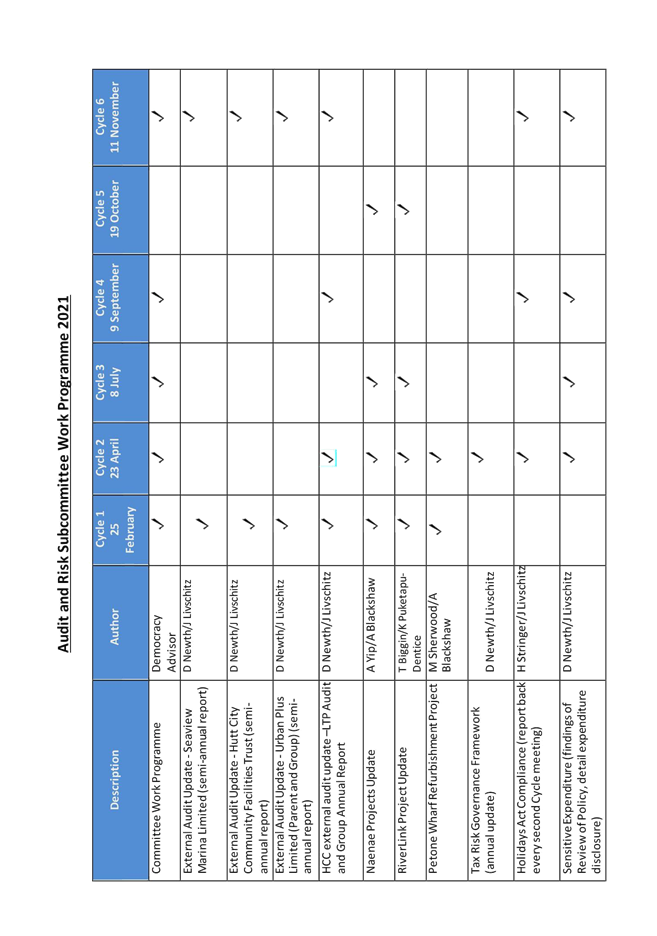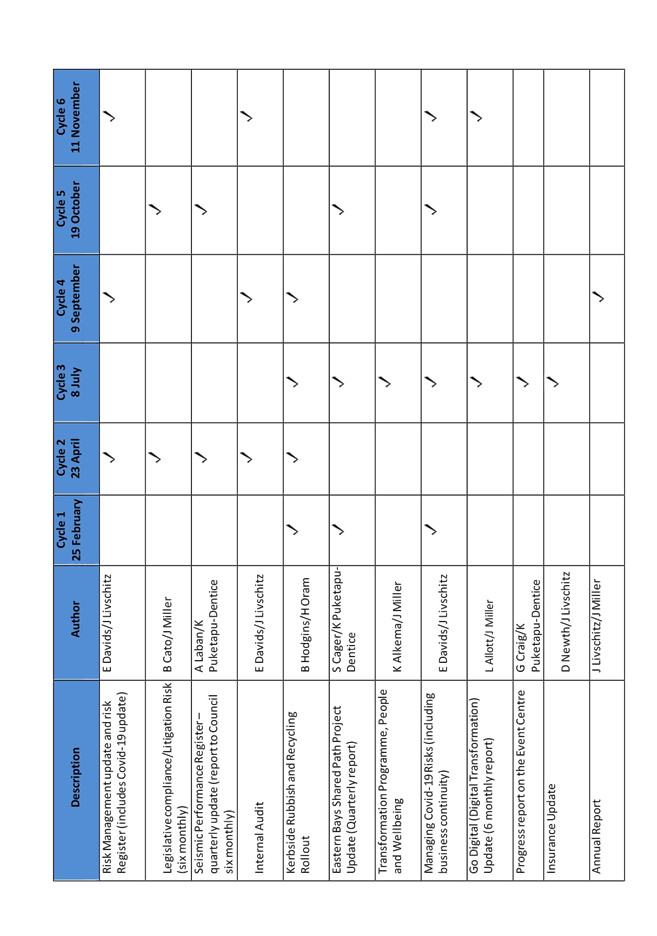KOMITI ITI AHUMONI I
TŪRARU|Audit and Risk Subcommittee
16
April 2021
Order
Paper for the meeting to be held in the
Council
Chambers, 2nd Floor, 30 Laings Road, Lower Hutt,
on:
Friday 23
April 2021 commencing at 2.00pm
Membership
|
Ms
Suzanne Tindal (Independent Chair)
|
|
|
Mayor C Barry (Deputy
Chair)
|
Cr D Bassett
|
|
Cr J Briggs
|
Cr S Edwards
|
|
Cr A Mitchell
|
Cr S Rasheed
|
|
Cr N Shaw
|
|
For
the dates and times of Council Meetings please visit www.huttcity.govt.nz
Have your say
You can speak under public
comment to items on the agenda to the Mayor and Councillors at this meeting.
Please let us know by noon the working day before the meeting. You can do this
by emailing DemocraticServicesTeam@huttcity.govt.nz or
calling the Democratic Services Team on 04 570 6666 | 0800 HUTT CITY

OVERVIEW:
This Subcommittee has a monitoring and advisory role in
reviewing the effectiveness of the manner in which Council discharges its
responsibilities in respect to governance, risk management and internal
control.
The Committee is primarily aligned with the Office of the
Chief Executive.
Its areas of focus are:
§ Oversight of risk
management and assurance across the Council Group with respect to risk that is
significant
§ Internal and external
audit and assurance
§ Health, safety and
wellbeing
§ Business continuity and resilience
§ Integrity and
investigations
§ Monitoring of compliance
with laws and regulations
§ Significant projects,
programmes of work and procurement, focussing on the appropriate management of
risk
§ The LTP, Annual Report and
other external financial reports required by statute.
PURPOSE:
To carry out a
monitoring and advisory role and provide objective advice and recommendations
around the effectiveness of the manner in which Council discharges its
responsibilities in respect to governance frameworks, risk management, internal
control systems and the Council Group’s financial management practices.
DELEGATIONS FOR THE SUBCOMMITTEE’S AREAS OF FOCUS:
§ The
Subcommittee has no decision-making powers other than those in these Terms of
Reference.
§ The
Subcommittee may request expert advice through the Chief Executive where
necessary.
§ The
Subcommittee may make recommendations to the Council and/or Chief Executive.
Risk Management:
§
Review, approve and monitor the
implementation of the risk management framework and strategy, including
significant risks to the Council Group.
§
Review the effectiveness of risk
management and internal control systems including all material financial,
operational, compliance and other material controls. This includes legislative
compliance (including health and safety), significant projects and programmes
of work, and significant procurement.
§
Review risk management reports
identifying new and/or emerging risks.
Assurance:
§
Review and approve, and monitor
the implementation of, the assurance strategy and detailed internal audit
coverage and annual work plans.
§
Review the coordination between
the risk and assurance functions, including the integration of the
Council’s risk profile with the internal audit programme. This includes
assurance over all material financial, operational, compliance and other
material controls. This includes legislative compliance (including health and
safety), significant projects and programmes of work, and significant
procurement.
§
Review the reports of the
assurance functions dealing with findings, conclusions and recommendations
(including assurance over risks pertaining to Council Controlled Organisations
and Council Controlled Trading Organisations that are significant to the
Council Group).
§
Review and monitor management’s
responsiveness to the findings and recommendations, inquiring into the reasons
that any recommendation is not acted upon.
Fraud and Integrity:
§
Review, approve and monitor the
implementation of the assurance strategy, including the fraud and integrity
aspects.
§
Review the arrangements in place
by which staff may, in confidence, raise concerns about possible improprieties
in matters of financial reporting, financial control or any other matters, and
ensure that there is proportionate and independent investigation of such
matters and appropriate follow-up action.
§
Review the procedures in
relation to the prevention, detection, reporting and investigation of bribery
and fraud.
§
Review and monitor policy and
process to manage conflicts of interest amongst elected and appointed members,
management, staff, consultants and contractors.
§
Review internal and external
reports related to possible improprieties, ethics, bribery and fraud related
incidents.
Statutory Reporting:
§
Review and monitor the integrity
of the Long Term Plan and Annual Report including statutory financial
statements and any other formal announcements relating to the Council’s
financial performance, focussing particularly on the areas listed below.
§
Compliance with, and the
appropriate application of, relevant accounting policies, practises and
accounting standards.
§
Compliance with applicable legal
requirements relevant to statutory reporting.
§
The consistency of application
of accounting pollicies, across reporting periods, and the Council Group.
§
Changes to accounting policies
and practices that may affect the way that accounts are presented.
§
Any decisions involving
significant judgement, estimation or uncertainty.
§
The extent to which financial
statements are affected by any unusual transactions and the way they are
disclosed.
§
The disclosures of contingent
liabilities and contingent assets.
§
The clarity of disclosures
generally.
§
The basis for the adoption of
the going concern assumption.
§
Significant adjustments
resulting from the audit.
External Audit:
§
Discuss with the external
auditor, before the audit commences, the nature, scope and fees of the external
audit, areas of audit focus, and error and materiality levels.
§
Review, with the external
auditors, representations required by elected members and senior management,
including representations as to the fraud and integrity control environment.
§
Review the external
auditor’s management letter and management responses, and inquire into
reasons for any recommendations not acted upon.
§
Where required, the Chair may
ask a senior representative of the Office of the Auditor General to attend
meetings of the Subcommittee to discuss the office’s plans, findings and
other matters of mutual interest.
Interaction with Council Controlled Organisations and Council Controlled
Trading Organisations:
§
Other committees dealing with
CCO and CCTO matters may refer matters to the Audit & Risk Subcommittee for
review and advice.
§
This Subcommittee will inquire
to ensure adequate processes at a governance level exist to identify and manage
risks within a CCO. Where an identified risk may impact on Council or the
Council Group, the Subcommittee will also ensure that all affected entities are
aware of and are appropriately managing the risk.
Matrix of
Experience, Skills and Personal Qualities
|
Experience,
Skills and Personal Qualities
|
Member A
|
Member B
|
Member C
|
Member
D
|
Independent
Chairperson
|
|
The
recommended combination of experience is:
|
|
·
financial
reporting
|
|
|
|
|
|
|
·
broad
governance experience
|
|
|
|
|
|
|
·
familiarity
with risk management disciplines
|
|
|
|
|
|
|
·
understanding
of internal control and assurance frameworks
|
|
|
|
|
|
|
·
good
understanding of the roles of internal and external audit
|
|
|
|
|
|
|
·
local
government expertise
|
|
|
|
|
|
|
For
an “advisory-oriented” audit committee, particular emphasis
should be placed on:
|
|
·
Strategy
|
|
|
|
|
|
|
·
Performance
management
|
|
|
|
|
|
|
·
Risk
management disciplines
|
|
|
|
|
|
|
In
determining the composition of the audit committee, the combined experience,
skills, and personal qualities of audit committee members is critical.
Members should bring:
|
|
·
the
ability to act independently and objectively
|
|
|
|
|
|
|
·
the
ability to ask relevant and pertinent questions, and evaluate the answers
|
|
|
|
|
|
|
·
the
ability to work constructively with management to achieve improvements
|
|
|
|
|
|
|
·
an
appreciation of the public entity’s culture and values, and a
determination to uphold these
|
|
|
|
|
|
|
·
a
proactive approach to advising the governing body and chief executive of
matters that require further attention
|
|
|
|
|
|
|
·
business
acumen
|
|
|
|
|
|
|
·
appropriate
diligence, time, effort, and commitment
|
|
|
|
|
|
|
·
the
ability to explain technical matters in their field to other members of the
audit committee
|
|
|
|
|
|
Komiti Iti Ahumoni I
Tūraru|Audit and Risk Subcommittee
Meeting
to be held in the Council Chambers, 2nd Floor, 30 Laings Road, Lower Hutt on
Friday
23 April 2021 commencing at 2.00pm.
ORDER
PAPER
Public Business
1. APOLOGIES
2. PUBLIC
COMMENT
Generally up to
30 minutes is set aside for public comment (three minutes per speaker on items appearing on the agenda). Speakers may be
asked questions on the matters they raise.
3. CONFLICT
OF INTEREST DECLARATIONS
Members
are reminded of the need to be vigilant to stand aside from decision making
when a conflict arises between their role as a member and any private or other
external interest they might have.
4. Recommendation to Council – 1 JUNE 2021
Risk management update, including the setting of risk
appetite (21/371)
Report
No. ARSC2021/2/79 by the Risk and Assurance Manager 10
Chair’s Recommendation:
|
“That the recommendations contained in the report be
endorsed.”
|
5. Kerbside Rubbish and Recycling Implementation
Project
(21/574)
Report
No. ARSC2021/2/80 by the Strategic Advisor 45
Chair’s Recommendation:
|
“That the recommendation contained in the report be endorsed.”
|
6. Petone Wharf Refurbishment Project (21/564)
Report
No. ARSC2021/2/81 by the Reserves Asset Manager 50
Chair’s Recommendation:
|
“That the recommendations contained in the report be
endorsed.”
|
7. RiverLink Project Update (21/587)
Report
No. ARSC2021/2/82 by the Project Manager Riverlink 56
Chair’s Recommendation:
|
“That the recommendations contained in the report be
endorsed.”
|
8. Naenae Projects Update April 2021 (21/565)
Memorandum
dated 6 April 2021 by the Strategic Projects Manager 64
Chair’s Recommendation:
|
“That the recommendation contained in the report be
endorsed.”
|
9. External Audit Update - Hutt City Council (21/560)
Report
No. ARSC2021/2/83 by the Financial Accounting Manager 69
Chair’s Recommendation:
|
“That the recommendations contained in the report be
endorsed.”
|
10. Annual Tax Compliance Update (21/575)
Report
No. ARSC2021/2/57 by the Financial Accounting Manager 129
Chair’s Recommendation:
|
“That the recommendation contained in the report be
endorsed.”
|
11. Sensitive Expenditure Policy Update and
Disclosures (21/577)
Report
No. ARSC2021/2/64 by the Financial Accounting Manager 161
Chair’s Recommendation:
|
“That the recommendations contained in the report be
endorsed.”
|
12. Holidays Act 2003 Compliance (21/556)
Report
No. ARSC2021/2/84 by the Financial Transaction Services Manager 272
Chair’s Recommendation:
|
“That the recommendation contained in the report be
endorsed.”
|
13. Internal Audit Charter and Internal Audit Plan
2021-2024
(21/467)
Report
No. ARSC2021/2/85 by the Risk and Assurance Manager 277
Chair’s Recommendation:
|
“That the recommendations contained in the report be
endorsed.”
|
14. Legal Compliance and Litigation Risk Reporting (21/619)
Report
No. ARSC2021/2/98 by the Chief Legal Officer 294
Chair’s Recommendation:
|
“That the recommendations contained in the report be
endorsed.”
|
15. Seismic Performance Register (21/573)
Report
No. ARSC2021/2/86 by the Acting Facilities Manager 298
Chair’s Recommendation:
|
“That the recommendation contained in the report be
endorsed.”
|
16. Audit and Risk Work Programme 2021 (21/581)
Report
No. ARSC2021/2/58 by the Committee Advisor 301
Chair’s Recommendation:
|
“That the recommendation contained in the work
programme be endorsed.”
|
17. QUESTIONS
With reference to section 32 of
Standing Orders, before putting a question a member shall endeavour to obtain
the information. Questions shall be concise and in writing and handed to the
Chair prior to the commencement of the meeting.
Toi Lealofi
DEMOCRACY ADVISOR
 Audit and Risk
Subcommittee
Audit and Risk
Subcommittee
11 March 2021
File:
(21/371)
Report no:
ARSC2021/2/79
Risk management
update, including the setting of risk appetite
Purpose
of Report
1. The purpose of
this report is to provide an update to the Audit and Risk Subcommittee on
activities underway to maintain and improve risk management at Hutt City
Council (Council).
2. This report
includes a proposal for the Subcommittee to review and endorse the proposed
‘Risk appetite statement’ ahead of it being submitted to Council
for approval. The ‘Criteria for assessing risk’ is also presented
for review and endorsement by the Subcommittee.
3. The
Council’s risk register to 31 March 2021 is also reported to the
Subcommittee.
|
Recommendations
That the Subcommittee:
(1) notes and
receives the information in this report;
(2) notes the
risk management framework, as attached as Appendix 1 to the report.
(3) notes the
recommendation to develop ‘Risk appetite statement’;
(4) endorses
for approval by Council the draft ‘Risk appetite statement’ as
attached as Appendix 2 to the report. This recommendation will be considered
by Council on 1 June 2021;
(5) endorses
the ‘Roles and responsibilities for risk management at Hutt City
Council’ updated in respect of risk appetite aspects as attached as
Appendix 3 to the report;
(6) endorses
the updated risk rating assessment criteria as attached as Appendix 4 to the
report;
(7) notes the Risk Register as updated by the
Corporate Leadership Team, attached
as Appendix 5 to the report; and
(8) notes and
receives the Covid-19 risks update. Officers will update members at the
meeting if there are any changes to be reported during the meeting.
|
Background
4. The Risk and Assurance Manager provides a quarterly update
on the activities to maintain and improve Council’s risk framework. The
previous Risk Management Update was presented to the Audit and Risk
Subcommittee on 25 November 2020.
5. The risk management framework was previously updated in
March 2017. A review is currently underway. Updates so far include the risk
reporting from September 2020, the roles and responsibilities for risk
management and the establishment of the Risk Steering Group (the terms of reference for this cross council representation groups
were outlined to this Subcommittee on 17 September 2020).
6. Attached as Appendix
1 is the risk management framework.
7. The proposed risk documents in this report have been reviewed by
external risk consultant, Cecilia Tse. Cecilia is an industry leader in legal,
risk and assurance management, with many years of experience supporting
organisations in their risk maturity journey. Cecilia has provided guidance in
their development and confirmed that these are in line with industry best
practice and recognised international risk management standards and guidance
(ISO 31000:2018). Cecilia will be attending the Subcommittee meeting and
be supporting the presentation of this report.
Setting risk appetite
8. Attached as Appendix 2 to this report is the draft ‘Risk
appetite statement’ for review and endorsement by the Audit and Risk Subcommittee ahead of submission to Council for
approval.
9. Setting
risk appetite is a key first step in the risk management process.
10. The key objectives for setting risk appetite:
§ Enables
the sitting Council to exercise appropriate oversight and governance by setting
boundaries for the business activities;
§ Expresses
the sitting Council’s attitude to risk to promote a risk aware culture;
§ Provides
a framework for making business/risk based decisions;
§ Empower
staff to take more calculated risk; and
§ Limit staff from taking excessive
risk.
11. Risk appetite outlines the
amount of risk Hutt City Council is willing to accept in pursuit of its
strategies, priorities and business plans.
12. Risk appetite is set by the
Council. Council, through the Audit and Risk Subcommittee, expects to have
oversight on how risks are managed within the parameters set, through regular
risk monitoring and other reporting.
13. Council is prepared to take
appropriate, controlled risks to achieve its strategic objectives.
14. Risk appetite provides
boundaries for activities. When applied, it reduces/limits staff from taking
excessive risks and empowers staff to take more risks to achieve goals.
15. Risk appetite can be expressed in a number of ways to ensure that it is
commonly understood and consistently applied across the programme. In line with
other local Councils, the proposed risk appetite is expressed in the form of
high-level qualitative statement across key risk categories that aim to
articulate Council’s attitude and level of acceptance of different risks.
16. The risk
criteria matrix, tabled in this report, provides quantitative measures in some
areas.
17. The key risk appetite areas have been chosen as they are important to
local councils. The Council’s top risks have also been considered in
preparing these.
18. Various other local authorities’ appetite statements were reviewed as
part of the process, which included Crown Infrastructure Partners, Porirua City
Council and Auckland Council. The proposed appetite statement for
Hutt City Council is in line with other local authorities in New Zealand.
19. The Risk Steering Group[1], with cross council representation, was involved in the initial development of the appetite statement.
20. It is
important that the Council (with some responsibilities delegated to the Audit
and Risk Subcommittee) monitors compliance with the risk appetite set. This
will form part of the future monitoring and reporting to ARSC.
21. Once set,
Council requires management to effectively communicate this risk appetite
statement to all staff and to ensure that business plans and activities are
aligned accordingly.
22. Attached as Appendix 3
to the report, the “Roles and responsibilities for risk management’[2] have been
updated for risk appetite. I.e. Council sets the risk appetite and ARSC
monitors to ensure the Corporate Leadership Team are managing risk within those
boundaries.
Criteria for Assessing Risk
23. Risk
criteria are used to assess risk. It provides a consistent way to discuss,
analyze, evaluate and rate risk, in terms of its level of severity. This allows
risk to be ranked and mapped relative to each other and against risk appetite.
24. The risk
criteria were last updated in March 2017.
25. Risk
management aids the understanding and proactive management of risk exposures
and opportunities that may have a potential effect on Council’s strategic
priorities. To do this, it requires:
§ Consistent
language so that risks can be considered in a consistent and strategic way;
§ A guide
outlining different levels of likelihood of a particular risk occurring; and
§ A guide
outlining different levels of impact that an event may have.
26. Risk analysis may be
influenced by any divergence of opinions, biases, perceptions
of risk and judgements. Having documented criteria provides a consistent way to
discuss, assess, evaluate and prioritise risk at Council.
27. Risk
analysis and risk evaluation is part of risk assessment in the risk management
process.

ISO
31000:2018 Risk Management - Guidelines
28. ‘Risk’ can be defined as the effect of uncertainty on objectives.
An ‘effect’ is a
deviation from the expected. It can be positive, negative or both, and can
address, create or result in opportunities and threats.
Risk is usually expressed in terms
of risk sources, potential events, their likelihood and consequence.
Likelihood is the chance of something happening
Consequence is the result or effect of a particular event occurring that
impacts objectives.
29. A number of other council’s criteria were considered in the
development of the new criteria. The proposed criteria has been tailored and
chosen as a good fit for Hutt City Council and the context Council operates in.
The risk factors selected represent impacts that are important to Council.
30. Early
input of the impact/consequence thresholds was sought from subject matter
experts for each risk area. These are the managers who are technical/function
leads for the individual risk factors.
31. The Risk Steering Group, with cross council representation, was
involved in the initial development of the risk criteria.
Summary of updates to the criteria for
assessing risk:
32. Thresholds for Likelihood criteria have generally been adjusted upwards to
broaden the bands and align with other local authorities and accepted practice.
Consequence/Impact criteria:
33. The impact
criteria have five levels. This approach is largely consistent with most other
councils.
34. Impacts for
Financial, People, Legal, Regulatory and Compliance, Service Delivery,
Environmental and Trust, Confidence and Reputation have been updated better
align to other local authorities and public sector impact criteria.
35. NEW
thresholds for assessing project risk are proposed.
36. The risk rating table, as set
out in Appendix 4 attached to the report, has a legend that outlines the
response action required for each risk level. The response actions have been
updated to better define the escalation requirements
and expected risk treatment.
Council’s Risk Register
37. Attached as Appendix 5 to the report is
the risk register to 31 March 2021, as approved by the Corporate Leadership Team. The details the top risks at Hutt City Council.
38. The
risk registers were last put forward to Council’s Audit and Risk Subcommittee on
25 November 2020.
39. We
are reviewing top risk to ensure there is a focus on critical uncertainties and
effects that have a significant impact on Council objectives and operations.
The risk register is next due to be presented to this Subcommittee on 8 July
2021 and we expect a number of changes and refinements and rationalisations to
be made to top risks reported in the risk register. There are a number of
enhancements suggested by the risk consultant Cecilia Tse that will be taken up
in future risk registers.
40. The
risk register, as attached as Appendix 5, applies the updated risk criteria as
attached as Appendix 4.
41. The overall
risk ratings have remained unchanged. Mitigating actions have been separated
out between current and future controls. The residual risk is determined based
on current controls in place.
42. Individual meetings were held
with risk owners to update the risk register. The risk register has been
reviewed by the Risk Steering Group and a high-level review undertaken by the
external risk consultant, Cecilia Tse. The risks in the risk register are in
alignment to the top 10 risks identified by the Sector Manager Local Government
of the Office of the Auditor-General’s reflections on local
authorities’ approaches to managing risk.
43. Reporting of Top Risk is proposed, as opposed to the splitting out strategic
from operational risk. Risks included in the risk register provide a spot light
on the top risk. This is in line with organisations, such as Ministry of Social
Development, who won a risk management award for ‘Best Plain English; as
it removes any debate about whether a risk is strategic or operational.
44. A number of
previously reported risks have been rationalized to reflect this focus and will
be refined in future risks registers.
45. The
following risks, which were included in the last risk registered reported to
this subcommittee on 25 November 2020, are not captured under the risk register
for Top Risks. These will continue to be monitored via operational risk
registers by the respective business unit leads and escalated as required in
alignment with the risk assessment criteria set out in Appendix 4. This
includes:
a) The previously stated risk around Inadequate or
inconsistent systems or processes or internal controls, has been
rationalized and is impacts are captured by tops risks regarding procurement
and contract management, financial management and fraud/economic crime;
b) Insurance. Risk here continues to be managed through
our insurance lead, the Financial Accounting Manager who will provide an
Insurance Renewal Update to this Subcommittee on 8 July 2021. The last
Insurance Renewal Update (view) was
provided to this Subcommittee on 12 March 2020. Advice is provided by AON
insurance and Council is part of the Outer Wellington Shared Services risk
consortium;
c) The
potential withdraw of central government funding for the Healthy Families
initiative affects community's expectations of Council's support and services.
This continues to be tracked as an emerging risk.
46. Risk Appetite
is being put forward to this Subcommittee ahead of approval by Council at the
meeting on 1 June 2021. Until then, it is not proposed to apply the risk
appetite in the risk register, attached as Appendix 5.
COVID-19 Risks
47. An update
was provided to this Subcommittee on 25 February 2021 in the written report on Managing Covid-19 Risks and a comprehensive verbal update provided during that meeting.
Updates to this Subcommittee provide assurance that risk around Council’s
response to Covid-19 is being managed appropriately.
48. Hutt
City Council remains vigilant and ready to respond in the event of any resurgence of Covid-19.
49. Since the
update provided on 25 February 2021, on 28 February 2021 Auckland moved up
to Alert Level 3 and the rest of New Zealand to Alert Level 2. These alert
levels were moved back from 7 March 2021, with Auckland subsequently joining
the rest of the country in Alert Level 1 from 12 March 2021.
50. Council
continues to have a methodology in place for continuous service delivery to
seamlessly transition between Alert Levels 1, 2 and 3 and to manage and
minimise the risk of Covid-19.
51. Hutt
City Council is proud to be supporting the Ministry of Health’s efforts
to roll out the Covid-19 vaccine. This involves vaccinations being provided at
one of our centres to border workers’ household contacts and frontline
health and emergency workers. Five community centres are now in operation
across the region. A full site safety plan was submitted and approved prior to
the Walter Nash Centre being approved for use as a Covid-19 vaccine clinic, to
ensure the service could be provided safely for contractors, staff and other
facility users.
52. A
full update on Managing Covid-19 Risks will be provided to this Subcommittee on
8 July 2021.
53. The Chief Executive’s statement provided to each Council meeting and
the quarterly performance report to the Policy, Finance and Strategy Committee
also provides details on how Council is responding to Covid-19.
Options
54. Not applicable.
Climate
Change Impact and Considerations
55. The matters addressed in this
report have been considered in accordance with the process set out in
Council’s Climate Change
Considerations Guide.
56. The risk appetite statement for Strategy will have implications on future
actions/decisions associated with climate change and environmental risks.
57. The criteria
will be used to assess risk that has environmental implications.
Consultation
58. Not applicable.
Legal
Considerations
59. The risk appetite statement
for Compliance Risk will have implications on future actions/decisions.
60. The criteria will be used to
assess risk that has legal implications.
Financial
Considerations
61. The risk
appetite statement for Financial Risk will have implications on future
actions/decisions.
62. The criteria
will be used to assess risk that has financial implications.
Appendices
|
No.
|
Title
|
Page
|
|
1⇩
|
Appendix 1: Risk Management Framework
|
18
|
|
2⇩
|
Appendix 2: DRAFT Risk Appetite Statement - 2021
|
19
|
|
3⇩
|
Appendix 3: DRAFT Roles and Responsibilities for Risk
Management - 2021
|
21
|
|
4⇩
|
Appendix 4: Risk Assessment Criteria - 2021
|
25
|
|
5⇩
|
Appendix 5:Risk Register - Top Risk - March 2021
|
29
|
Author: Enid Davids
Risk and Assurance Manager
Approved By: Jenny Livschitz
Chief Financial Officer
|
Attachment 1
|
Appendix 1: Risk Management Framework
|

|
Attachment 2
|
Appendix 2 DRAFT Risk Appetite Statement - 2021
|


|
Attachment 3
|
Appendix 3: DRAFT Roles and Responsibilities for
Risk Management - 2021
|




|
Attachment 4
|
Appendix 4: Risk Assessment Criteria - 2021
|




|
Attachment 5
|
Appendix
5:Risk Register - Top Risk - March 2021
|
















 Audit and Risk
Subcommittee
Audit and Risk
Subcommittee
07 April 2021
File:
(21/574)
Report no:
ARSC2021/2/80
Kerbside Rubbish and
Recycling Implementation Project
Purpose
of Report
1. This report
provides an update on the project to implement the new kerbside rubbish and
recycling services with particular emphasis on risk management. This is the
second report to this Subcommittee following the initial report to the meeting
on 25 February 2021.
|
Recommendations
That the Subcommittee notes and
receives the report.
|
Update
2. A brief update of
the progress of the project is as follows:
· Multi-Unit
Developments have been visited and individual solutions determined. The
information has been sent to Waste Management Limited (WML) in preparation for
the roll-out.
· Meeting
held with Kainga Ora to work through possible roll-out issues and help develop
appropriate responses.
· Risk
mitigation planning workshop held to work out details for responding to worst
case scenarios.
· All
data sets for bin selection finalised and sent to WML for the roll-out.
· Bin
orders completed and first shipment due in late April. Note that this is a
three week delay due to shipping schedules affected by issues at Ports of
Auckland. This matter is further commented on under Risks and Issues.
· Assisted
service assessments have begun and have been programmed over April 2021.
There are 622 assessments to be made for either an assisted service or to
resolve a difficult access situation. WML and Council staff are jointly
conducting the assessments. Around 100 were completed as at 6 April 2021.
· Business
As Usual (BAU) processes have all been documented following workshops.
Dataprint New Zealand Limited has been contracted to make changes to the
existing Saber rates portal to accommodate new bin selections.
· Letters
sent to all Coast Road Wainuiomata residents outlining the solution and
measures being taken for this 80kmh road. A meeting was held with the
Wainuiomata Rural Resident’s Association to listen to concerns and get
feedback on the letter before sending.
· Letters
sent to all residents in private roads seeking a waiver for WML trucks to
access such roads. Note that if we do not get approval from all owners to
access a private road then residents will be required to wheel their bins to
the adjoining public road for them to be emptied.
· Truck
logos finalised and ordered.
· Information
booklet finalised and being printed.
· A
variety of communications planned for April/May to coincide with the
roll-out. This includes radio, newspaper and social media campaign.
· Bin
webpage (microsite) prepared and available to the public from 16 April
2021. This will include links to educational videos on recycling.
Risks
and issues
3. The following
table outlines the risks and issues, which are reported regularly as part of a
wider project update to the Corporate Leadership Team. The main risk to
the project has been, from the beginning, that of having sufficient resourcing
to have the service up and running within a tight timeframe.
4. A
copy of the Risk Register is attached as Appendix 1 to the report.
|
Risk
|
High,
Med, Low
|
Risk
Mitigation
|
|
COVID-19
resurgance (or other pandemic) resulting in lockdown, restricts ability to
roll-out bins in time for start of service on 1 July.
|
Med
|
Obtain
clearance from MBIE to classify roll out as an essential service to enable
roll-out to commence or continue.
Arrangement
in place with rubbish bag supplier to provide bags at short notice for
distribution throughout the City should they be required.
|
|
Bins or
vehicles not available on time to commence the service on 1 July
|
Low
|
Contingency
plans in place with WML to secure vehicles and bins from its existing
operations in NZ and with bag supplier should bins not be available.
|
|
BAU software
and processes in place on time to commence the service on 1 July
|
Low
|
Arrangements
to be put in place with Saber, used for the initial bin capture process, for
its software to be made available for BAU.
|
|
Issue
|
High,
Med, Low
|
Issue
Mitigation
|
|
Possibility
of misinformation circulated from those with a vested interest.
|
Med
|
Provide
Council and the community with factual independent advice based on the
business case and sound data.
|
|
Increased
opposition to the new services generated through social media and other
means.
|
Med
|
Coordinated
information campaign is in place to ensure reasons for change are clearly
outlined and appropriately socialised.
|
|
Adequate
resourcing required to ensure roll-out occurs on time.
|
Med
|
Additional
people resources, either new or re-prioritised from existing resources,
assigned to the project.
Budget
variation sought.
|
|
Organisational
change programme impacts project through loss of key staff or staff
engagement generally.
|
Med
|
Managed
change programme in place. Key staff separately contracted.
|
|
Three week
delay in delivery of bins
|
Med
|
The
subcontractor Rotaform had built in a six week contingency.
Subsequent
shipments have been re-routed to bypass Auckland.
Additional
staff and resources on board for assembly and delivery.
Working
Saturdays will claw back a week.
|
Climate
Change Impact and Considerations
5. Council’s
decision to opt for a rates funded rubbish and recycling bin service took into
account climate change considerations such as the use of electric vehicles and
reduction in the number of trucks operating the same
Appendices
|
No.
|
Title
|
Page
|
|
1⇩
|
Appendix 1: Kerbside Rubbish and Recycling Risk
Register
|
49
|
Author: Bruce Hodgins
Strategic Advisor
Approved By: Helen Oram
Director Environment and Sustainability
|
Attachment 1
|
Appendix 1: Kerbside Rubbish and Recycling Risk
Register
|

 Audit and Risk Subcommittee
Audit and Risk Subcommittee
06 April 2021
File:
(21/564)
Report no:
ARSC2021/2/81
Petone Wharf
Refurbishment Project
Purpose
of Report
1. The
purpose of this report is to inform the sub-committee on the risk profile of
the proposed Petone Wharf refurbishment project and the way risks are and will
be managed, including lessons learned from previous wharf projects.
|
Recommendations
That the Subcommittee:
(1) notes
and receives the information contained in the report;
(2) notes
the draft Project Risk Register attached as Appendix 1 to the report; and
(3) notes
that a Quantitative Risk Analysis process is being carried out for the
project.
For the reasons to understand
the risks and implications of undertaking this project.
|
Background
2. A
summary history of Petone Wharf is included in a report to the Long Term Plan /
Annual Plan sub-committee meeting held on 10 February 2021 and an update was
presented in a report to the Audit and Risk sub-committee on 25 February
2021. Refer to following links:
http://infocouncil.huttcity.govt.nz/Open/2021/02/LTPAP_10022021_AGN_2879_AT_WEB.htm
http://infocouncil.huttcity.govt.nz/Open/2021/02/ARSC_25022021_AGN_2886_AT_WEB.htm
3. Several
structural piles were damaged during two minor earthquakes in December 2020 and
January 2021, resulting in closure of the wharf to the public and commencement
of emergency works.
4. The
aim of the works was to repair the damage and complete some planned maintenance
work ahead of schedule. This work is now complete.
5. Concurrently
Calibre Consulting Limited (Calibre) has been carrying out a detailed condition
assessment on the structure of Petone and other wharf structures. The
report is due back on 8 April 2021.
6. Preliminary
observations suggest that there are a number of piles on the wharf head that
are in very poor condition and we are likely to receive the recommendation that
the wharf should remain closed until these piles are repaired.
7. The
Council is consulting, through the Long Term Plan (LTP) process, on a
recommendation to bring forward the full refurbishment of Petone Wharf to
address these maintenance concerns in the short term.
Discussion
8. The
Petone Wharf currently poses potential health and safety risks related to the
structural integrity of the piles and supports. This risk is currently being
managed through closure of the wharf, completion of emergency works and
commissioning of a detailed engineering condition survey.
9. The
proposed Petone Wharf refurbishment project holds inherent risks to Council,
most notably that of financial uncertainties and reputational risk. These
are recorded in the table in appendix 1 and discussed in more detail below.
10. Whilst
we are currently undertaking detailed condition assessment of the structural
timbers on Petone Wharf, there is still a lot of work that cannot be identified
until the concrete deck is removed and deck beams are exposed and/or timbers
are dismantled. Damage by Teredo Worm for example impacts on the internal
part of the timber (particularly the piles) and often cannot be seen from the
outside. Internal rotting also can sometimes look solid from the outside
of the timber. This means that there is a high likelihood of structural replacements
needed that cannot be accurately planned for.
11. The
main learning from the Days Bay and Rona Bay refurbishments is to adopt a
‘worst case’ approach in terms of the number of pile and beam
needing replacement. Both Days and Rona Bay projects required a budget
increase, despite a contingency a budget of 25% in the contract, which was due
mainly to an underestimate of the number of piles and beams requiring
replacement. The condition of beams which from the underside looked to be
in reasonable condition but once the deck was removed were found to be in poor
condition in sections on top where rainwater had seeped in from the deck.
12. The
difficulty in assessing the condition of the piles and the delays due to
inclement weather were also factors which contributed to the cost increases.
13. The
total project cost for Rona Bay Wharf refurbishment was $4.2M against a budget
of $3.9M. Total forecasted spend for Days Bay wharf is $4.6M including an
approved budget adjustment of $700,000. The original budget was $3.9M.
14. Calibre
has considered these learnings when assessing the scope of the Petone Wharf
refurbishment for the likely type and quantity of works along with the time
that it will take. In addition Calibre will take a highly conservative
approach to pile upgrades in the knowledge that there is some likelihood of
damage between the high and low water marks to piles due to Teredo worm.
15. Additionally
officers are undertaking a Quantitative Risk Assessment process in order to
provide a ‘worst case’ cost, accommodating all the risk factors and
their likelihood. This process can begin once we have received the
condition assessment and scope of work. This will provide some security
and predictability around these works, reducing the risk factor.
16. While Council will not receive the detailed
condition assessment until April 2021 an initial rough order cost estimate of
$14M has been provided by engineers based on predicted condition and knowledge
from recently completed works. Due to the high level of uncertainty and risk a
budget estimate of $15M to $20M is currently being used for the draft LTP
consultation. An update will be reported to the LTP subcommittee on 20
May 2021.
17. The
other top risks associated with this project are:
a. Health and
Safety – Given the structural uncertainties associated with the wharf
there is the risk of further loss of piles and localised structural
failure. This risk is low and managed through closure of the wharf.
Contractors completing the repairs will set up procedures to keep staff safe
during works, which will be approved by a qualified engineer.
b. Weather –
Petone is subject to strong southerly and north-westerly winds which make
conditions unsafe to work in. This could affect programming and is
difficult to plan for. An assessment of non-work days will be made based
on previous year’s weather information.
c. Supply
– The work is reliant on supply of large hardwood timbers, generally from
South America. These are becoming more difficult to source and questions are
being raised about the ethics and sustainability of this practice. This
will be managed by investigating alternative wood sources, such as Australia
and alternative products including concrete or composite materials.
d. Heritage –
Petone Wharf is a heritage structure under the District Plan and has been
nominated for Heritage status with Heritage New Zealand. This could add a
level of complexity to the project increasing time and costs.
e. Communications
- Previous communication stated a completion date for re-opening. This
commitment cannot now be met and could lead to loss of trust. This is
being managed through a communications plan supported by evidence and
information. This includes early communication to the Chair of the Petone Community
Board and other key stakeholders and signage on-site.
18. If
the project is approved by Council (June 2021) and budget brought forward,
project updates will be provided to the Audit and Risk Sub-committee on project
initiation and then six (6) monthly until completion.
Options
19. There
are no options of this report.
Climate
Change Impact and Considerations
20. The
matters addressed in this report have been considered in accordance with the
process set out in Council’s Climate Change
Considerations Guide.
21. The
proposed project includes sourcing of timbers from South America to meet
heritage requirements which raise sustainability and carbon emissions concerns.
Alternative acceptable materials and or sourcing will be explored during
project initiation.
22. Being
located on the foreshore the project will be subject to sea level rise
considerations which will need to be addressed through project scoping
Consultation
23. In 2017, as part of the annual plan consultation, Council engaged
with the community over the future of all four wharves. Additionally public
meetings were held in Petone and Eastbourne and wider consultation was carried
out. As a result the decision was made to refurbish Petone Wharf, including the
removal of 48m off the outer end. As referenced earlier, the current decision
on the wharf is also included in the draft LTP 2021-24, which is currently
being consulted on.
Legal
Considerations
24. There
are no legal considerations at this time.
Financial
Considerations
25. The following tables set out the proposed
changes to budget for the Petone Wharf Project which is currently being
consulted on.
Table 1: Operational budgets
|
Petone Wharf
|
2020/21
|
2021/22
|
2022/23
|
2023/24
|
2024/25
|
2025-2031
|
Total
|
|
Annual Plan
2020/21
|
|
|
|
|
|
|
$0
|
|
LTP
2021-2031
|
|
$0.5M
|
|
|
|
|
$0.5M
|
|
Variance
|
|
$0.5M
|
|
|
|
|
$0.5M
|
Table 2: Capital budgets
|
Petone Wharf
|
2020/21
|
2021/22
|
2022/23
|
2023/24
|
2024/25
|
2025-2032
|
Total
|
|
Annual Plan
2020/21
|
|
$0.8M
|
$0
|
|
|
$8M
|
$8.8M
|
|
LTP
2021-2031
|
$0.45M
|
$7.05M
|
$7-12M
|
|
|
|
$14.5M-
$19.5M
|
|
Variance
|
$0.45M
|
$6.25M
|
$7-12M
|
|
|
|
$5.7M
- $10.7M
|
26. Updated cost estimates and cost risks will be reported to the LTP/AP
Subcommittee on May 20 once all additional information has been received.
Appendices
|
No.
|
Title
|
Page
|
|
1⇩
|
Appendix 1: Draft Project Risk Register
|
55
|
Author: Janet Lawson
Reserves Asset Manager
Author: Marcus Sherwood
Head of Parks and Recreation
Author: Aaron Marsh
Team Leader Parks
Reviewed By: Jenny Livschitz
Group Chief Financial Officer
Approved By: Andrea Blackshaw
Director Neighbourhoods and Communities
|
Attachment 1
|
Appendix 1: Draft Project Risk Register
|
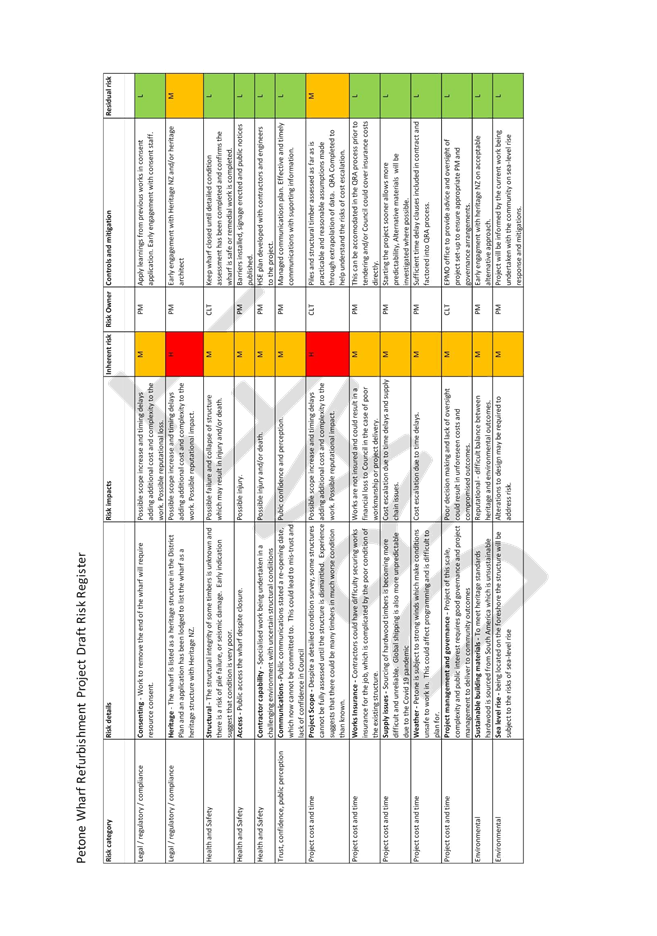
 Audit and Risk Subcommittee
Audit and Risk Subcommittee
09 April 2021
File:
(21/587)
Report no:
ARSC2021/2/82
RiverLink Project
Update
Purpose
of Report
1. The
purpose of this report is to update the Subcommittee on the RiverLink Project
(the Project) since the last report dated 5 February 2021.
|
Recommendations
That the Subcommittee:
(1) receives
and notes the information contained in the report;
(2) notes
the updated Project Risk Register attached as Appendix 1 to the report; and
(3) notes
that initial cost estimates for the RiverLink project have been received and
are currently being reviewed by the project office and project partner
representatives
|
Project Update
2. The consultant team have been progressing towards a 31
May 2021 submission date for the resource consent application. There are
some concerns about the quality of the resource consent application. The
consultant team have noted this concern to the RiverLink Project Partner Board
who has agreed to an extended resource consent submission date of 30 June 2021.
3. The extended resource consent submission deadline from
31 May to 30 June 2021 is of low risk to Hutt City Council (HCC). However, Waka
Kotahi has funding and construction deadlines and Greater Wellington Regional
Council (GWRC) has a very strong desire to address the flooding risk to Hutt
City as soon as possible.
4. In considering the extended resource consent
submission deadline the RiverLink Project Partner Board agreed that producing a
high quality resource consent application was priority one as it would mitigate
risks around a protracted approval process.
5. In parallel with finalising the resource consent submission,
other work is required to achieve milestones associated with the delivery of
the Project. All three partner organisations have gaps in their client-side
teams which is making progress on this aspect of the Project slower. This could
compromise the milestones that Waka Kotahi needs to achieve under their New
Zealand Upgrade Programme (NZUP). Funding approvals from the Waka Kotahi Board
is scheduled for late May 2021.
6. The RiverLink Project Partner Board is currently
seeking a Project Director –Delivery to fill this capability and capacity
gap. It is anticipated that the Project Director – Delivery would build a
small team to work in conjunction with project office established for the
consenting phase of the Project.
7. An
independent Quantity Surveyor has been working on cost
estimates for the whole project. These cost estimates and the apportionment
between partners arrived with the project team on 16 and 17 March 2021.
8. The project partners have agreed in principle to a ‘hybrid
alliance’ delivery model for RiverLink. The commercial framework and
memorandum of understanding are currently under development. A workshop with
HCC and GWRC Councillors on the proposed hybrid alliance delivery model took
place in March 2021.
Project Governance
9. The Project
Governance structure is shown on the proceeding page.
10. The Project is overseen by
the RiverLink Project Partner Board which includes two representatives each
from the three partner entities (Greater Wellington Regional Council, Hutt City
Council and Waka Kōtahi New Zealand Transport Agency).
11. The CEO Relationships Board
provides a further layer of oversight for the project and provides a forum for
strategic and relationship matters and issues within each of the respective
organisation to be identified and addressed.
12. The Project
will also be reporting into the recently created internal Hutt City
Council Major Projects Board.
13. A paper will be prepared for
approval by Council which sets out the appropriate project governance process,
delegations and reporting lines as the Project transitions into the delivery
phase.


Risk
14. The Project Risk Register is attached as Appendix 1 to the
report and will be updated ahead of the next
subcommittee meeting to align with the project delivery decisions taken. The key risks are as follows:
a. Failure
to meet NZUP milestones compromising Waka Kotahi funding approvals
b. Managing
the relationship among partner organisations
c. Hutt
City Council does not achieve the objectives and deliverables expected from the
Project - against stakeholder expectations, needs and outcomes for the city.
d. Managing
the uncertainties around the allocation and availability of sufficient budget
to deliver project
Project Milestones
|
Milestone
|
Date
|
|
Submission of
resource consent application
* best estimate at this point in time
|
31 May 21 – Delayed to 30 June 2021
|
|
Design/construction contract awarded
|
First quarter 22
|
|
Construction start on site
|
Last quarter 22
|
|
Construction completion (Melling interchange 1st,
followed by stopbanks, landscaping and regeneration)
|
2026-27
|
Financial
Considerations
15. As a part of the 2018-2028
LTP, Council agreed to a budget of $57M (all numbers are inflated) for the
design, consenting and delivery of the RiverLink Project. An increase of $64.5M is being sought as a part of the draft 2021-2031 LTP. This
brings the total budget from $57M to a proposed $121.5M.
16. The
increased capital investment includes:
a. Further
property purchases
b. Upgrades to the
local transport network including connections with Melling Bridge
c. Cost increases
associated with the pedestrian bridge and the river edge / promenade
construction and enhancements
d. Provision of
project contingency
e. Project
delivery costs
17. Co-funding
from Waka Kōtahi (for roading projects) and revenue from the sale of surplus
land in later years is expected to be $27.5M.
18. Table 1
below shows the budget in the draft LTP 2021-2031. The public consultation on
the draft LTP is occurring from 6 April 2021 to 6 May 2021. The final LTP
2021-2031 is scheduled for adoption by the Council on 30 June 2021.
19. In line
with the Council’s Revenue and Financing Policy, Council’s share of the capital expenditure will be funded from
borrowing and rates.
Table 1: 2021/31 Draft LTP Budget
for RiverLink
|
Financial year
$m
|
2020/21
|
2021/22
|
2022/23
|
2023/24
|
2024 /25
|
2025-2031
|
Total
|
|
Draft LTP 2021-2031
|
2.72
|
10.90
|
25.09
|
23.67
|
20.79
|
38.32
|
121.49
|
20. Next steps
for cost estimates:
a. Cost
workshops with the Quantity Surveyor and partner organisations.
b. An
independent expert is to be engaged to review the cost estimates produced by
the Quantity Surveyor.
c. A fully
costed budget plan is likely to be available by early May.
Partners and Stakeholders
21. A high level external
stakeholders and partners list has been developed:
· Partners
o Greater Wellington Regional
Council
o Hutt City Council
o Waka Kōtahi
· Iwi Partners
o Taranaki Whānui
o Ngāti Toa
· Stakeholders
o Waka Kōtahi (co-funding of
specific transport initiatives)
o Residents and business alongside
the river edge
o Hutt City rate payers and
residents
o General public regional/national
o Community boards
o Local Schools
o Media
Climate
Change Impact and Considerations
22. The Project seeks to ensure
greater resilience for Hutt City against flooding and the effects of climate
change. The designs for the Project have taken into account climate change
modelling for the Hutt River / Te Awa Kairangi.
Consultation
23. Extensive community
engagement has been undertaken since 2016 on the Project with open days,
workshops, online and printed media. In November 2020 and February 2021 the
project office undertook open days in order to inform the resource consenting
process. Over 400 people participated in the open days.
24. The request for a further increase
in the RiverLink Project budget (noted at para 15 above) has been included in
the consultation document for the Long Term Plan which commenced on 6 April
2021 and closes on 6 May 2021.
Legal
Considerations
25. The only legal agreement HCC
has entered into is the RiverLink Project Partner Agreement which sets out each
partner’s responsibilities and requirements for the partnership.
Appendices
|
No.
|
Title
|
Page
|
|
1⇩
|
Appendix 1: Riverlink Risk Register - February 2021
|
62
|
Author: Tom Biggin
Project Manager Riverlink
Approved By: Kara Puketapu-Dentice
Director Economy and Development
|
Attachment 1
|
Appendix 1: Riverlink Risk Register - February 2021
|
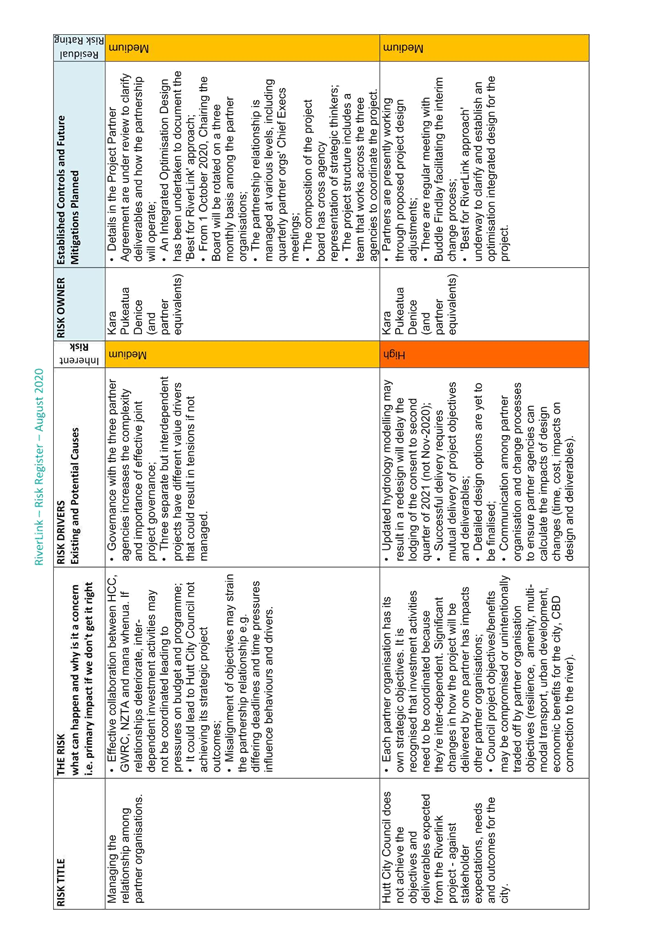
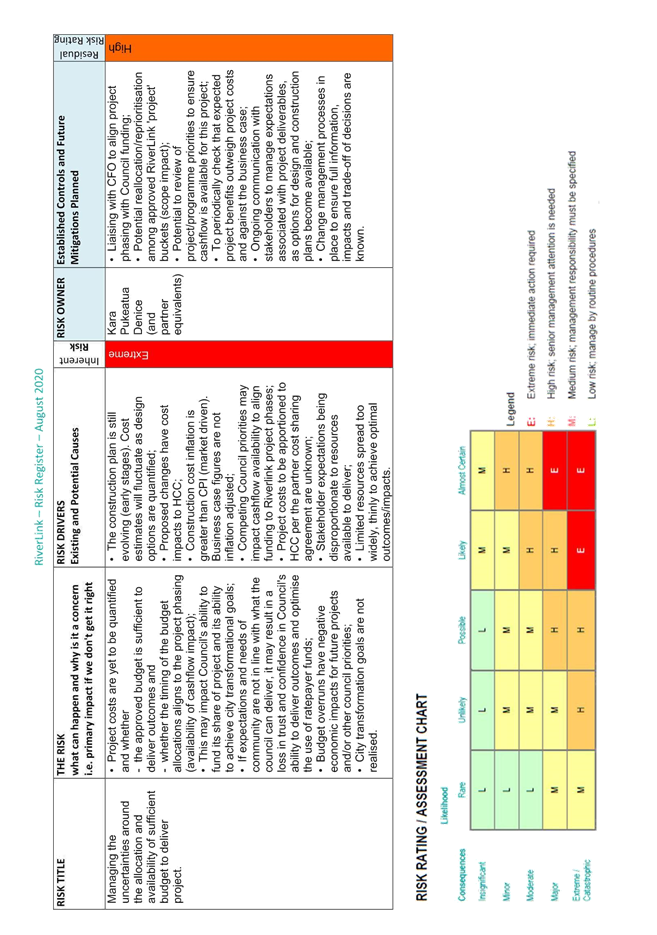
MEMORANDUM 66 23
April 2021
 Our Reference 21/565
Our Reference 21/565
TO: Chair
and Members
Audit and Risk Subcommittee
FROM: Allen
Yip
DATE: 06
April 2021
SUBJECT: Naenae Projects Update April 2021
|
Recommendation
That the Subcommittee receives and notes the information.
|
Purpose
of Memorandum
1. To provide an
update the Subcommittee on the progress and management of the Naenae Project
(pool and town centre development) since the last report on 25 February 2021.
Project Update
2. Following
completion of the Quantitative Risk Analysis, the Long Term Plan Subcommittee
agreed with the Project Board’s recommendation to include the new project
cost estimate of $68M to be included in the draft Long Term plan (LTP), along
with the original $54M option. This is currently out for consultation
with submissions to close in May 2021, and the decisions on the options adopted
will be made in late June 2021.
3. The new project
cost estimate factors in escalating costs in construction resulting from global
supply chain disruption, increased demand for skilled labour, potential site
issues that may be discovered during construction (including allowing for
potential asbestos removal), and the inclusion of improved technology that
would support Council’s sustainability objectives in reducing the
operating costs of the new facility. The original cost estimate would
deliver a pool with lower levels of facility and services.
4. The
project’s focus at this stage is:
a. Project Planning and
documentation
b. Procurement of the
specialist services and demolition contractors
5. The procurement
process for the Multi-Disciplinary Design Team commenced in February 2021, with
an appointment expected in April 2021.
a. This was done by a
selected tender process due to the specialised nature of the project and the
limited number of firms that would meet the qualification standards.
b. We received three very
good quality responses.
c. Following an initial
evaluation all three were interviewed
d. The assessment criteria
included:
i. Methodology
ii. Capability &
Capacity
iii. Innovation &
Sustainability
iv. Price
e. Following this
process, we have been able to identify a preferred respondent.
Negotiations are currently underway, but expect to conclude by the mid-April
2021, with an appointment able to be announced by the end of the April 2021.
6. Other
project procurement activities include:
a. Appointment of a
Heritage Architect (Ian Bowman)
b. Invitations for
Registrations of Interest for Quantity Surveyor
c. Invitations for Requests
for Proposal for Asbestos Survey
d. Advance Notice for
Demolition Contractors issued to market
7. The project team
are looking to programme physical works on site, the first being the relocation
of an electricity substation that is currently housed within the pool.
This substation services the pool and Hillary Court. It must be moved
before the main demolition work commences. The project team and
Wellington Electricity are working together to progress this.
8. The Crown
Infrastructure Partners (CIP) co-funding of $27M creates some obligations from
the project, including monthly reporting and meeting our agreed
timelines. The monthly reports are being submitted on time. And
while we are experiencing delays in the timelines, we are in constant
communication with CIP about this, and demonstrating to them that we are making
progress.
9. The Naenae
Community Advisory Group (CAG) held its initiation meeting on 11 March 2021.
The group were given an update on the project, and discussed and agreed on some
aspects of how they will operate. The next meeting (date TBC) will focus
on prioritising the recommended work programme for the spatial plan.
Financial considerations
10. The Long Term Plan
Subcommittee noted that the Project Board’s preferred option was for a
capital investment cost of $68M for Naenae Pool. However this will not be
confirmed as the project budget until the conclusion of the LTP consultation
process.
11. The project budget has a
significant influence on the design process, so this this uncertainty will be factored
in when the design process commences in late April 2021.
Risk
12. The updated Project Risk
Register is attached as Appendix 1 to the report.
The key risks at this stage are:
a. While
the project budget will be certain when the LTP consultation process is
complete, the uncertainty around project cost will remain. The risk
will be reviewed as each new phase of the project brings more certainty.
b. Uncertainty about ground conditions and
contamination, which will not be known until testing is able to be done. The
project team has prioritised the demolition which will allow the testing.
The risk based approach to costing will ensure sufficient provision to address
this.
13. A risk workshop was scheduled
to be held on 15 April, which signifies the commencement of the first design
phase. This will be run by AECOM (project managers and engineers to the
project) and include Council officers.
Climate Change Impact and
Considerations
14. The matters addressed in this
report have been considered in accordance with the process set out in
Council’s Climate Change Considerations Guide.
15. While all Council projects
will be delivered in a way that supports Council’s Guidelines, the cost
option chosen may have an impact on the actual Environmentally Sustainable
Design and Innovation options.
16. Sustainability and impact on
the environment will be a key driver in the design process.
Consultation
17. The two investment options
for the project are part of the LTP consultation process.
Legal Considerations
18. At the conclusion of the Long
Term Plan process the Project Board will seek delegated authority to make
project decisions that are within the agreed project budget and scope.
19. Where decisions are required
outside this, the Board will report to the Communities Committee and on risks
to the Audit and Risk Subcommittee.
Appendices
|
No.
|
Title
|
Page
|
|
1⇩
|
Appendix 1: Naenae Projects - Risk Register
|
67
|
Author: Allen
Yip
Strategic Projects Manager
Approved By: Andrea Blackshaw
Director Neighbourhoods and Communities
|
Attachment 1
|
Appendix 1: Naenae Projects - Risk Register
|
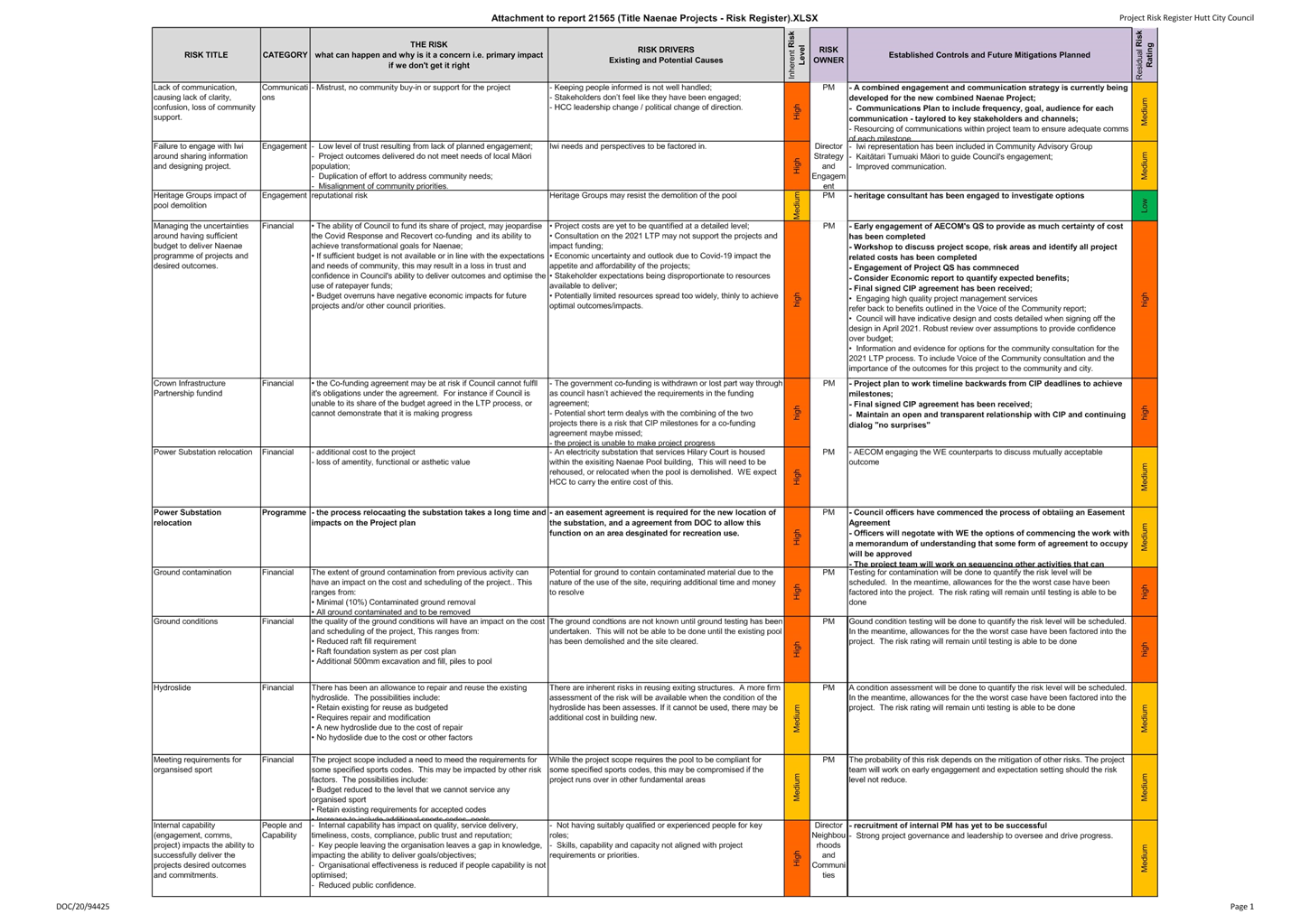

 Audit and Risk Subcommittee
Audit and Risk Subcommittee
01 April 2021
File:
(21/560)
Report no:
ARSC2021/2/83
External Audit Update
- Hutt City Council
Purpose
of Report
1. To provide an
update on the Audit NZ management report on the audit for the Group Annual
Report 2019/20.
2. To provide an
update on the Audit NZ management report on the audit of the Long Term Plan
2021-2031.
3. The Audit New
Zealand Audit Director will attend the Subcommittee meeting.
|
Recommendations
That the Subcommittee:
(1) notes
the Audit New Zealand management report on the audit of the Group Annual
Report for the year ended 30 June 2020, attached as Appendix 1 to the report;
and
(2)
notes the Audit NZ management report on the audit of the Long Term
Plan 2021-2031, attached as Appendix 3 to the report.
|
Update on the audit of the Group
Annual Report 2019/20
4. The Group Annual
Report 2019/20 was finalised and adopted by Council on 21 December 2020 and the
Audit NZ audit opinion issued. This was ahead of the statutory deadline of 31
December 2020.
5. There were audit
issues and delays in finalising the Wellington Water Ltd audit which impacted
all shareholder Council’s in the Wellington region. This was largely in
relation to Wellington Water performance reporting information.
6. Whilst an
unmodified audit opinion was issued on the Hutt City Council (HCC) financial
statements, there was a modified opinion issued on certain performance
information relating to the Department of Internal Affairs mandatory
performance measures for Council’s water activities. This was due to
significant issues identified with the Wellington Water underlying systems and
information.
7. An improvement
plan has been developed by Wellington Water to address these matters, with
implementation underway in 2020/21. It is expected the audit issues will not
however be fully resolved before 30 June 2021. As a result the Hutt City
Council audit opinion is expected to be impacted in a similar manner. Officers
are working proactively with Wellington Water and Audit NZ to plan ahead for
the next audit and manage the risks related to the performance reporting
issues. It is important to note that this impacts all Wellington Water
shareholder Councils.
8. The Audit NZ
interim management report for the year ended 30 June 2020 was reported to the
Audit and Risk Subcommittee on the 17 September 2020. It was noted in the
report that there had been good progress achieved in closing out long-standing
audit recommendations. The table that follows provides a summary of all the
items reported as closed.
Table 1: Summary of audit recommendations previously
closed out
|
|
Audit
NZ recommendation
|
First
raised by ANZ
|
Date
reported as closed per ANZ
|
|
1.
|
Information
and communications Technology Policies require review
|
2016/17
|
Dec
2019
|
|
2.
|
Lack
of formal documentation of cost allocation percentages
|
2016/17
|
Dec
2019
|
|
3.
|
Revenue
from the pools and Dowse – reconciliation process
|
2015/16
|
Dec
2019
|
|
4.
|
Creditor
and payroll Masterfile changes
|
2018/19
|
July
2020
|
|
5.
|
Process
for reviewing policies
|
2017/18
|
July
2020
|
|
6.
|
Annual
review of network access rights not performed
|
2016/17
|
July
2020
|
|
7.
|
Financial
delegations policy and related controls
|
2015/16
|
July
2020
|
|
8.
|
Property,
plant and equipment – policy and procedure improvements
|
2014/15
|
July
2020
|
9. The final Audit NZ
management report for the Group Annual Report 2019/20 was received by HCC on 14
April 2021. A summary of the audit findings are presented in table 2 that
follows. Table 3 provides information on audit recommendations that were closed
out through the final audit process. The full detailed report is available in
Appendix 1.
Table 2: Summary of audit recommendations after final audit
|
Improvement
recommendation by category
|
Number
|
Commentary
|
|
In progress to be implemented/ resolved
|
1
|
Network and payroll passwords settings can be
improved
|
|
Limited progress in addressing
|
2
|
IT Disaster Recovery Plans require testing. High
level of manual adjustments in reporting “number of new
dwellings”.
|
|
New recommendations
|
3
|
Wellington Water performance reporting issues.
Non-compliance with mandatory performance measure guidance. Approval of the
Chief Executive’s and Mayor’s expenditure.
|
|
Total
|
6
|
|
Table 3:
Summary of audit recommendations closed out at final audit
|
|
Audit
NZ recommendation
|
First
raised by ANZ
|
Date
reported as closed per ANZ
|
|
1.
|
Accuracy
and reliability of Rating Information Database data
|
2018/19
|
Apr
2021
|
|
2.
|
Performance
reporting source of information not disclosed appropriately
|
2018/19
|
Apr
2021
|
|
3.
|
Outdated
Procurement Policy
|
2017/18
|
Apr
2021
|
|
4.
|
Sensitive
expenditure
|
2016/17
|
Apr
2021
|
|
5.
|
Independent
review of journals
|
2015/16
|
Apr
2021
|
|
6.
|
Documented
procedures for key systems
|
2014/15
|
April
2021
|
10. Approval of the Chief
Executive’s and Mayor’s expenditure: The audit report comments that
the Council “should consider the appropriateness of the current
approval process and consider updating the process to include the Mayor’s
expenditure being approved by the independent Chair of the Audit and Risk
Committee”. Officers can confirm that this audit recommendation has
been agreed to and is now in place.
Update on the audit of the Long Term
Plan 2021-2031(LTP)
11. The engagement letter for the
audit of the consultation document and Long Term Plan 2021-2031 was reported to
the Audit and Risk Subcommittee on 25 February 2021. The audit plan noted that
the main focus areas for the audit include:
o Impact
of the economic downturn caused by Covid-19 on Council’s forecasts
o Financial
strategy and infrastructure strategy
o Assumptions
o Quality
of asset-related forecasting information.
12. The first stage of the audit
was successfully completed and the audit opinion issued on the 31 March 2021.
The next stage of the audit will be completed in June 2021 when the final LTP
Council decisions are progressed and the LTP adopted. The Audit NZ
management report on the first stage of the audit is attached as Appendix
3.
13. An unmodified audit report
was issued by Audit NZ. There were three emphasis of matter paragraphs in the
audit report drawing attention to the disclosure in the Consultation Document
(CD) on the following:
1. Uncertainty over three
waters reforms (all councils across New Zealand received this audit point )
2. Uncertainty over the
delivery of the capital programme (many councils across New Zealand received
this audit point)
3. Uncertainty over the
three waters forecasts (all Wellington Water shareholder councils were impacted
by this audit point).
14. There is a range of positive
feedback and endorsement from Audit NZ for the approach taken in the
preparation of the Consultation Document and underlying Draft LTP 2021-2031.
Extracts of some key comments from the audit report follow:
- We
reviewed the Council’s approach to considering the impact of Covid‑19
and how this has been factored into the underlying policies, strategies and
assumptions used to prepare the LTP………We are therefore
satisfied that Council’s assumptions in respect of Covid‑19 are
reasonable and this has been appropriately factored into the underlying
information.
- The
Council clearly documents the key principles underlying its financial
strategy. It focuses on strong fiscal management whilst addressing the
growing demands for increased capital expenditure in core infrastructure
assets. Funding implications detailed in the infrastructure strategy have been
consistently reflected in the financial strategy. We concluded that the
financial strategy is financially prudent and based on reasonable assumptions.
- Overall,
we are satisfied that the infrastructure strategy can demonstrate
accountability to the community. It describes what the Council wants to
achieve, the challenges and how it plans to respond so that it can continue to
deliver the outcomes that have been set by the Council.
- The
quality of the Council’s financial forecasts is significantly affected by
the assumptions on which they are based. We reviewed the appropriateness of the
significant assumptions used by the Council to prepare the
financial forecasts and were satisfied that these were reasonable at the time
of preparing the CD.
Table 4: Key audit findings
with improvement opportunities for the future
|
|
Audit
finding
|
Action
underway
|
|
1.
|
Initial
draft of the CD included a very large number of consultation topics, some of
which did not meet the Council’s significance and engagement policy
(refer section 3.1 of report).
|
The
final CD excluded a number of these matters and there was a significant
effort to ensure the CD was carefully designed to help readability.
Future
planning for the next LTP will give better consideration to this audit
finding.
|
|
2.
|
Quality
of asset related forecasting information (including condition and performance
information for critical assets). Related to Wellington Water asset
management practices (refer section 3.5 of report).
|
Critical
asset condition assessment work underway with delivery expected August 2021.
Asset management plans to be completed post this.
|
|
3.
|
Performance
framework – and appropriateness of the performance information (refer
section 3.6 of the report).
|
Further
review underway ahead of finalising the LTP 2021-2031.
|
15. The previous management
report on the LTP 2018-2028 is included as Appendix 4. It is interesting to
note the comparison in nature to the feedback points raised in the previous
report and the improvements that have been delivered since then, for example:
- Unadjusted
misstatement in 2018 LTP ; none in 2021 LTP,
- Rates setting
process legislative compliance issue 2018 LTP; addressed subsequently and
resolved,
- Project
management concerns raised in 2018 LTP with commentary about various delays and
inefficiencies; improved practices in 2021 LTP with audit commenting on
effectiveness of the control environment,
- Budget
approval and review processes not appropriately documented and evidenced in 2018
LTP; no issues in this regards in 2021 LTP.
Climate Change Impact and Considerations
16. The matters addressed in this
report have been considered in accordance with the process set out in
Council’s Climate Change
Considerations Guide. The audit management report for the LTP
comments that there was feedback by Audit NZ to expand the disclosures in the
Draft LTP 2021-2031 Consultation Document in regards to climate change,
specifically in regards to the risks to the community and how this may affect
the Council and community. Officers agreed with this feedback and included
additional disclosure in the Consultation Document ahead of it being finalised
for public consultation.
Legal
Considerations
17. There are no legal considerations
arising from this report.
Financial
Considerations
18. The financial considerations are
detailed in this report in the relevant areas.
Appendices
|
No.
|
Title
|
Page
|
|
1⇩
|
Appendix 1: Audit NZ management report on the audit of
the Group Annual Report for the period ended 30 June 2020
|
75
|
|
2⇩
|
Appendix 2 - Office of the Auditor General bulletin
issued 6 April 2021 - Audit Report on long-term plans
|
103
|
|
3⇩
|
Appendix 3: Audit NZ management report on the Draft
LTP 2021-2031 Consultation document and underlying information.
|
105
|
|
4⇩
|
Appendix 4 - Final 2018-28 LTP Management Report
|
122
|
Author: Darrin Newth
Financial Accounting Manager
Reviewed By: Jenny Livschitz
Group Chief Financial Officer
Approved By: Jo Miller
Chief Executive
|
Attachment 1
|
Appendix 1: Audit NZ management report on the audit
of the Group Annual Report for the period ended 30 June 2020
|

Report to the Council on the
audit of
Hutt City Council
For the year ended 30 June
2020
Contents
|
Key messages. 3
1 Recommendations. 5
2 Our audit report. 7
3 Matters raised in the Audit Plan. 9
4 Matters arising during the audit. 16
5 Public sector audit. 19
6 Group audit. 20
7 Useful publications. 21
Appendix 1: Status of previous
recommendations. 24
Appendix 2: Disclosures. 27
|
Key messages
This report sets out our findings
from the audit for the year ended 30 June 2020 and draws attention to areas
where the Hutt City
Council (the City Council)
is doing well and where we have made recommendations for improvement.
Audit opinion
We issued a non‑standard audit
opinion on 21 December 2020.
Our opinion included:
· An unmodified audit opinion on
the financial statements, which means we were satisfied that the financial
statements present fairly the City Council’s activity for the year and
its financial position at the end of the year.
· A modified audit opinion
on certain performance information relating to the Department of Internal
Affairs (DIA) mandatory performance measures for the Council’s water
activities. This was due to significant issues identified with the underlying
systems and information.
These
performance measures included:
¡ Fault response times
– Water supply, Wastewater and Stormwater
¡ Maintenance of the
reticulation network – Water supply
¡ Total number of
complaints received – Water supply, Wastewater and Stormwater
¡ Number of dry weather
sewerage overflows – Wastewater
· Without further modifying our
opinion, an emphasis of matter paragraph drawing the
reader’s attention to the disclosures about the COVID‑19 impacts on
the Council.
Key audit findings
We comment on the following key
matters in this report:
· COVID 19 pandemic ‑ we are satisfied that the impact of
COVID‑19 has been appropriately considered and that the relevant
disclosures have been made.
· Valuation of property, plant and
equipment ‑ we
performed audit procedures to gain assurance over the valuation of the City
Council’s land and buildings and infrastructure assets. There are no
significant matters to bring to your attention.
· Impairment assessment for property,
plant and equipment ‑
we agree with the City Council’s final impairment assessment and did not
identify any significant matters to bring to your attention.
· Performance reporting (results
provided by Wellington Water) ‑
Wellington Water was unable to provide reliable data for some of the City
Council’s performance measures, which resulted in a modified opinion.
· Risk of management override of
internal controls – we
did not identify any issues that indicated management override.
Thank you
We would like to thank the Council,
management and staff for their assistance during the audit. Last year was a
challenging year for everyone, and we acknowledge and appreciate the
constructive manner in which the City Council has worked with us for the 2020
audit.
Andrew
Clark
Appointed
Auditor
Draft _ 7 April 2021
1 Recommendations
 Our recommendations for improvement
and their priority are based on our assessment of how far short current
practice is from a standard that is appropriate for the size, nature, and
complexity of your business. We use the following priority ratings for our
recommended improvements.
Our recommendations for improvement
and their priority are based on our assessment of how far short current
practice is from a standard that is appropriate for the size, nature, and
complexity of your business. We use the following priority ratings for our
recommended improvements.
|
Priority
|
Explanation
|
|
Urgent
|
Needs to be addressed urgently
These recommendations relate
to a significant deficiency that exposes the City Council to significant risk
or for any other reason need to be addressed without delay.
|
|
Necessary
|
Address at the earliest
reasonable opportunity, generally within six months
These recommendations relate
to deficiencies that need to be addressed to meet expected standards of best
practice. These include any control weakness that could undermine the system
of internal control.
|
|
Beneficial
|
Address, generally within
six to 12 months
These recommendations relate
to areas where the City Council is falling short of best practice. In our
view it is beneficial for management to address these, provided the benefits
outweigh the costs.
|
1.1 New
recommendations
The
following table summarises our recommendations and their priority.
|
Recommendation
|
Reference
|
Priority
|
|
Wellington Water performance
reporting issues
The City Council should
continue discussions with Wellington Water to understand the plans in place
to address the performance reporting issues.
|
4.1
|
Urgent
|
|
Non‑compliance with
mandatory performance measure guidance
The City Council should
review their procedures and ensure compliance with the DIA guidance when
measuring the number of complaints.
|
4.2
|
Necessary
|
|
Approval of the Chief
Executive’s and Mayor’s expenditure
The City Council should
consider the appropriateness of the current approval process, and consider
updating the process to include the Mayor’s expenditure being approved
by the independent Chair of the Audit and Risk Committee.
|
4.3
|
Necessary
|
1.2 Status
of previous recommendations
Set
out below is a summary of the action taken against previous recommendations.
Appendix 1 sets out the status of previous recommendations in detail.
|
Priority
|
Priority
|
|
Urgent
|
Necessary
|
Beneficial
|
Total
|
|
Open
|
‑
|
3
|
‑
|
3
|
|
Implemented or closed
|
‑
|
6
|
‑
|
6
|
|
Total
|
‑
|
9
|
‑
|
9
|
2 Our
audit report
2.1 We
issued a non‑standard audit report
 We
issued a non‑standard audit report dated 21 December 2020 as follows:
We
issued a non‑standard audit report dated 21 December 2020 as follows:
· An unmodified audit opinion
was issued on the audited information, excluding the statement of service
provision, which means we were satisfied that the financial statements present
fairly, in all material respects, the City Council’s activity for the
year and its financial position at the year of the year.
· A qualified opinion on
the statement of service performance provision as we identified a number of
significant issues with certain water related performance measures. This is
discussed in detail in section 4.1 of this report.
· An emphasis of matter
for drawing the reader’s attention to the disclosures and related COVID‑19
impacts on the City Council.
In forming our audit opinion, we
also considered the following matters.
2.2 Uncorrected
misstatements
The
financial statements are free from material misstatements, including omissions.
During the audit, we have discussed with management any misstatements that we
found, other than those which were clearly trivial.
2.3 Uncorrected
disclosure deficiencies
The
financial statements are free from material disclosure misstatements, including
omissions. During the audit, we discussed with management any disclosure
improvements that we found.
All
our comments and disclosure issues were appropriately addressed and updated in
the annual report.
2.4 Quality
and timeliness of information provided for audit
 Management needs to provide
information for audit relating to the annual report of the City Council. This
includes the draft annual report with supporting working papers. We provided a
listing of information we required to management on 22 January 2020. This
included the dates we required the information to be provided to us.
Management needs to provide
information for audit relating to the annual report of the City Council. This
includes the draft annual report with supporting working papers. We provided a
listing of information we required to management on 22 January 2020. This
included the dates we required the information to be provided to us.
The
financial information provided was of a good quality with appropriate internal
reviewing processes.
We
appreciated the positive and professional manner in which the various teams at
the City Council engaged with us during the audit process.
3 Matters
raised in the Audit Plan
 In our Audit Plan of 11 June
2020, we identified the following matters as the main audit risks and issues:
In our Audit Plan of 11 June
2020, we identified the following matters as the main audit risks and issues:
|
Audit risk/issue
|
Our audit response
|
|
COVID‑19 pandemic
|
|
On 11 March 2020, the World
Health Organisation declared the outbreak of coronavirus (COVID‑19) a
pandemic. The New Zealand Government has taken steps deal with the spread of
COVID‑19 which has included significant restrictions on the movement and
interaction of people within New Zealand.
This has and will have
potentially significant effects on individuals, communities, the economy,
businesses, the wider public sector and each public sector entity.
It was important that the
City Council considers the impact on the various aspects of its operations
and the information included in the annual report.
We expected the City Council
to complete an assessment of the impact of the COVID‑19 pandemic on its
operations and any effect this has on the financial and performance
information included in the annual report, including any additional
disclosures which may need to be included.
|
We held discussions with the
management about the impact of the COVID‑19 pandemic on the City
Council and its control environment.
Our audit procedures included
the review of the City Council’s impact assessment of the COVID‑19
pandemic on the financial statements and performance information.
We also performed sample
testing of transactions and did not identify any significant matters to bring
to your attention.
We concluded that the control
environment and internal controls continue to operate as designed.
We discussed and reviewed the additional
disclosure included in the annual report describing the impact of COVID‑19.
We are overall satisfied that the impact
of COVID‑19 have been appropriately considered and that the relevant
disclosures have been appropriately made in the annual report.
|
|
Valuation of property, plant and
equipment
|
|
The City Council periodically
revalues its land and buildings, aquatic assets and infrastructure assets.
PBE IPSAS 17, Property, Plant and Equipment, requires that valuations are
carried out with sufficient regularity to ensure that the carrying amount
does not differ materially from fair value.
|
We performed audit procedures
to gain assurance over the valuation of the City Council’s land and
buildings and infrastructure assets. Our work included:
· A review of the
scope of the revaluation performed and ensured it has been completed in
accordance with the appropriate standards.
|
|
|
· We ensured the
entire asset class was revalued.
· We reviewed how
the City Council ensured completeness over the asset data.
· We determined how
the age and condition of the assets has been determined, and how this has
been reflected in the determination of the remaining useful life of the
assets and the valuation calculation for those assets.
· We confirmed our
understanding of the valuation methodology and key assumptions. We assessed
these for compliance with PBE IPSAS 17 and evaluated their reasonableness
based on our experience and knowledge of other valuations of similar assets.
· We reviewed
explanations of variances between the latest and prior years’
valuations for reasonableness.
· We obtained a
confirmation from the independent valuer.
· We reviewed how
changes in the value of assets were accounted for and disclosed in the
financial statements.
There are no significant matters to bring
to your attention.
|
|
Impairment assessment for property, plant
and equipment
|
|
PBE IPSAS 21 Impairment of
Non Cash Generating Assets and PBE IPSAS 26 Impairment of Cash Generating
Assets respectively require that an entity assess, at the end of each
reporting period, whether there is any indication that an asset may be
impaired. If any such indication exists, the entity shall estimate the
recoverable amount of the asset. The standard also provides guidance on some
indicators that an asset may be impaired.
|
In addition to performing a
review of the valuation work above we reviewed the robustness of the City
Council’s assessment and whether there are any indicators of impairment
for all its assets, and the resulting accounting treatments.
We reviewed the City
Council’s assessment of whether there are any indicators of impairment.
We considered other audit information and our wider knowledge of the City
Council.
|
|
We expected the City Council
completes an impairment assessment to determine whether any assets would need
to be impaired.
|
We concluded that we agree no
material impairment was required to be recognised.
|
|
Performance
reporting (results provided by Wellington Water)
|
|
The City Council makes use of
a service provider, Wellington Water Limited (Wellington Water), for specific
services and to provide the results for certain performance measures that the
City Council uses for reporting in the annual report.
We are aware, through
discussions with the City Council, that there have been changes in the
Wellington Water approach and systems to support the information that the
Council relies on for this performance reporting.
During our planning stage, we
raised that it was important that the City Council continues discussions with
Wellington Water to ensure that there are appropriate performance results
available and there is robust evidence available to support the performance
results provided.
|
The City Council is heavily reliant on
the information received by Wellington Water, including for certain water
related performance measures which the City Council is required to report in
the annual report (required by the Department of Internal Affairs).
Wellington Water was unable
to accurately report the results of a number of the City Council’s
performance measures, resulting in a modified audit opinion. Further details
are included in section 4.1 of this report.
|
|
The risk of management override of
internal controls
|
|
There is an inherent risk in
every organisation of fraud resulting from management override of internal
controls.
Management are in a unique
position to perpetrate fraud because of their ability to manipulate
accounting records and prepare fraudulent financial statements by overriding
controls that otherwise appear to be operating effectively. Auditing
standards require us to treat this as a risk on every audit.
|
Although we do not have any
indications that the level of risk of management override of controls for the
City Council is not low, the risk is nevertheless present in all entities.
We designed our audit
approach to address the potential risk of management override of controls,
including:
· We reviewed the
journals system and completed journals testing, including year‑end
journals.
· We considered
accounting estimates for bias.
|
|
|
· We maintained
awareness of any significant transactions that were outside the normal course
of business, or that otherwise appear to be unusual given our understanding
of the City Council and its environment, and other information obtained
during the audit.
From our work we did not
identify any issues that indicated management override.
|
|
Rates
|
|
Rates are the City
Council’s primary funding source. Compliance with the Local Government
(Rating) Act 2002 (LGRA) in rates setting and collection is critical to ensure
that rates are validly set and not at risk of challenge.
The City Council should
ensure it has appropriate processes in place, including seeking legal advice
where appropriate, to ensure compliance of its rates and rating processes
with legislation.
|
We reviewed the process for
setting rates by the City Council as part of our audit. As part of this
review, we considered the City Council’s processes for calculating the
rates in the rates strike process, as well as the systems and controls in place
for invoicing and collecting rates from rate payers.
We are satisfied the City
Council’s rates setting and collection, for the purposes of our audit,
complies with the Local Government (Rating) Act 2002.
We also performed sample
testing of properties to agree the information per Quotable Value (QV) to the
City Council’s system.
There are no significant
matters to bring to your attention.
|
|
Elected members – remuneration and
allowances
|
|
The Local Government Act
gives the Remuneration Authority responsibility for setting the remuneration
of local government elected members. The Authority also has the role of
approving a Local Authority’s policy on allowances and expenses.
The City Council's annual
report must disclose the total remuneration received by or payable to each
member of the local authority in the reporting period[3]. A local
authority must disclose remuneration paid or payable to each member from both
the local authority and any council organisation of the local authority.
|
We assessed the City
Council’s compliance with the requirement to disclose the remuneration
of each member of the local authority in the annual report against the
relevant Local Government Elected Members Determination and any amendment to
that Determination. We have also confirmed whether the payments are within
the Determination set by the Authority.
We did not identify any non‑compliance
and matters to bring to your attention.
|
|
Local Member's
Interest Act
|
|
The OAG's guide to the Local
Authorities (Members’ Interests) Act 1968 is clear on the principles
and factors to apply to work out whether there is a financial interest that
might prohibit a councillor participating in council decisions. It also makes
clear, for those who wish to apply to OAG for approval to participate or
approval for a member to have a contract with the local authority worth more
than $25,000 in a financial year, the information the OAG needs to be able to
process the application promptly.
|
We reviewed the City
Council’s processes implemented to monitor Councillors’ transactions.
This includes an assessment of the current interest register, annual
declarations and where required, action plans adopted to address the relevant
conflict of interests.
There are no significant
matters to bring to your attention.
|
|
Funding Impact Statements (FIS)
|
|
The City Council’s
annual report must identify and explain any significant financial and
service performance variances from those planned.
While the FIS incorporates
two years’ comparative information, we expect the primary focus of variance
explanations will be against year 1 of the 2018‑28 LTP forecasts.
|
We performed audit procedures
to gain assurance over the City Council’s FIS. Our work included:
· review of the
City Council’s reported performance against the 2018‑28 LTP and
2019 Annual Plan. We assessed the reasonableness and completeness of the
variance analysis and explanations in the annual report; and
· consider the
implications and impact, of any significant variations from the LTP’s
planned performance, on the financial strategy.
There are no significant matters to bring
to your attention.
|
|
Mandatory performance measures
|
|
The Non‑Financial
Performances Measures Rules 2013 promulgated by the Department of Internal
Affairs specify a set of standard performance measures for local authorities
(the mandatory measures).
The measures were included in
the City Council's 2018‑28 long term plan, and must be reported against
in the 2020 annual report.
|
The City Council has reported
against the mandatory measure in its annual report. For our selected material
measure (except for certain water performance related measures), we confirmed
the reported result back to supporting information.
Wellington Water Limited were unable to
provide reliable data for all measures reported by the City Council as
discussed in section 4.1 of this report.
|
|
The City Council needs to
ensure that reliable systems are in place for the entire year to enable
accurate performance reporting in the annual report.
|
No other issues were
identified.
|
|
Annual report
disclosures
|
|
Schedule 10 of the Local
Government Act and the Local Government (Financial Reporting and
Prudence) Regulations 2014 detail disclosures to be included in the annual
report.
The City Council should
review these requirements to ensure all disclosures have been included in the
annual report appropriately.
|
We reviewed the annual report
and concluded that the City Council has appropriately disclosed the
requirements of Schedule 10 of the Local Government Act and the Local
Government (Financial Reporting and Prudence) Regulations 2014 in the City
Council’s annual report.
|
|
Information Technology
|
|
The City Council is dependent
on its IT systems. The reliability of the IT systems, technology platforms,
and associated controls is critical to maintaining the integrity of the City
Council’s data and ensuring continuity of services to its customers.
The integrity of the IT
systems supports the timely reporting of a quality annual report.
|
We reviewed the City
Council’s IT General Controls (ITGC). This review consisted of two
parts.
The first is a
high–level assessment on IT Governance effectiveness. We considered the
overall attitude, awareness, and actions of the Chief Information Officer
(CIO) and ICT Management in establishing and maintaining effective management
procedures and internal controls.
We have not identified any significant deficiencies
in internal control with regard to the entity’s IT governance process.
The second part is an
assessment as to the design effectiveness of Activity Level controls. These
control areas cover the organisation’s ability to manage risk and
include the following areas: Manage Security Services, Manage Changes,
Change Acceptance and Transitioning, Manage Service Requests and Incidents,
Manage Continuity, and Manage Availability and Capacity, and Manage
Suppliers.
|
|
|
Overall, we are
satisfied activity controls have remained design effective. Therefore, we can
place reliance on these for the purposes of our audit.
The work performed
highlighted matters previously raised that are yet to be fully resolved.
These are included in Appendix 1.
|
|
Debenture Trust
audit
|
|
As the City Council's auditor
we also issue a report to the trustees of the City Council’s Debenture
Trust Deed (the deed). This requirement is included in the City
Council’s deed.
The City Council needs to
make its report to the trustees available for us to audit as soon as
possible, so we are able to issue our report to the trustees within the due
date.
|
There were delays in
providing management and the Trustees with our report. This could only be
completed after the annual report audit was finalised and was also delayed
due to the audit work on the City Council’s long‑term plan audit.
Our report has been
finalised.
|
4 Matters
arising during the audit
 We have also identified the
following matters during the audit.
We have also identified the
following matters during the audit.
4.1 Wellington
Water performance results
As you are aware there are six councils, including the
City Council, that are joint shareholders in Wellington Water Limited
(Wellington Water). Wellington Water manages the six councils’ water
assets and services on their behalf. A Committee represented by a member of
each shareholding council monitors the performance of Wellington Water.
Wellington Water reports its performance in respect of
water services provided to the six councils. In addition to the performance
measures which Wellington Water develop themselves, there are also mandatory
performance measures which all Councils (and Wellington Water) are required to
report against in their annual report. These measures are mandated by the
Department of Internal Affairs and cannot be changed or amended.
Our audit approach includes relying on the work of the
Wellington Water auditor to provide assurance for certain performance results
which are reported by Wellington Water on behalf of the City Council.
We understand that there have been a number of changes
to the way in which Wellington Water collates and manages the underlying
information which is used to support the results for the performance measures.
We identified a number of significant issues with
certain material performance measures. These are described in summary as
follows:
· Fault response times
– Water supply, Wastewater and Stormwater
Wellington
Water was unable to accurately report on fault response times for each of the
three water services. The information produced by the system used to report on
fault response times was not reliable because attendance and resolution times
for service requests were not always recorded at the point in time that they
occurred.
· Maintenance of the
reticulation network – Water supply
Wellington
Water was unable to report a reliable water loss percentage for each
shareholding council due to the limited number of water meters across the
reticulation network.
Instead,
the water loss percentage for the City Council was reported at a regional
level. However, the reliability of this regional water loss percentage was also
affected by the limited number of water meters.
· Total number of
complaints received – Water supply, Wastewater and Stormwater
Wellington
Water was unable to accurately report the number of complaints for each of the
three water services. Complete records of all complaints were not available,
and the after‑hour complaints system used also did not classify
complaints between wastewater, water supply and stormwater.
· Number of dry weather
sewerage overflows – Wastewater
Wellington
Water was unable to accurately report the number of dry weather sewerage
overflows, as the system used for recording events included blockages in the
wastewater network that did not necessarily result in an overflow.
As a result of these issues, our work was limited and
there were no practicable audit procedures we could apply to obtain assurance
over the reported results for the performance measures described above.
We
recommend that the City Council continue discussions with Wellington Water to
understand the plans in place to address these issues.
Management comment
Wellington Water has
developed an improvement plan to address most of the issues raised and this has
been ratified by Council officers. However the improvement plan will not
address in the short term the water loss issue as there are no plans to
significantly increase the installation of network or individual meters in
order to address this issue.
4.2 Non‑compliance
with mandatory performance measure guidance
We reviewed the City Council's process for
recording requests for services (RFS). This information contributes to certain
mandatory performance measure results relating to customer satisfaction. Such
as, the total number of complaints received by the local authority about
drinking water clarity, drinking water taste and so on. We found that the City
Council has not been fully complying with the DIA guidance on measuring this
performance information.
The DIA guidance states, "Where there
is more than one complaint per event, each complaint is counted separately, not
each event or occurrence." The City Council’s processes do not meet
this guidance requirement as not all complaints are recorded separately. There
is therefore a risk that complaints recorded are understated.
We recommend that the City Council reviews
their procedures and ensures compliance with the DIA guidance to measure the
related performance measures.
Management comment
Council is
reviewing the process for recording RFSs, noting that this will likely be a
resourcing issue. The initial view is that the cost of complying with this requirement
is expected to exceed any benefit to the community of recording multiple
requests on a single issue.
4.3 Approval
of the Chief Executive’s and Mayor’s expenditure
From our review of the system of sensitive
expenditure approvals, we found that there is a reciprocal approval process of
expenditure between the Chief Executive and the Mayor. This is not considered
best practice.
The City Council now has an independent
Audit and Risk Committee chair which provides an opportunity for an independent
review and approval process for the Mayor’s expenditure.
We recommend that the City Council should consider the
appropriateness of the current approval process, and consider updating the
process to include the Mayor’s expenditure being approved by the independent
Chair of the Audit and Risk Committee.
Management comment
Agree with this recommendation and
implementation is underway.
5
Public
sector audit
 The City Council is
accountable to their local community and to the public for its use of public
resources. Everyone who pays taxes or rates has a right to know that the money
is being spent wisely and in the way the City Council said it would be spent.
The City Council is
accountable to their local community and to the public for its use of public
resources. Everyone who pays taxes or rates has a right to know that the money
is being spent wisely and in the way the City Council said it would be spent.
As
such, public sector audits have a broader scope than private sector audits. As part of our audit, we have
considered if the City
Council has fairly
reflected the results of its activities in its financial statements and non‑financial
information.
We
also consider if there is any indication of issues relevant to the audit with:
· compliance with its statutory
obligations that are relevant to the annual report;
· the City Council carrying out its activities
effectively and efficiently;
· the City Council incurring waste as a result of any
act or failure to act by a public entity;
· any sign or appearance of a lack of
probity as a result of any act or omission, either by the City Council or by one or more of its members,
office holders, or employees; and
· any sign or appearance
of a lack of financial prudence as a result of any act or omission by a public
entity or by one or more of its members, office holders, or employees.
There
are no significant matters to draw to your attention.
6 Group
audit
 The group comprises:
The group comprises:
· Hutt City Council
· Urban Plus Limited and group
· Seaview Marina Limited
· Hutt City Community Trust
We
have not identified any of the following during our audit for the year ended
30 June 2020:
· Instances where our review of the work
of component auditors gave rise to a concern about the quality of that
auditor’s work.
· Limitations on the group audit.
· Fraud or suspected fraud involving
group management, component management, employees with significant roles in
group‑wide controls, or others where the fraud resulted in a material
misstatement of the group financial statements.
7 Useful
publications
 Based on our knowledge of the City Council, we have included some publications
that the
Council and management
may find useful.
Based on our knowledge of the City Council, we have included some publications
that the
Council and management
may find useful.
|
Description
|
Where to find it
|
|
COVID‑19
Impact on Public Sector Reporting
|
|
The state of emergency in
response to the COVID‑19 coronavirus has significantly impacted most
public sector entities. The consequences for the completion of annual
reports and the annual financial statements are one part of this impact.
|
On our website under good
practice.
Link: COVID‑19
bulletins
|
|
Client updates
|
|
As part of our response to the
COVID‑19 situation, we developed online client updates to replace the
in‑person sessions that were cancelled.
This year’s material is
accessible via video presentations on our website. You can explore the
material at a pace that takes account of your busy schedule.
The themes respond to
challenges that our clients now face, such as planning for unexpected events or
dealing with additional reporting requirements related to COIVD‑19 and
climate change.
|
On our website under
publications and resources.
Link: Client
updates
|
|
Model financial
statements
|
|
Our model financial
statements reflect best practice we have seen. They are a resource to assist
in improving financial reporting. This includes:
· significant
accounting policies are alongside the notes to which they relate;
· simplifying
accounting policy language;
· enhancing
estimates and judgement disclosures; and
· including colour,
contents pages and subheadings to assist the reader in navigating the
financial statements.
|
Link: Model
Financial Statements
|
|
Client
substantiation file
|
|
When you are fully prepared for an audit,
it helps to minimise the disruption for your staff and make sure that we can
complete the audit efficiently and effectively.
We have put together a tool box called
the Client Substantiation File to help you prepare the information you will
need to provide to us so we can complete the audit work that needs to be
done. This is essentially a tool box to help you collate documentation that
the auditor will ask for.
|
On our website under good
practice.
Link: Client
Substantiation File
|
|
Conflicts of
interest
|
|
The Auditor‑General has
recently updated his guidance on conflicts of interest. A conflict of
interest is when your duties or responsibilities to a public organisation
could be affected by some other interest or duty that you have.
The update includes a printable
A3 poster, an animated video on predetermination and bias, gifts and
hospitality, and personal dealings with a tenderer. There is also an
interactive quiz.
These can all be used as
training resources for your own employees.
|
On the Office of the Auditor‑General’s
website under 2019 publications.
Link: Conflicts
of interest
|
|
Severance
payments
|
|
Because severance payments
are discretionary and sometimes large, they are likely to come under
scrutiny. The Auditor‑General has released updated good practice
guidance on severance payments. The guide is intended to help public sector
employers when considering making a severance payments to a departing
employee. It encourages public organisations to take a principled and
practical approach to these situations. The update to the 2012 good practice
guidance reflects recent case law and changes in accounting standards.
|
On the OAG’s website
under 2019 publications.
Link: Severance
payments
|
|
Good practice
|
|
The OAG’s website has
been updated to make it easier to find good practice guidance. This includes
resources on:
· audit committees;
· conflicts of
interest;
· discouraging fraud;
· good governance;
· service
performance reporting;
· procurement;
· sensitive
expenditure; and
· severance
payments.
|
On the OAG’s website
under good practice.
Link: Good practice
|
|
Procurement
|
|
The OAG are continuing their
multi‑year work programme on procurement.
They have published an
article encouraging reflection on a series of questions about procurement
practices and how processes and procedures can be strengthened.
Whilst this is focused on
local government, many of the questions are relevant to all types of public
sector entities.
|
On the OAG’s website
under publications.
Link: Procurement article
|
Appendix 1: Status of
previous recommendations
Open
recommendations
|
Recommendation
|
First raised
|
Status
|
|
Necessary
|
|
High level of manual
adjustments in reporting “number of new dwellings”
The City Council should
review the process to confirm that is the most appropriate way to measure
performance in this area.
We expect this review would
include considering what independent review is required.
|
2017/18
|
In progress
During the 2020 audit, there
remained a manual exercise at year‑end to calculate the performance
results for this measure without a robust independent review process in
place. From our sample testing, we also found a number of issues with this
supporting information, such as two dwellings included which related to a
different year, two dwellings incorrectly included as new dwellings, and one
dwelling which was included twice.
We will reconsider this
matter at our 2020/21 audit visit.
Management update
Further investigation is underway to consider the ability to
automate the data collection process. There is also investigation underway to
consider replacing this performance measure with alternatives in the Long
Term Plan 2021-2031.
|
|
Network and payroll passwords
settings can be improved
The City Council should
consider strengthening the network password controls, and that consideration
should also be given to implementing controls around CHRIS 21.
|
2016/17
|
In progress
The City Council has
commenced a security review which includes the review of password policies
and intended to finalise their approach by the end of the 2019/20 calendar
year.
We will reconsider this
matter at our 2020/21 audit visit.
Management update
Completed March 2021. New
password controls have been implemented for the network. User passwords must
have a minimum length of ten characters, and consist of a minimum
of three character types i.e. a lower case, an upper case, and a digit
or a special character. Chris 21 Payroll use is integrated and uses the
network passwords.
|
|
IT Disaster Recovery Plans (DRP)
require testing
The City Council should
performs IT DRP Testing, ideally in a suitable environment to reproduce
authentic conditions in so far as this is feasible.
|
2016/17
|
In progress
We understand that the City
Council intends to progress this recommendation further in 2020/21 as part of
the Digital Transformation programme. We will obtain an update on this matter
at our next audit visit.
Management update
We are working through
implementation of a new backup solution that will cover both on premise and
cloud backups. The Digital Transformation programme is progressing with a
Cloud first approach.
As we currently have a hybrid
environment we have not completed a full DR test. As applications are moved
to the cloud we ensure full redundancy is in place using replicated
datacentres (Azure and AWS) and have a full backup process implemented.
We plan to update the DR plan
in 2021/2022 and complete a DR test on our critical services.
|
Implemented or
closed recommendations
|
Recommendation
|
First raised
|
Status
|
|
Accuracy and reliability of the Rating
Information Database (RID) data
We recommended that the Council performs
a review of their inputted data in the RID to ensure the correct number of
units are charged.
|
2018/19
|
We confirmed errors were rectified ahead
of setting rates for 2020/21. We did not identify any further issues from our
substantive procedures.
|
|
Performance reporting source
of information not disclosed appropriately
We recommended the City Council reviews
this aspect for all performance measures to ensure they best reflect the
source of information.
|
2018/19
|
We confirmed that the source of
information disclosed in the 2019/20 annual report is materially accurate.
|
|
Outdated Procurement Policy
The City Council should
review and update the Procurement Policy where it considers necessary. This
policy should be well communicated and readily available to all relevant
staff.
|
2017/18
|
We obtained and reviewed the
updated Procurement policy and confirmed this was circulated to staff. We
assess that the recommendation has been sufficiently implemented to close the
recommendation at this stage.
|
|
Sensitive expenditure
The City Council should:
· consider its
processes for ensuring sensitive expenditure policies are fully complied
with;
· remind staff, and
approvers of sensitive expenditure, of the City Council’s sensitive expenditure
policies in relation to entertainment; and
· ensure sensitive
expenditure is appropriately and consistently coded.
In 2018 our testing identified
insufficient narration for sensitive expenditure items.
The City Council should ensure that
sufficient narration is documented and retained for all sensitive expenditure
items prior to the approval.
|
2016/17
|
We reviewed the updated Sensitive
Expenditure policy and are satisfied this is consistent with the OAG's good
practise guidelines. We assessed a sample of sensitive expenditure and did
not identify any issues.
|
|
Independent review of
journals
The City Council should
ensure all manual input journals are appropriately reviewed and supported, to
confirm that the journal is correct before being posted.
|
2015/16
|
We reviewed the updated
Journals policy and tested a sample of journals. We did not identify any
issues from our work performed.
|
|
Documented
procedures for key systems
The City Council should
document procedures and processes for its key systems with financial
implications and the relevant internal controls to ensure consistency of
these systems regardless of staff changes.
|
2014/15
|
We reviewed the Council's
document management system and confirmed that key finance processes have been
included. The Council intend to continuously update these systems as
processes evolve. We are satisfied that our recommendation can be closed at
this stage.
|
Appendix 2: Disclosures
|
Area
|
Key messages
|
|
Our responsibilities in
conducting the audit
|
We carried out this audit on
behalf of the Controller and Auditor‑General. We are responsible for
expressing an independent opinion on the financial statements and
performance information and reporting that opinion
to you. This responsibility arises from section 15 of the Public Audit Act
2001.
The audit of the financial
statements does not relieve management or the Council of their
responsibilities.
Our Audit Engagement Letter
contains a detailed explanation of the respective responsibilities of the
auditor and the Council.
|
|
Auditing standards
|
We carried out our audit in
accordance with the Auditor‑General’s Auditing Standards. The
audit cannot and should not be relied upon to detect all instances of
misstatement, fraud, irregularity or inefficiency that are immaterial to your
financial statements. The Council and management are responsible for implementing
and maintaining your systems of controls for detecting these matters.
|
|
Auditor independence
|
We are independent of the
City Council in accordance with the independence requirements of the Auditor‑General’s
Auditing Standards, which incorporate the independence requirements of
Professional and Ethical Standard 1 (Revised): Code of Ethics for
Assurance Practitioners, issued by New Zealand Auditing and
Assurance Standards Board.
Other than the audit, we have
no relationship with, or interests in, the City Council or its
subsidiaries.
|
|
Fees
|
The audit fee for the year is
$184,118, as detailed in our Audit Proposal Letter.
Other fees charged in the
period are $4,500, for the debenture trust deed engagement.
No other fees have been
charged in this period.
|
|
Other relationships
|
We are not aware of any
situations where a spouse or close relative of a staff member involved in the
audit occupies a position with the City Council or its
subsidiaries that is significant to the audit.
During the year, an Audit New Zealand
staff member joined the City Council’s finance team. We are satisfied
this situation did not affect our independence in carrying out the City
Council’s audit.
We are not aware of any other situations
where a staff member of Audit New Zealand has accepted a position of
employment with the City Council during or since the end of the financial
year.
|
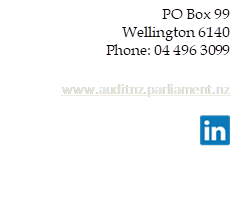

|
Attachment 2
|
Appendix 2 - Office of the Auditor General bulletin
issued 6 April 2021 - Audit Report on long-term plans
|
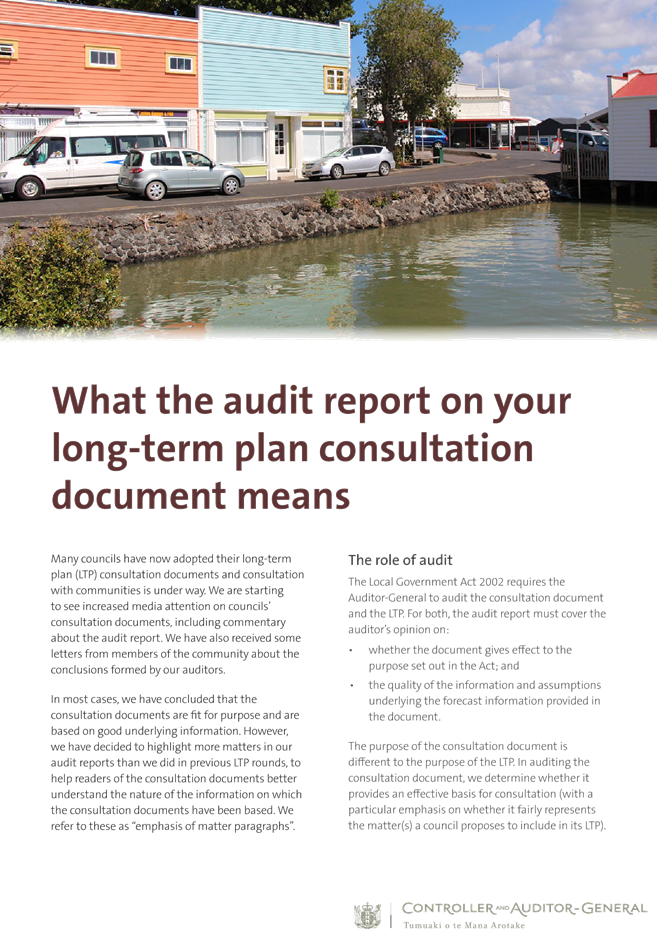
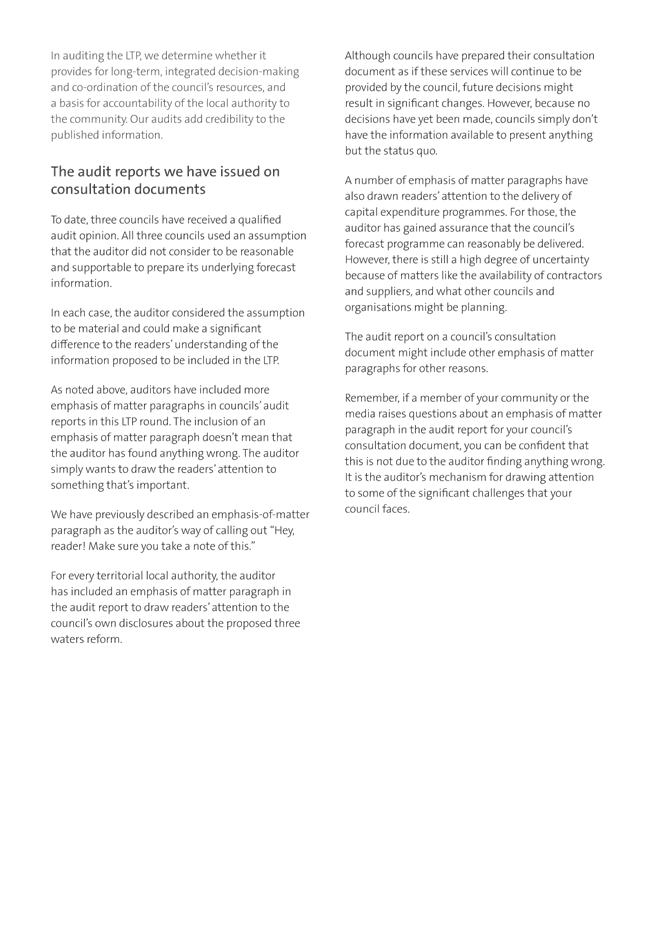
|
Attachment 3
|
Appendix 3: Audit NZ management report on the Draft
LTP 2021-2031 Consultation document and underlying information.
|
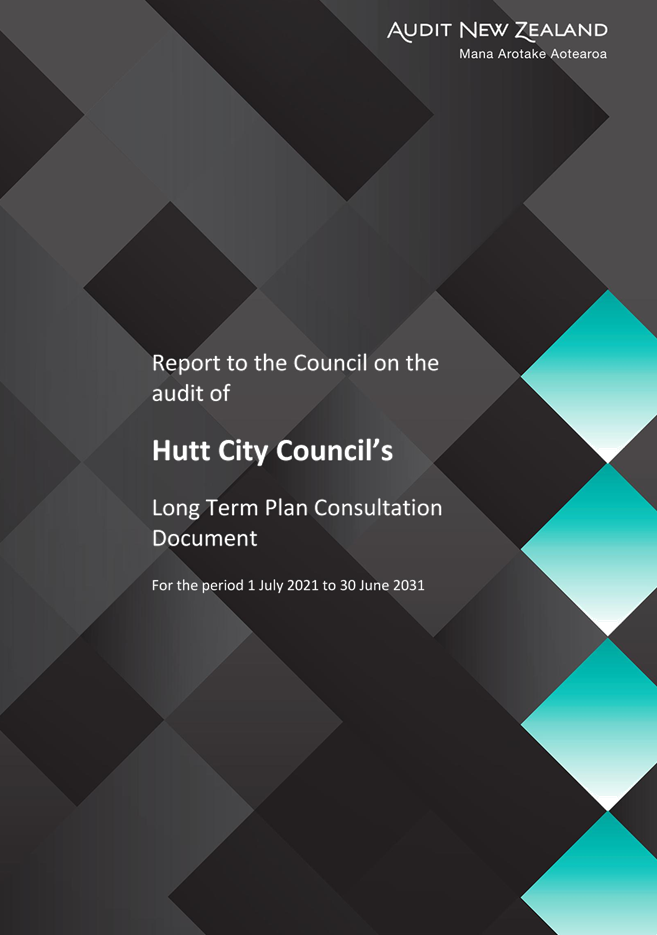
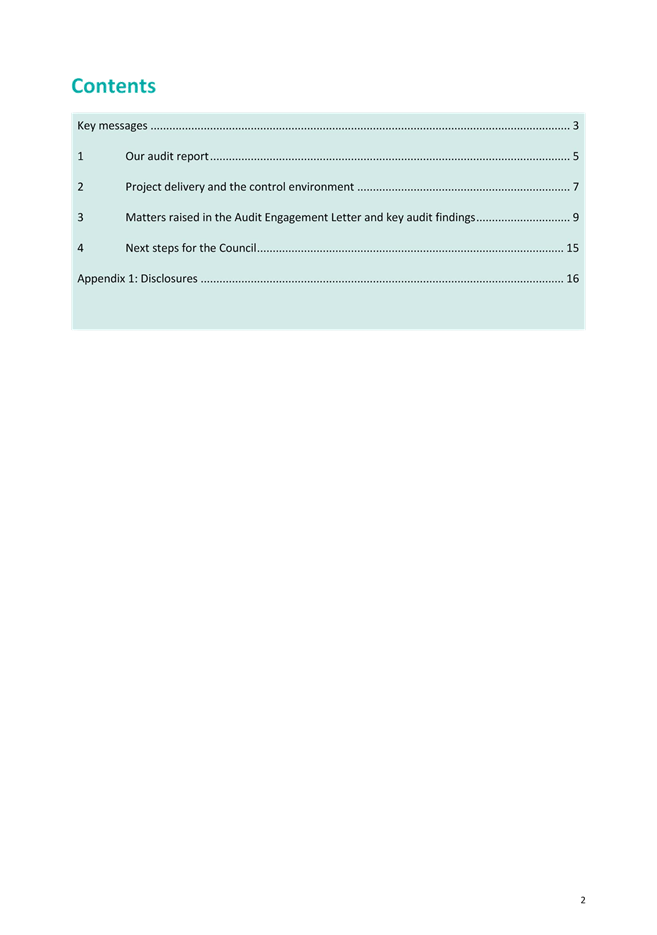

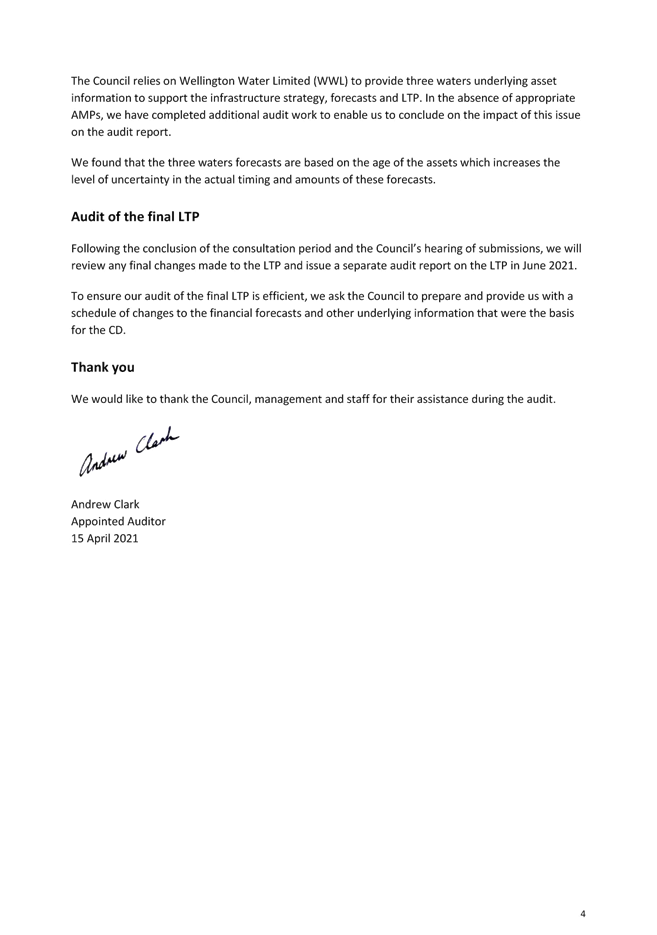
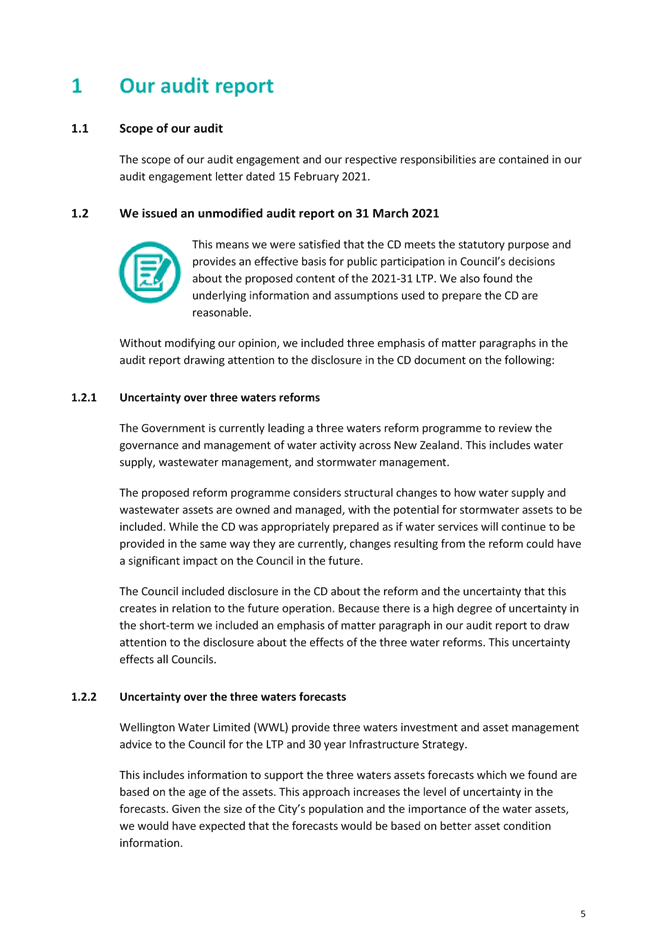
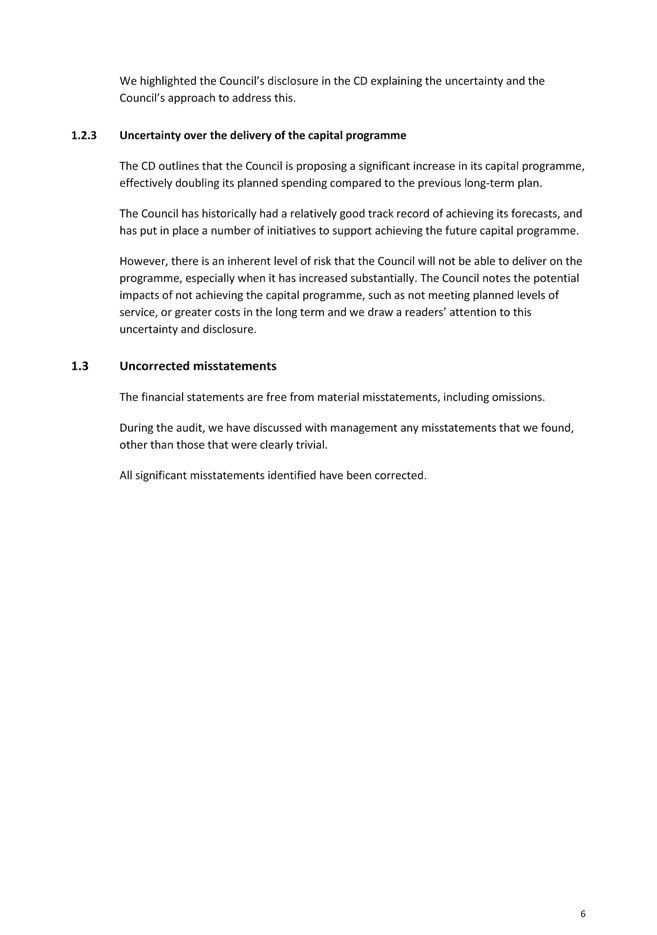
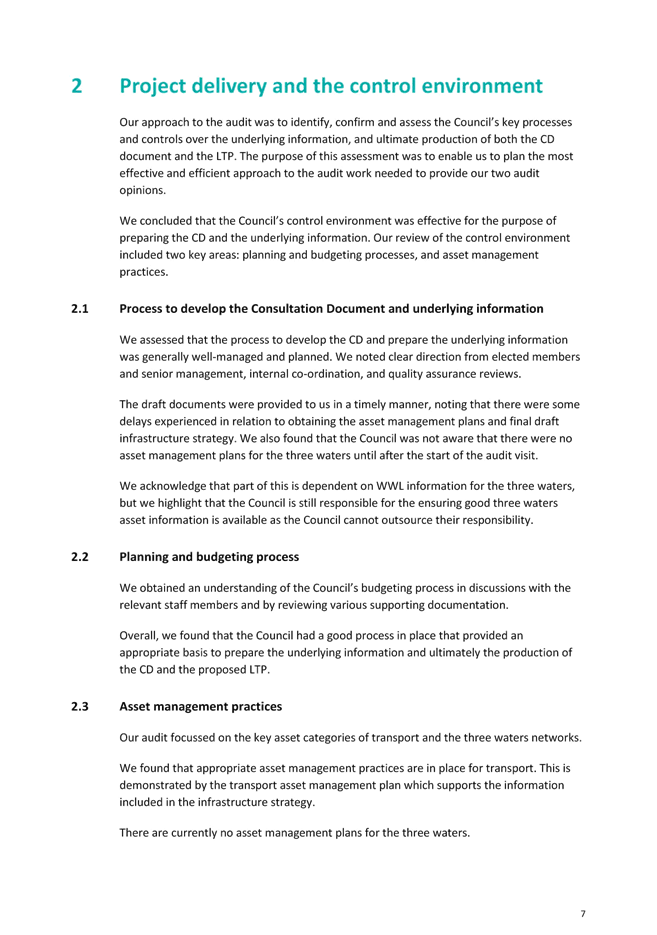

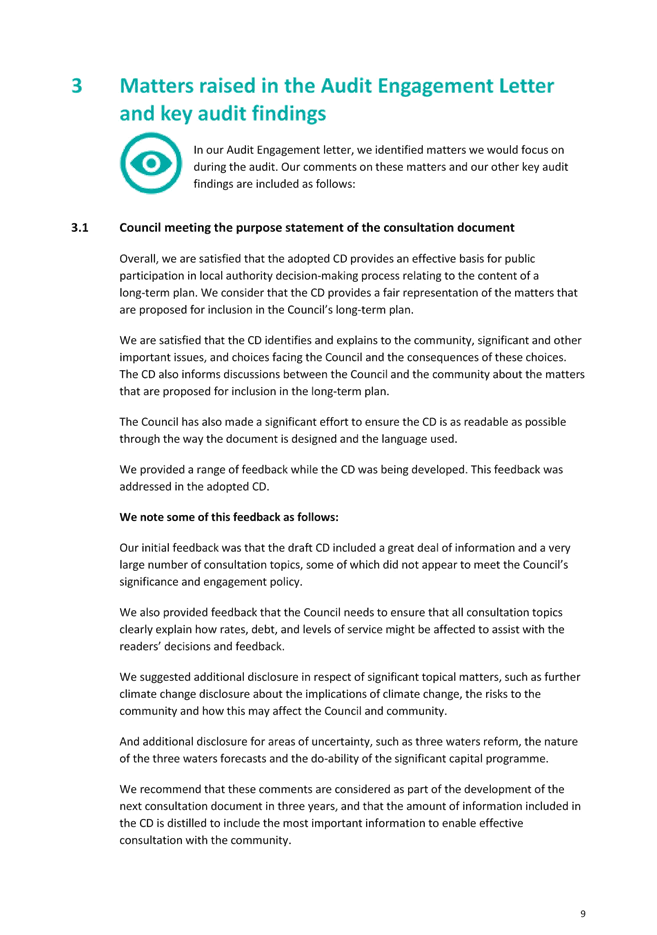
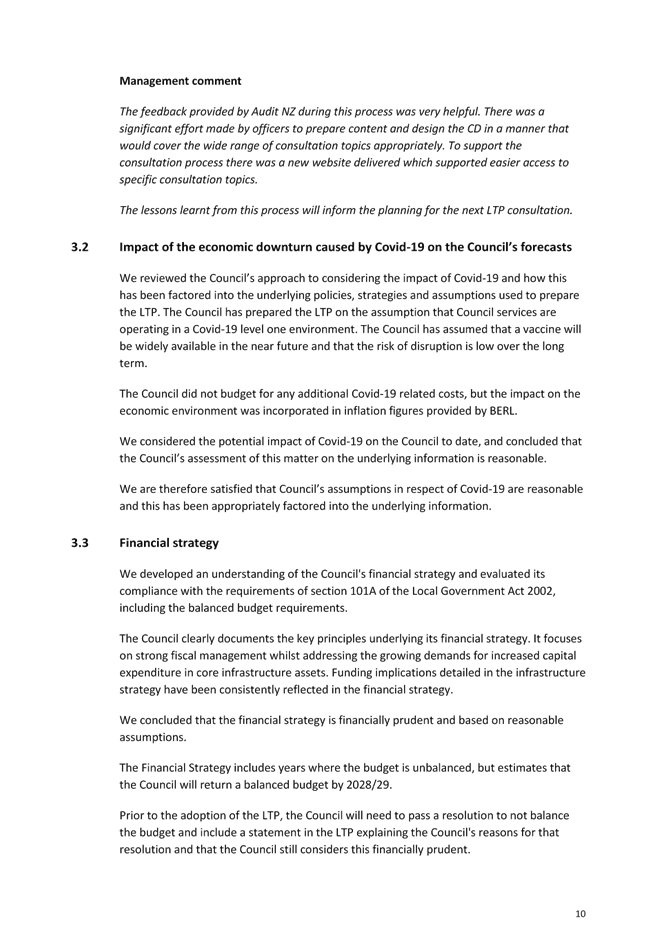
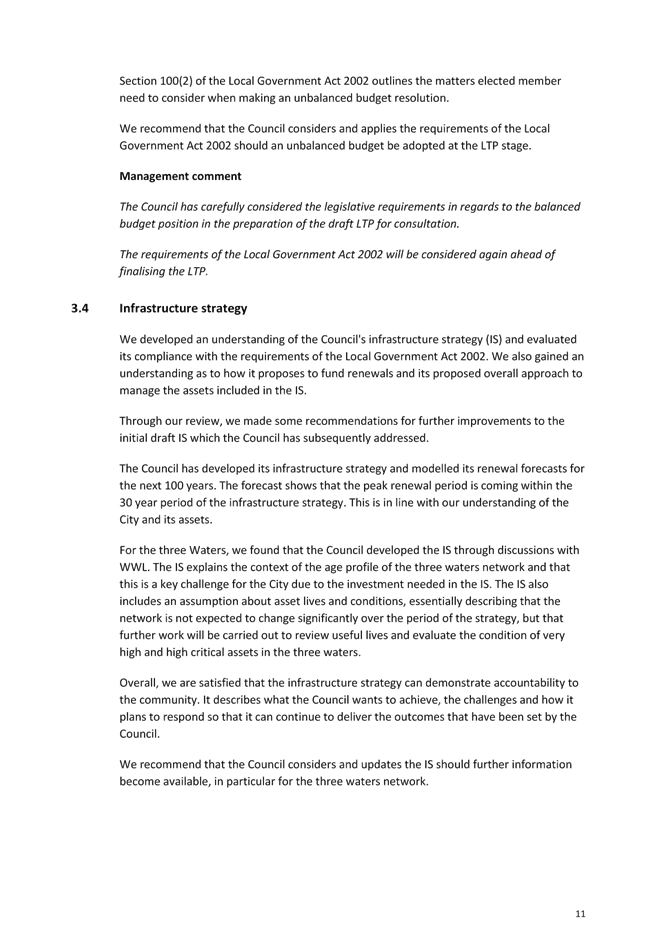
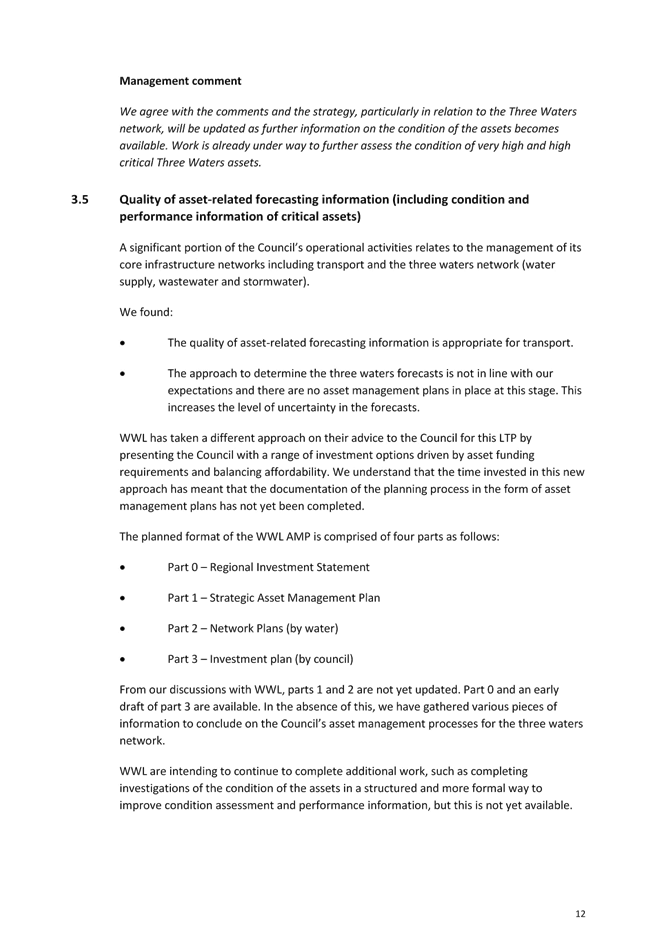
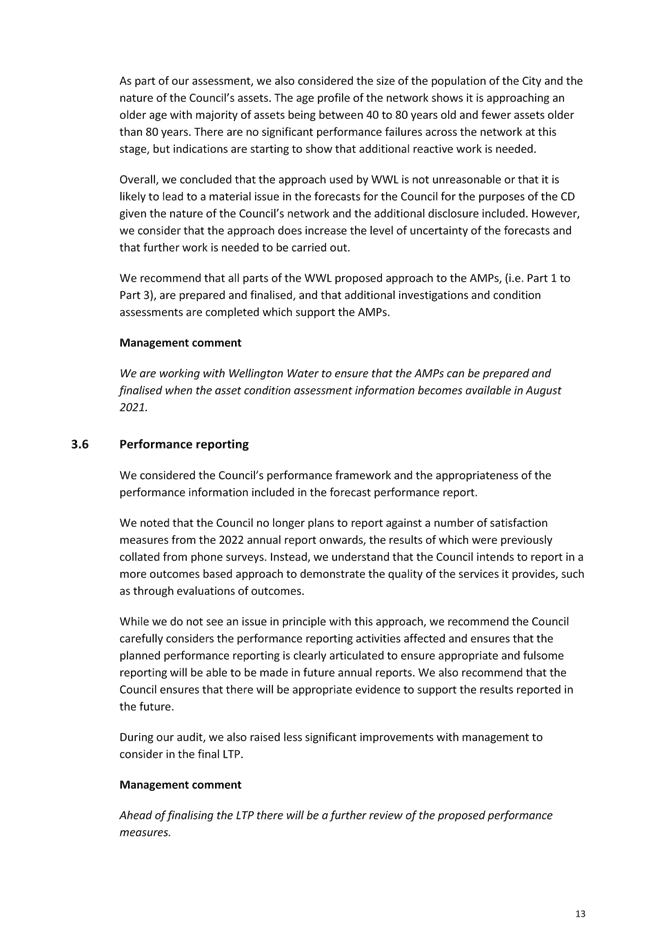

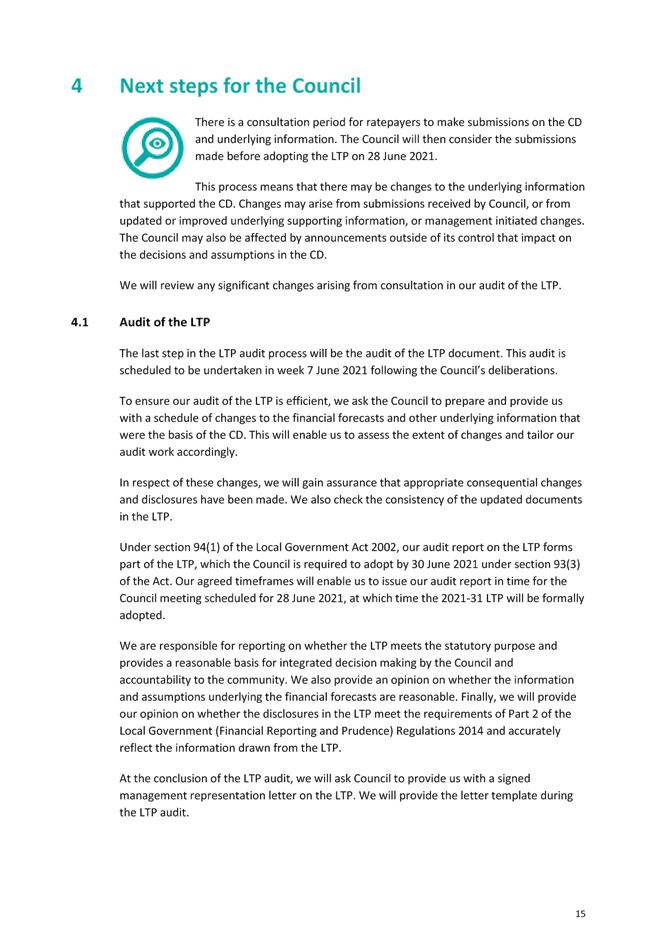


|
Attachment 4
|
Appendix 4 - Final 2018-28 LTP Management Report
|

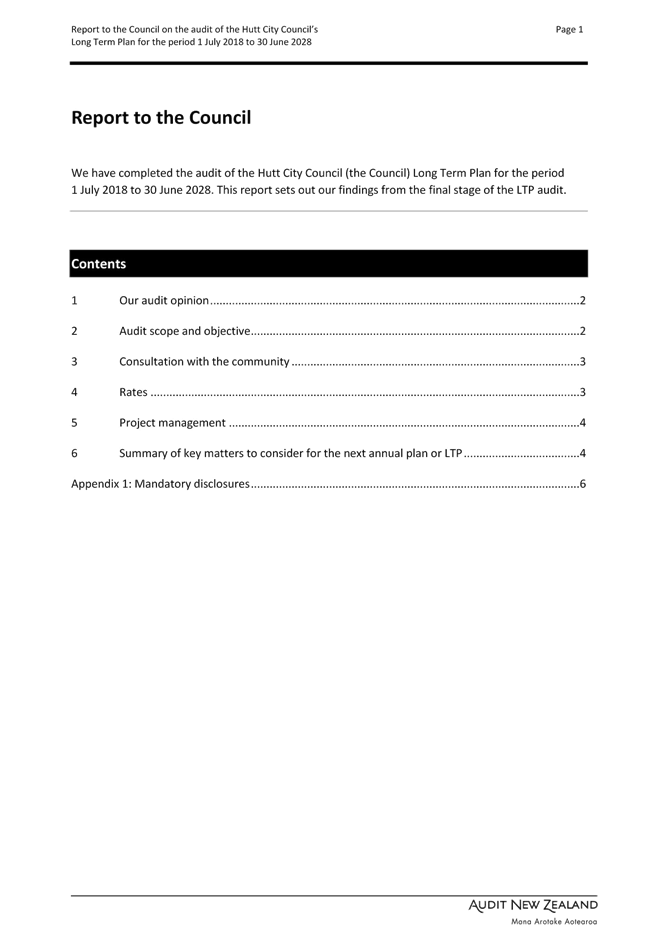
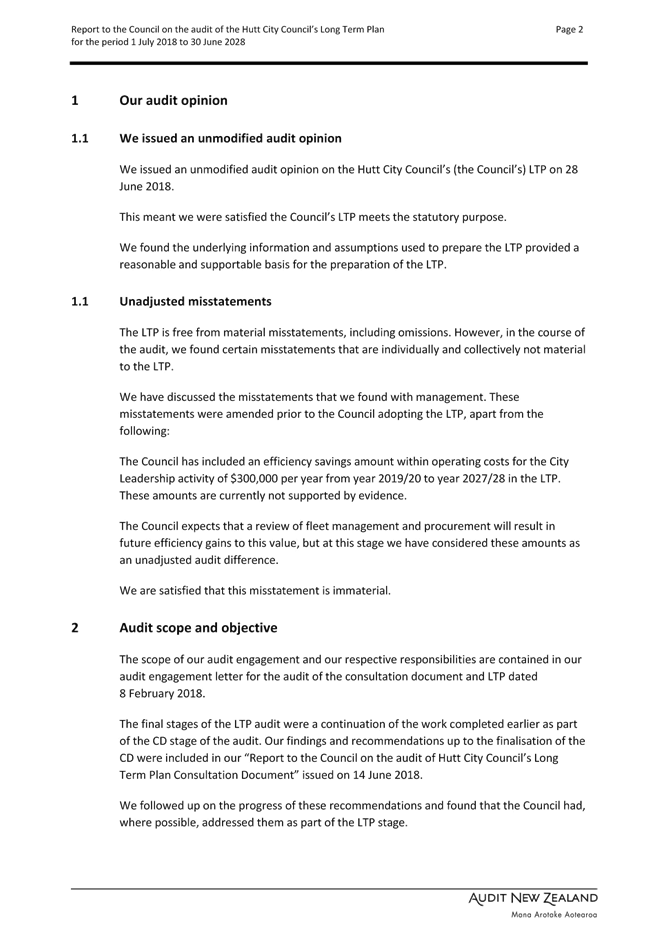
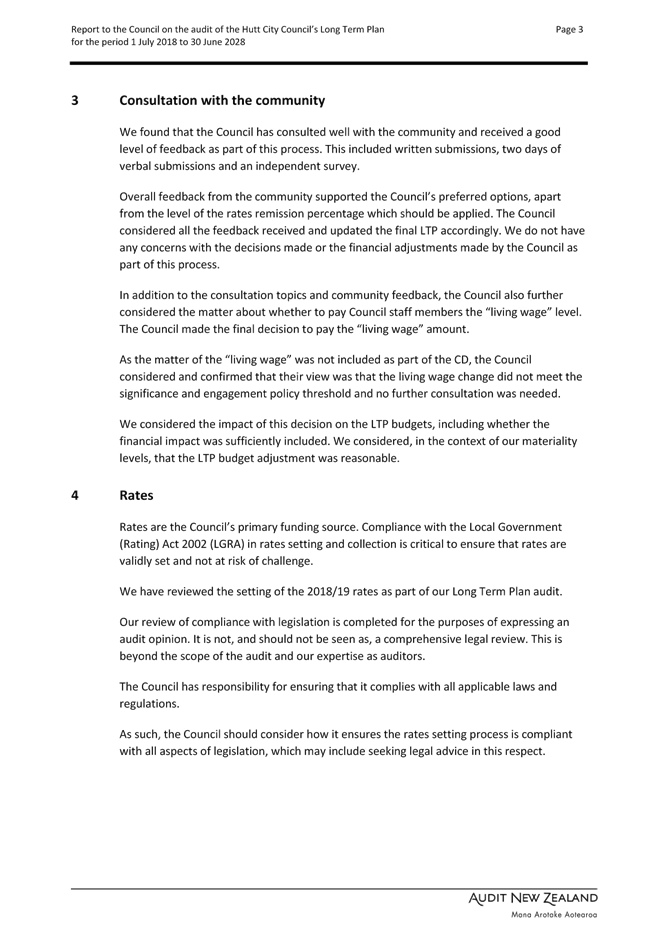
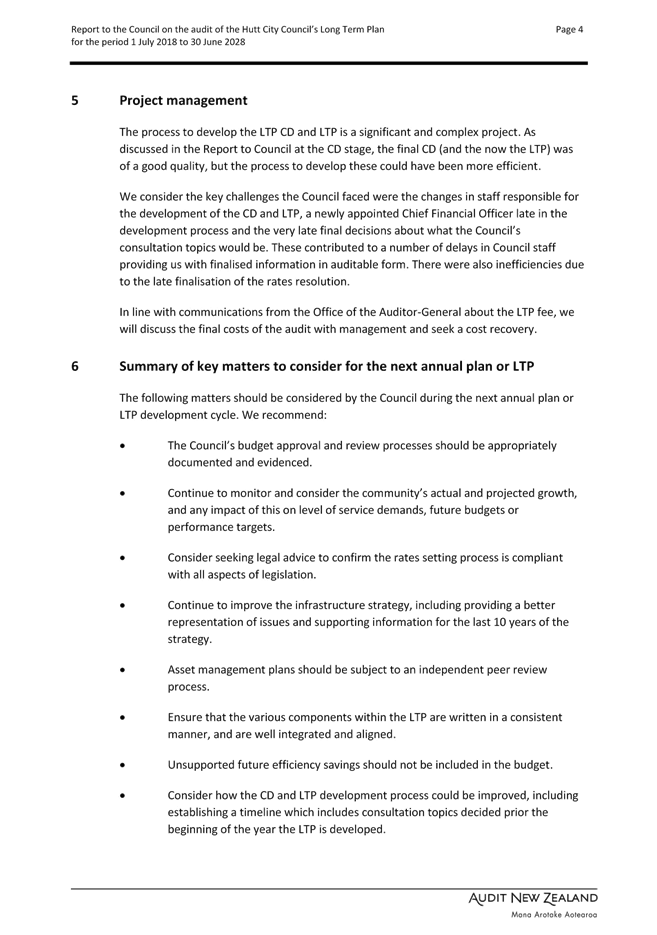

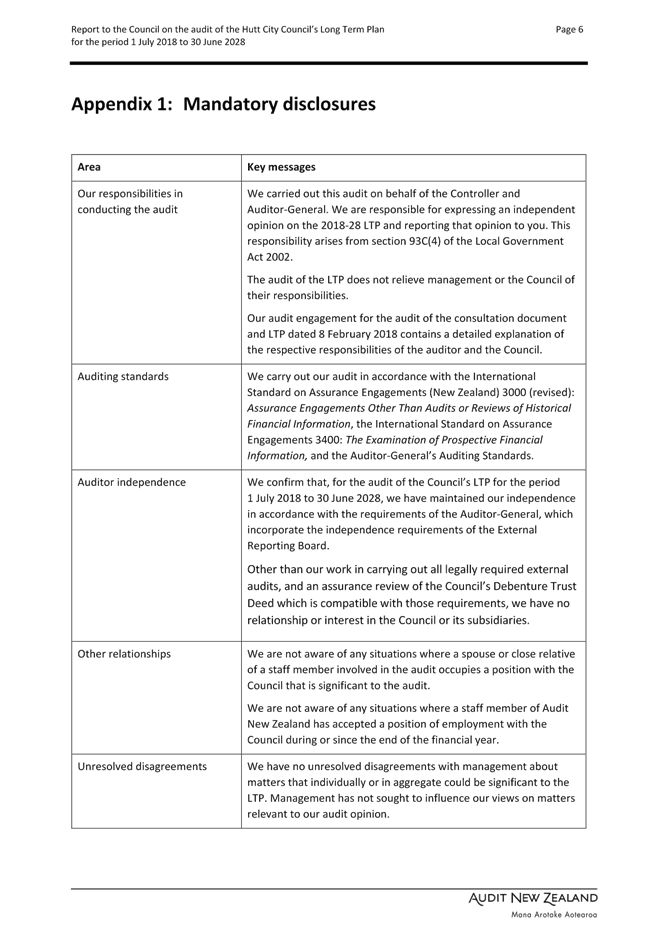
 Audit and Risk Subcommittee
Audit and Risk Subcommittee
07 April 2021
File:
(21/575)
Report no:
ARSC2021/2/57
Annual Tax Compliance
Update
1. Council approved a
Tax Risk Governance Framework in May 2018. This report is to update the
Subcommittee on the current year’s tax activities of Council and its
Council Controlled Organisations (CCOs), collectively referred to as the
“Group”.
|
Recommendation
That the Subcommittee notes and receives the report.
|
Background
2. Council is
currently exempt from paying corporate income tax with the exception for income
derived from Council Controlled Organisations (CCOs). CCOs (with the exception
of The Hutt City Community Facilities Trust), are however subject to corporate
income tax. All entities in the Group are subject to and required to correctly
account for all indirect taxes including:
· Goods
and Services Tax (GST)
· Fringe Benefit Tax
(FBT)
· Pay As You Earn
Tax (PAYE); and
· A
range of other withholding taxes (WHT).
3. The Group
returns in excess of $17.9M annually to the Inland Revenue Department (IRD) in
relation to both direct and indirect taxes.
4. IRD has an
expectation that all large organisations should have tax risk management
incorporated within their governance framework. Council developed a “best
practice” tax risk governance framework and tax risk management strategy
that was approved by Council in May 2018 and updated June 2020, as attached in
Appendix 3 to this report.
5. It is a
requirement of the framework that officers will report on all tax risk
management matters to this Subcommittee at least once a year. The last report
was on 16 June 2020 (FPC2019/2/51).
Discussion
6. With the exception
of the matter noted in paragraph 7, to the best of officers’ knowledge,
all Council and Group returns in respect of direct and indirect taxes have been
filed on time and settlements with IRD have been made by the due dates.
7. $1.57M of GST in
relation to Urban Plus Limited property development sales during the period
September and December 2019 was settled with IRD under a voluntary disclosure
in December 2020. This matter was outlined in the Audit New Zealand management
letter reported to this Audit and Risk Subcommittee 25 February 2021
(ARSC2021/1/29).
Annual Update
8. PricewaterhouseCoopers
(PwC) has provided their second annual update, attached as Appendix 1 to this
report. PwC’s annual update provides:
· a summary of the
more substantive tax advice Council and its CCOs have sought from PwC up to 31
March 2021;
· commentary on tax
matters currently being addressed as at 31 March 2021; and
· a
more general high-level update on the wider tax environment which may affect
Council and Council Controlled Entities.
Tax Advice
9. Where the need
arises, the Group continues to engage PwC to provide advice on various tax
matters. The advice assists the Group to comply with various tax
legislations.
10. During the last 12 months,
Council sought advice from PwC on:
(a) The feasibility of
continuing the Hutt City Communities Facility Trust and the tax implications
thereon,
(b) Liaising with the Inland
Revenue on UPL Limited Partnership’s property transactions omitted from
the group GST return and submitting a voluntary disclosure in relation to
these,
(c) Eligibility and other
consideration surrounding a potential claim for the Covid-19 Wages Subsidy,
(d) The application of GST for
various scheduler payments,
(e) The GST treatment of the
purchase of Emission Trading Units (ETU’s) from Australia,
(f) Specific GST advice in
relation to GST on residential dwellings intended for commercial purposes under
the Society of Local Government Managers (SOLGM) agreement
(g) preparing the tax notes for
Council and CCO annual reports; and
(h) preparation and lodgement of
all Group final income tax returns.
GST and FBT Compliance Review
11. As
part of the programme of work outlined in the Tax Risk Management Framework,
PwC conducted a compliance evaluation on Council GST and FBT practices. Their
report is attached as appendix 2 to this report.
12. Management
is in the process of evaluating this report and establishing actions to
mitigate and/or reduce the risk. For example:
a)
The use of zero rated supplies on GST returns;
b)
The election of an alternate FBT day starting point to reduce FBT costs
in relation to the private use of motor vehicles.
Management will report back to the
sub-committee on resolving these matters.
Appendices
|
No.
|
Title
|
Page
|
|
1⇩
|
Appendix 1: HCC Tax Update - period to 31 March 2021
|
132
|
|
2⇩
|
Appendix 2: Hutt City Council - FBT & GST
Compliance Report - 2021
|
142
|
|
3⇩
|
Appendix 3: Tax Risk Governance Framework - June 2020
|
154
|
Author: Darrin Newth
Financial Accounting Manager
Approved By: Jenny Livschitz
Group Chief Financial Officer
|
Attachment 1
|
Appendix 1: HCC Tax Update - period to 31 March 2021
|
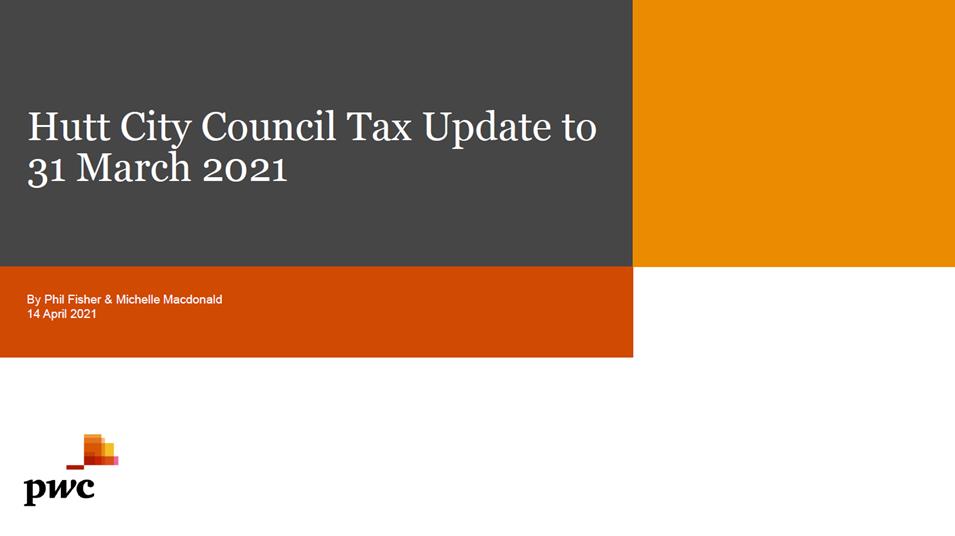
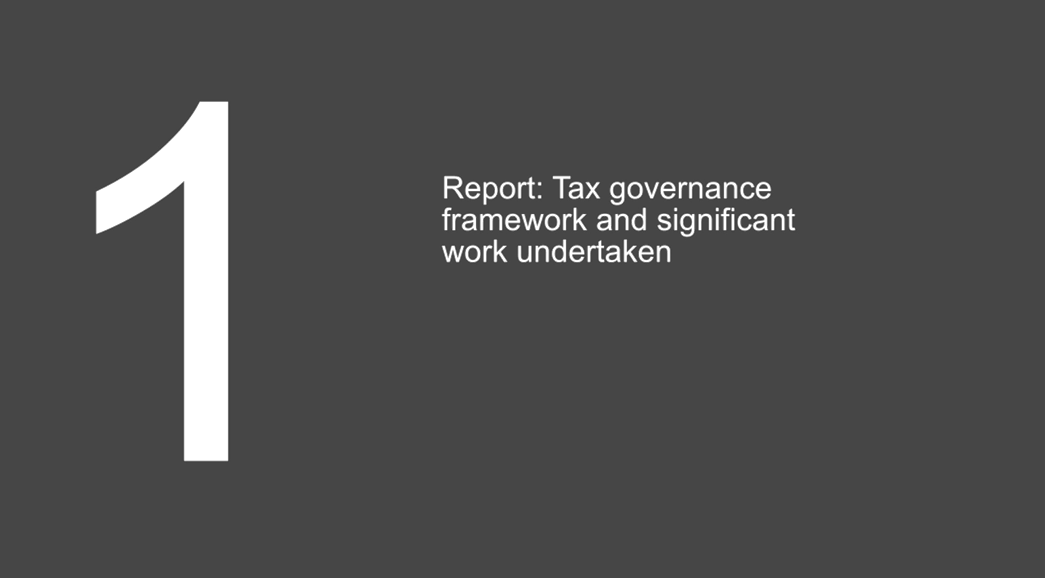


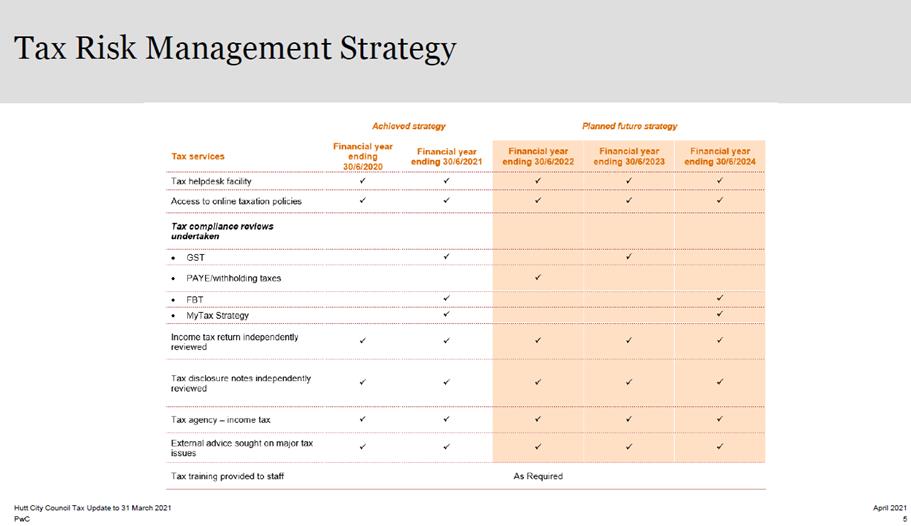
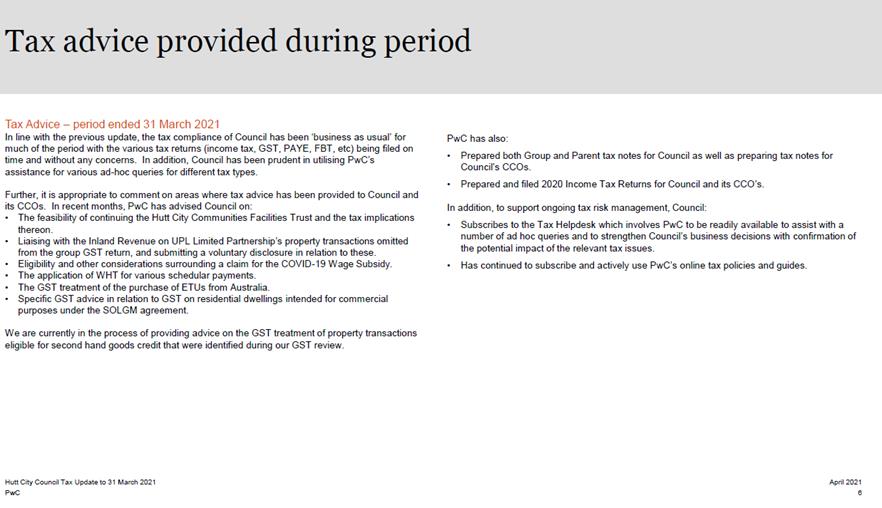
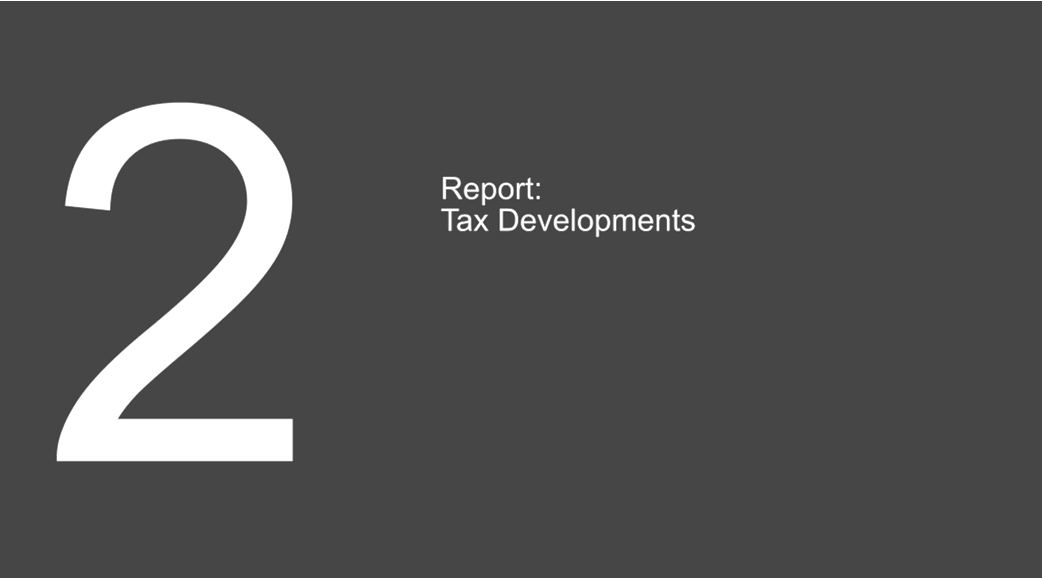
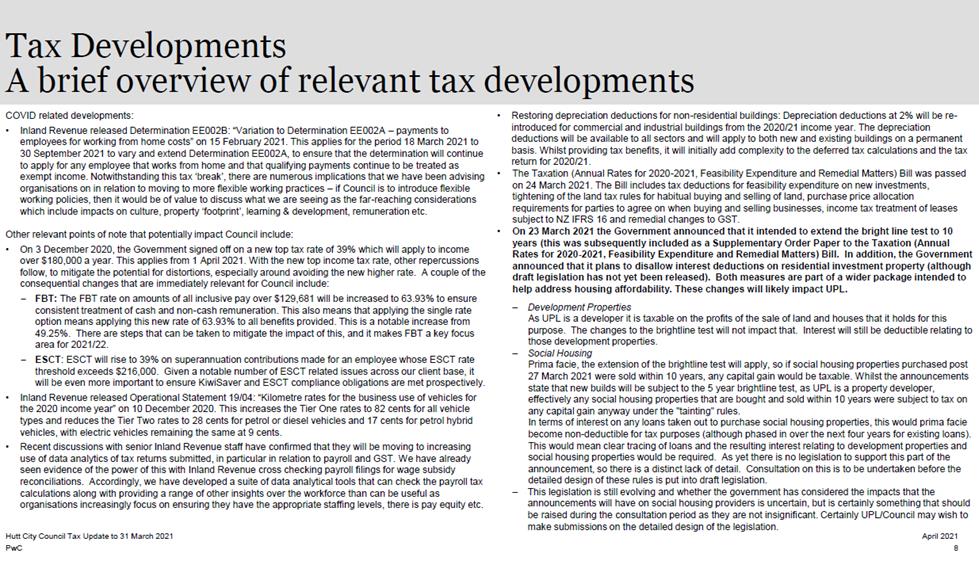
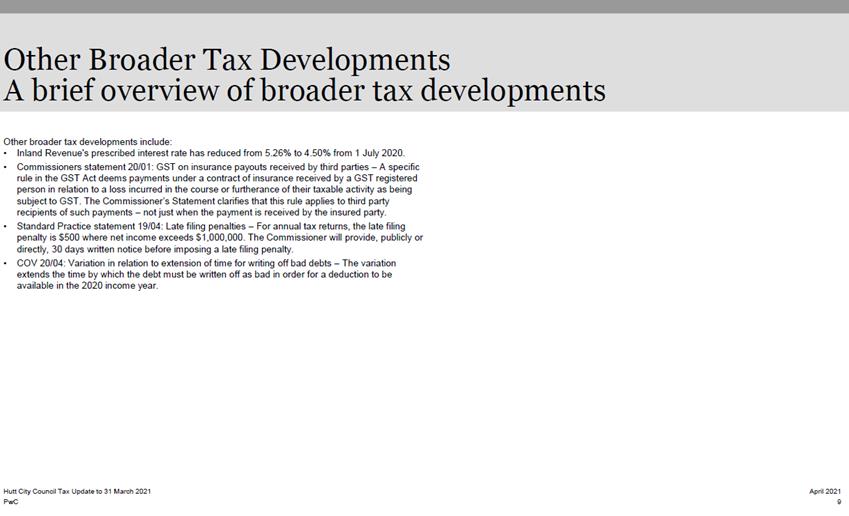
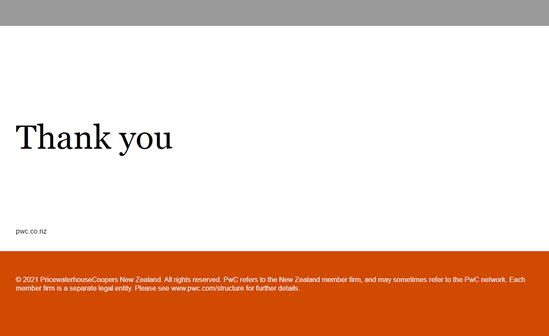
|
Attachment 2
|
Appendix 2: Hutt City Council - FBT & GST
Compliance Report - 2021
|



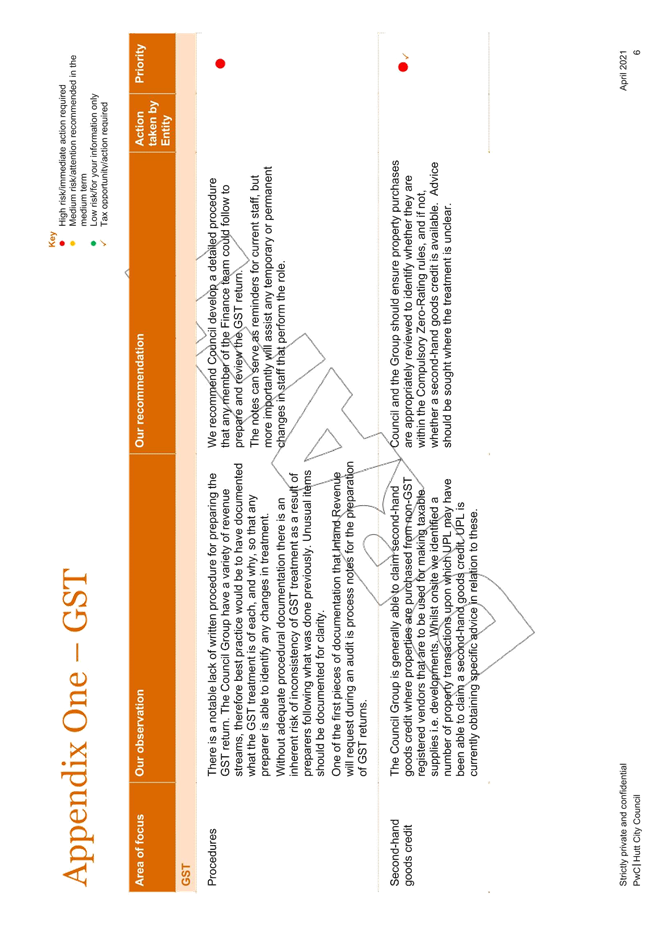
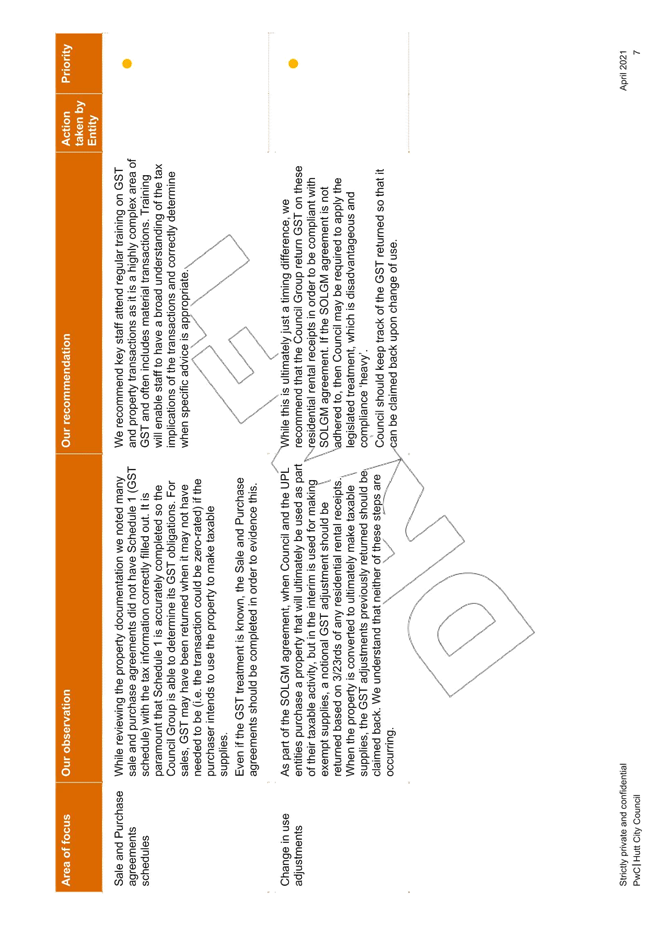
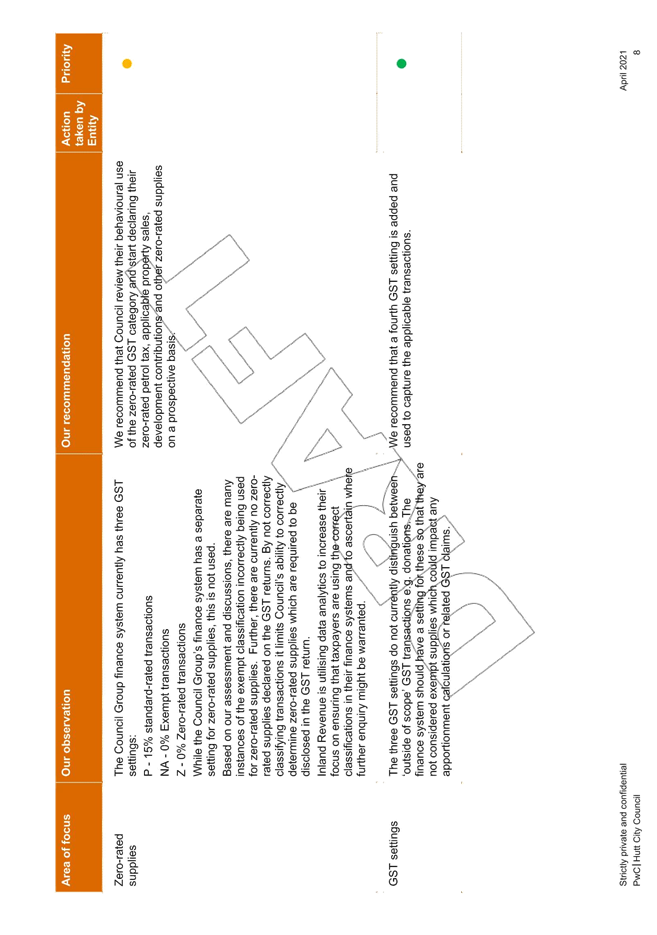
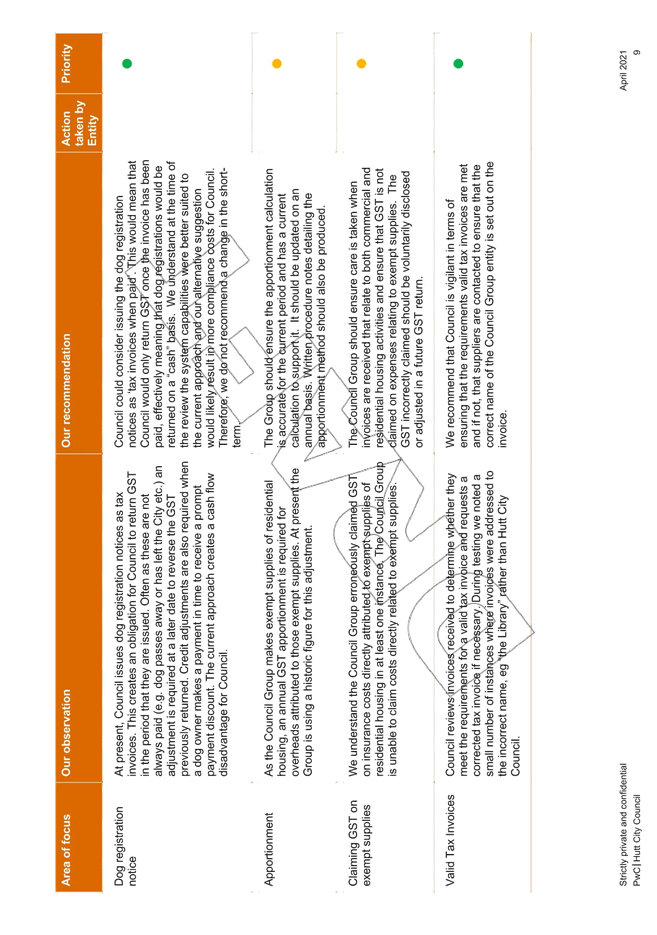
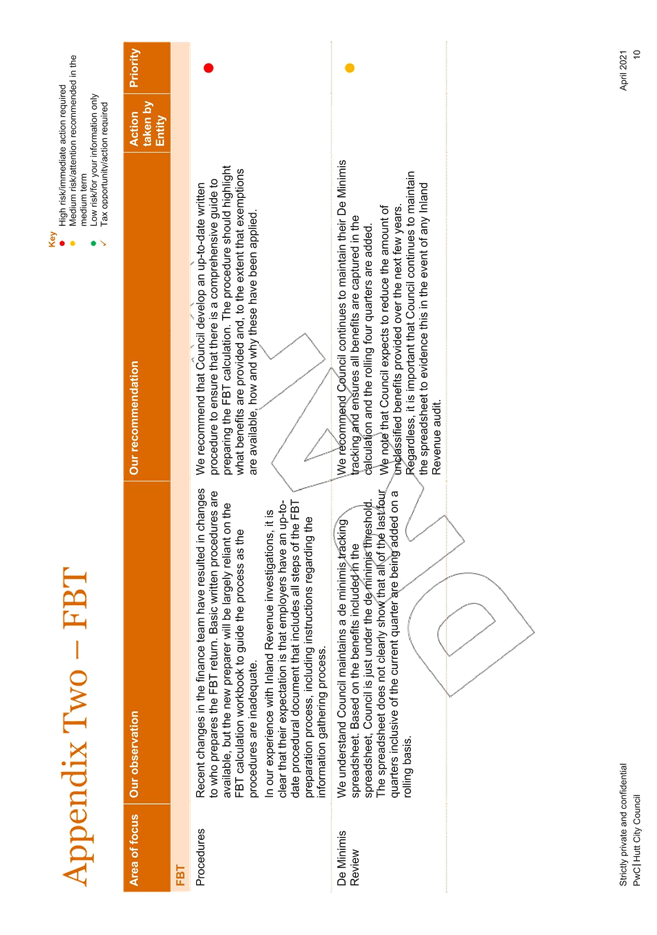
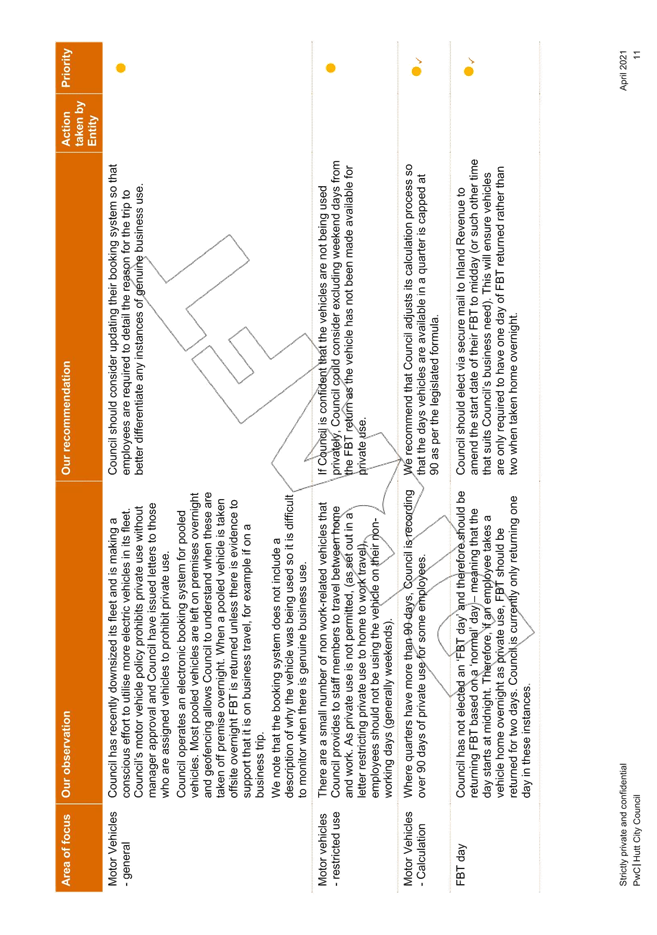
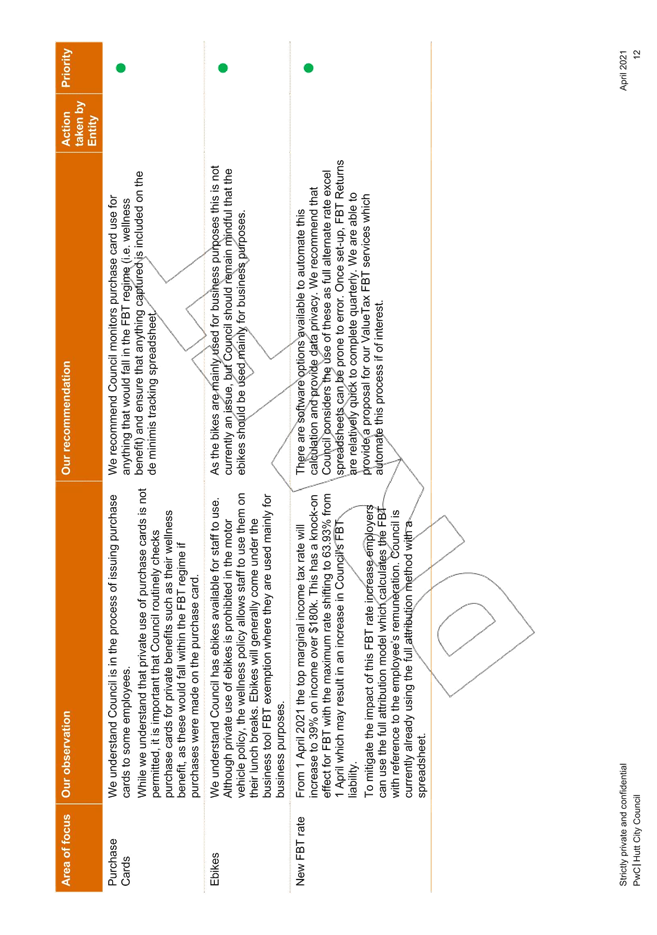

|
Attachment 3
|
Appendix 3: Tax Risk Governance Framework - June
2020
|
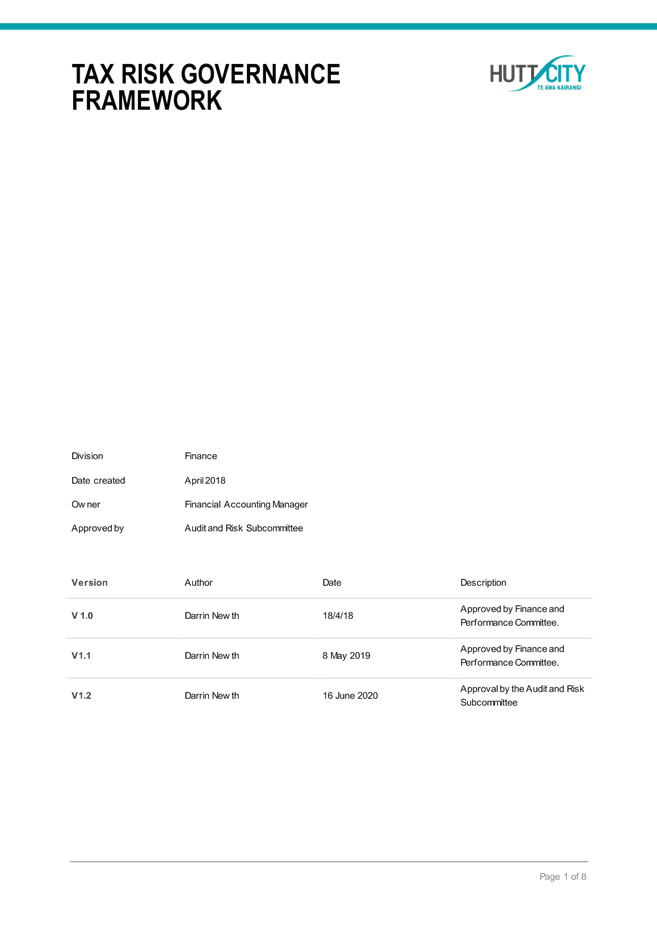

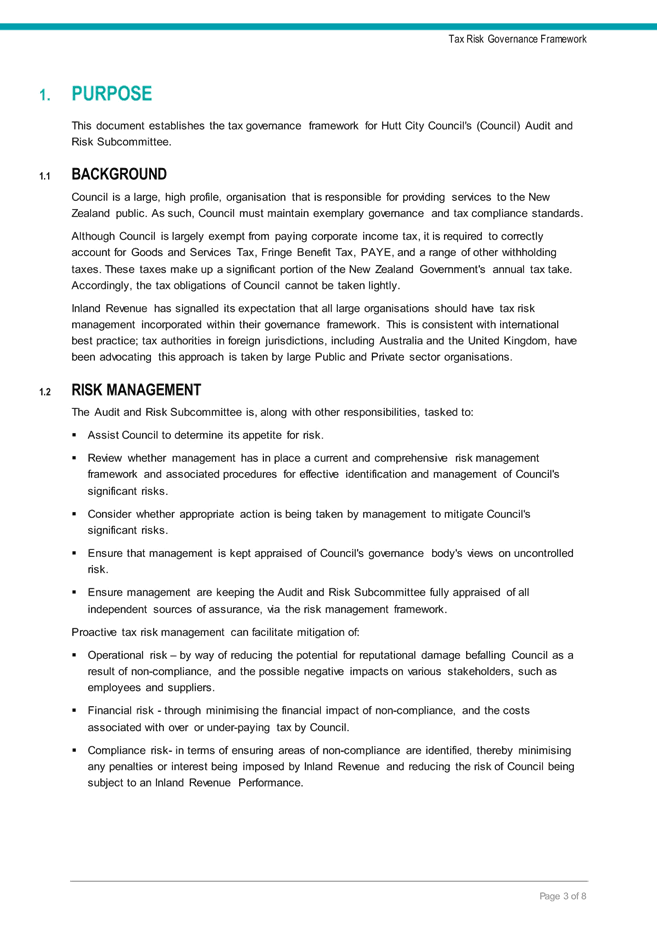
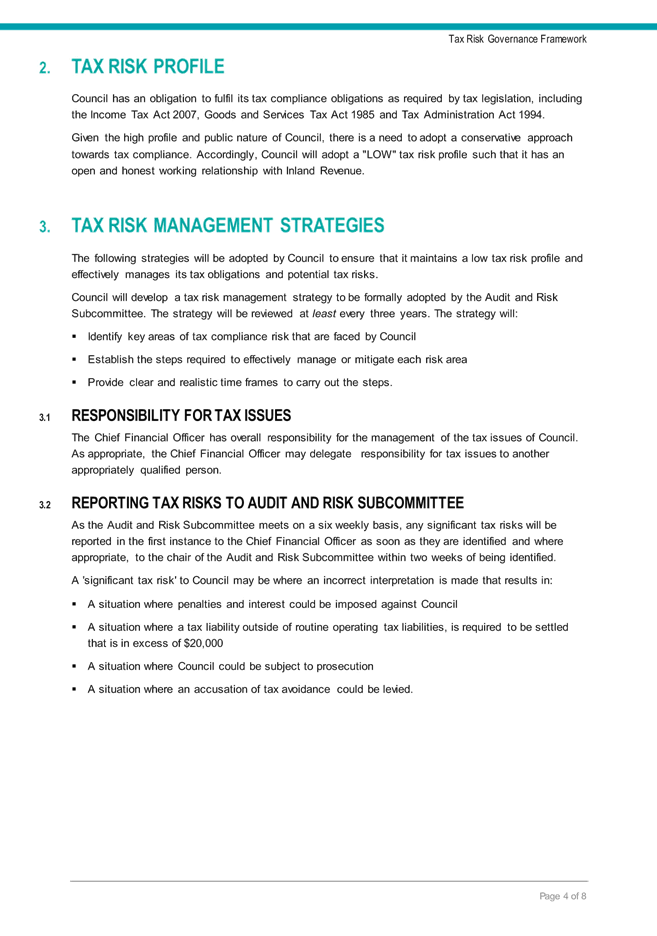
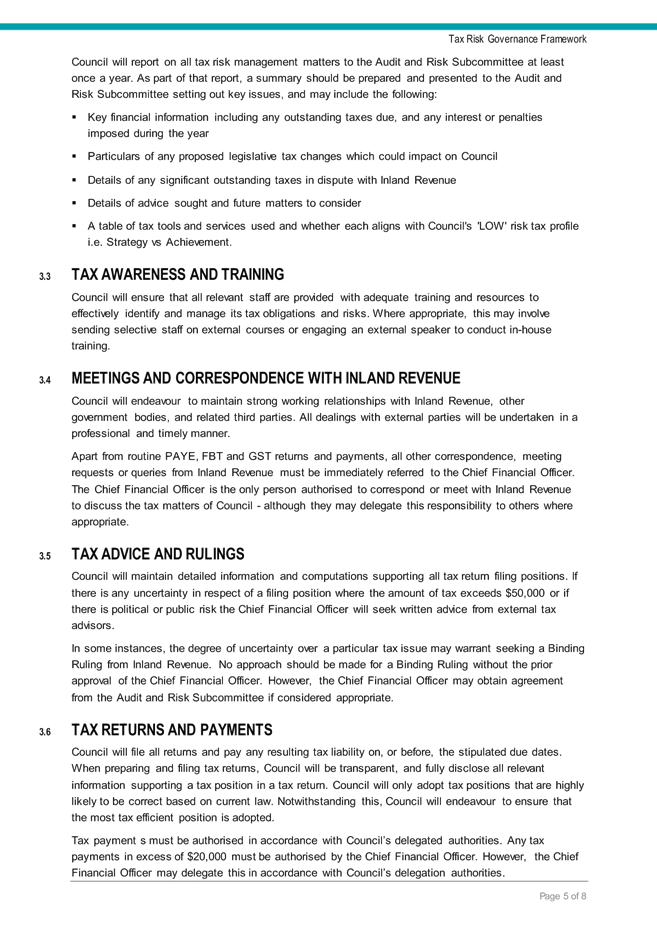

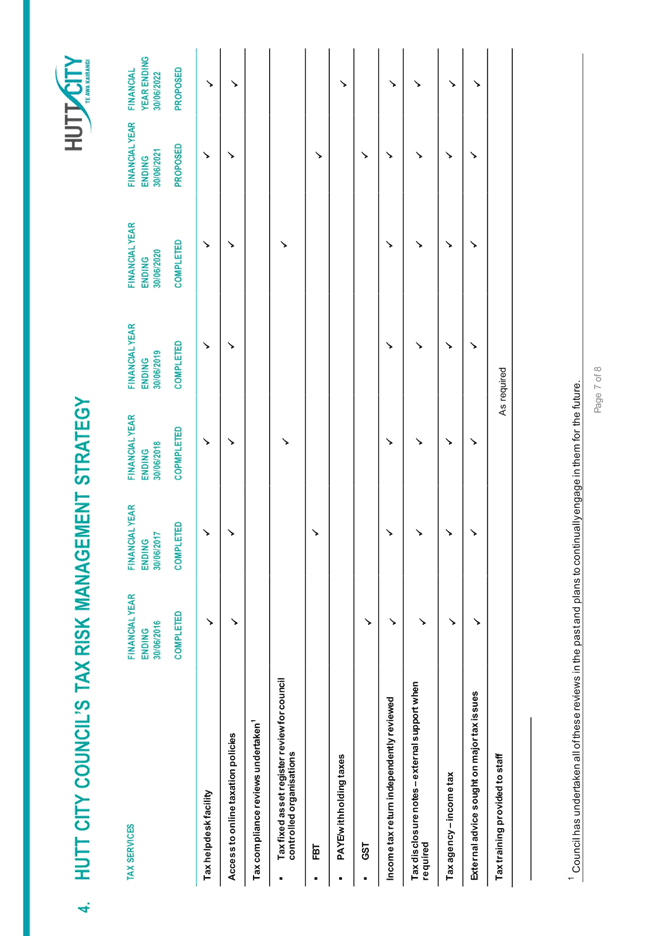
 Audit and Risk Subcommittee
Audit and Risk Subcommittee
07 April 2021
File:
(21/577)
Report no:
ARSC2021/2/64
Sensitive Expenditure
Policy Update and Disclosures
1. The purpose of
this report is twofold:
a. To provide the
subcommittee with a comparison between the current Council Group sensitive
expenditure policy and the latest publication from the Office of the Auditor
General; and
b. To provide the
subcommittee with a listing of sensitive expenditure incurred by Elected
Members, Chief Executive and Directors for the period 1 July 2020 to 31
December 2020.
|
Recommendation
That the Subcommittee:
(1) notes
and receives the report;
(2) direct officers to action the findings of the review of the
Sensitive Expenditure Policy to ensure compliance with the Office of the
Auditor General guidance published in October 2020;
(3) agrees that the revised Sensitive Expenditure Policy be reported
to the Audit and Risk Subcommittee on 9 September 2021 for review and
endorsement ahead of submission to Council for approval;
(4) directs officers to ensure that the revised Sensitive Expenditure
Policy be prepared for the Council Group and that the intent be that there is
no deviation to this policy by any of the Council Controlled Organisations,
in particular Urban Plus Limited; and
(5) notes the
sensitive expenditure disclosure information attached as Appendix 5 to the
report.
|
Background
2. The
Local Government Act 2002 provides that Council should ensure that the expected
conduct of elected members is clear and understood by elected members and the
community.
3. The
Act provides that the Chief Executive has responsibility for maintaining the
appropriate standards of integrity and conduct among the employees of Council,
including those relating to financial spending.
4. The
2019/20 management report from Audit New Zealand highlighted the need for the
Council to ensure that correct processes are in place around the incurring of
sensitive expenditure and subsequent approval of this expenditure for senior
staff and Councillors. It is important that this is also supported by
appropriate reporting and monitoring both at Officer and Governance level.
Definition
5. The OAG defines sensitive expenditure as any spending by an
organisation that could be seen to be giving private benefit to staff
additional to the business benefit to the organisation. Problems can arise with
expenditure related to travel, accommodation, and hospitality, and particular
care needs to be taken with these. Problems can also arise from expenditure
that is unusual or is not closely related to an organisation’s purpose
and/or functions. The full guide is attached as Appendix 2 to this report.
6. Council policy describes sensitive expenditure as: spending by the Group that could be seen to
give some benefit to an employee that is additional to the operational benefit
to the Group of the expenditure. It also includes spending by the Group that
could be considered unusual or unrelated to the Group’s purpose, function
or core activities. The full Group policy and
guidelines are attached as Appendix 3 and 4 to this report.
Policy Comparison
7. PricewaterhouseCoopers (PwC) has provided a comparison to the latest
publication from the OAG and the Group’s policy and guidelines.
Overall, PwC found the Group’s policies to be largely in line with the
OAG guidance. Where the policies vary, compliance can be achieved with minor
tweaks to wording of policies to ensure that they are consistent with the
guidance.
8. Their findings are attached as Appendix 1 to this report. Four key
matters or gaps were identified in the report:
· Travel expenditure
relating to tipping, spousal travel and stopovers.
· Entertainment
expenditure relating to inconsistencies in long leave celebrations policies.
· Goods and services
expenditure relating to private use of supplies and sale of surplus assets to
staff.
· Lack of
documentation to support the deviation of the Group’s policy by Urban
Plus Limited Group, particularly relating to travel and accommodation, events
and gifts/sponsorship expenditure.
Further detailed findings are included in
Appendix B of the PwC report.
9. Officers will assess the points raised in the PwC report and where
appropriate, update the Group policy and/or guidelines accordingly. Engagement
with UPL on the findings of the PwC report will also take place. The revised
policy/guidelines is intended to be submitted to the Audit and Risk
Subcommittee for endorsement at the meeting 9 September 2021.
Incurred Sensitive Expenditure 1 July 2020
to 31 December 2020
10. Guidance
from the Office of the Auditor General recommends that sensitive expenditure by
senior member of staff and elected members (Councillors) should be made
publicly available.
11. Information
has been extracted from our financial system from relevant cost centres and
expenditure codes where sensitive expenditure is highly likely to be coded to.
12. The list of transactions is
attached as Appendix 5 to the report. Going forward there will be regular
quarterly reporting on sensitive expenditure to the Audit and Risk
Subcommittee. This information will also be published on Council’s
website.
Appendices
|
No.
|
Title
|
Page
|
|
1⇩
|
Appendix 1: PwC Sensitive Expenditure Comparision and
Review
|
164
|
|
2⇩
|
Appendix 2 OAG - Controlling sensitive expenditure
Guide for public organisations)
|
207
|
|
3⇩
|
Appendix 3: HCC Group - Sensitive Expenditure Policy
|
244
|
|
4⇩
|
Appendix 4: Sensitive Expenditure Guidelines
|
250
|
|
5⇩
|
Appendix 5: Sensitive expenditure disclosure
statements 1 July 2020 to 31 December 2020
|
266
|
Author: Darrin Newth
Financial Accounting Manager
Approved By: Jenny Livschitz
Group Chief Financial Officer
|
Attachment 1
|
Appendix 1: PwC Sensitive Expenditure Comparision
and Review
|
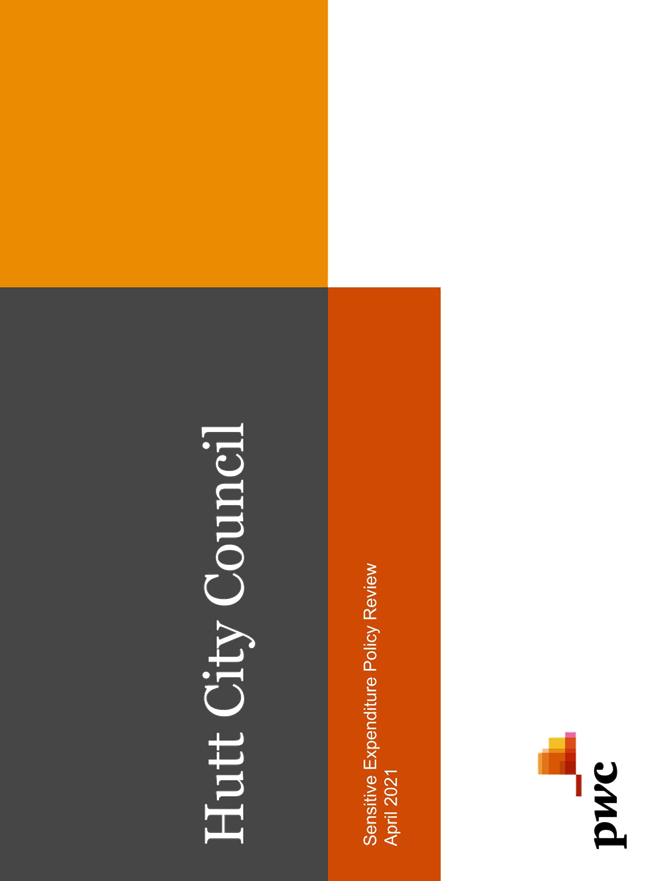


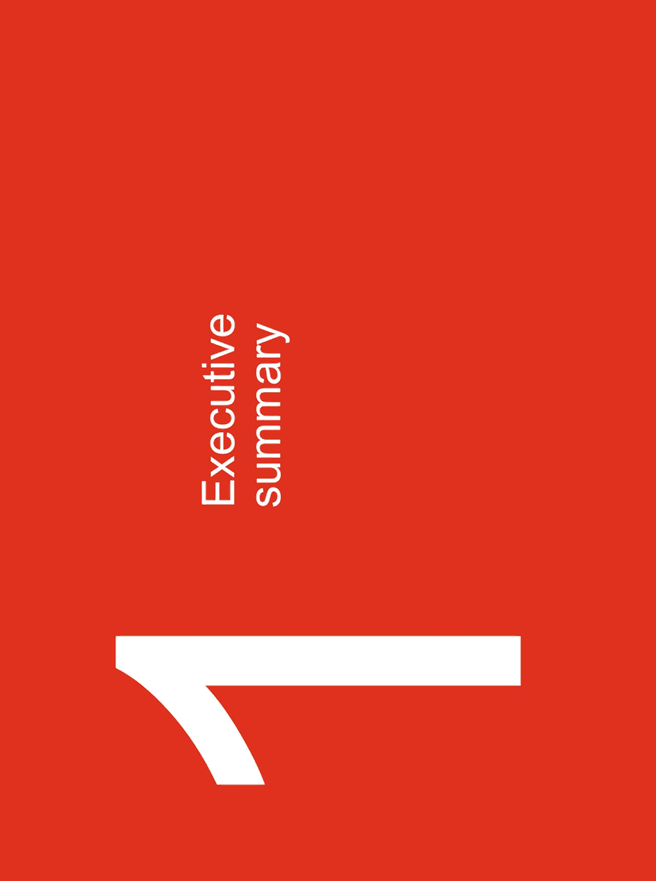
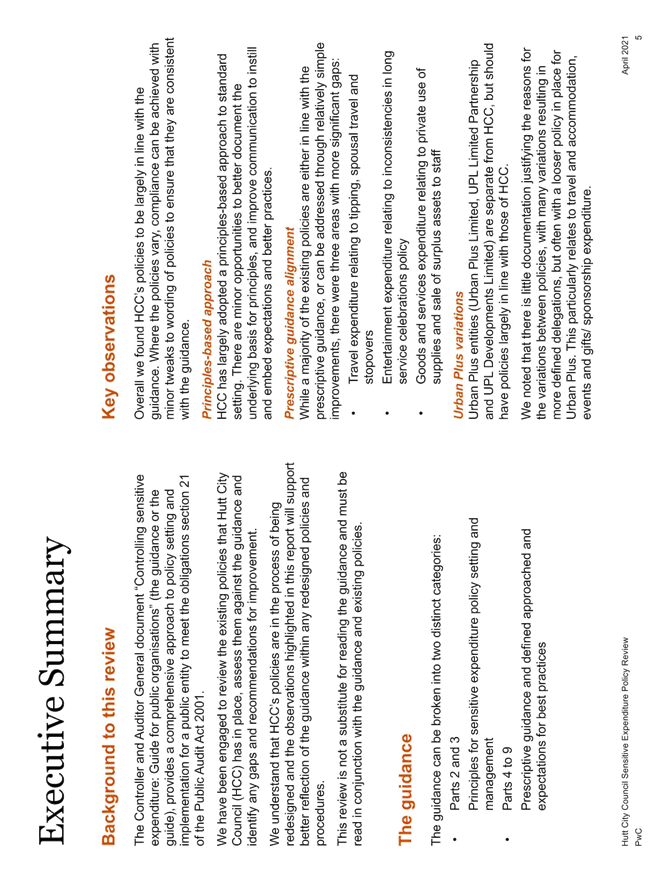

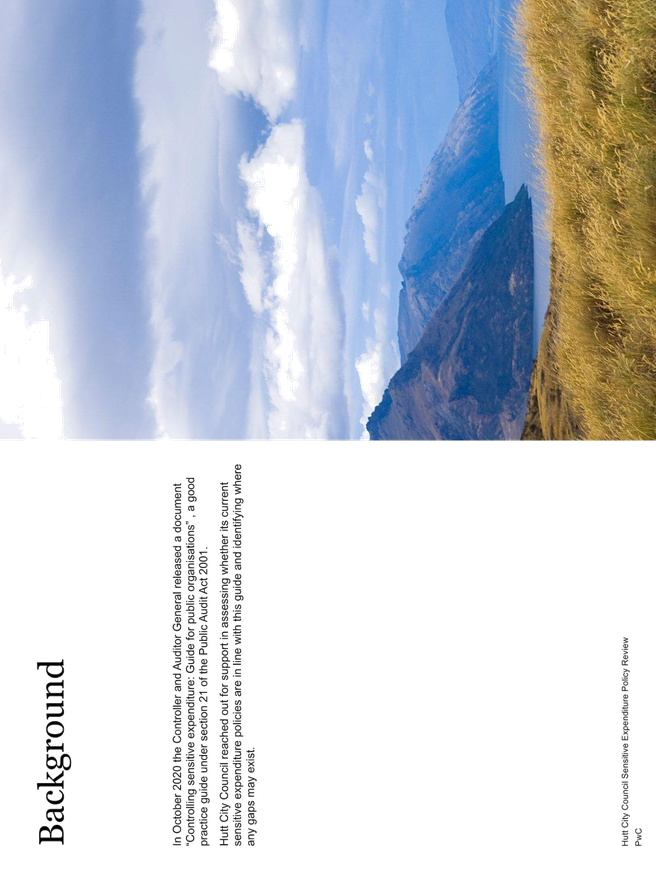
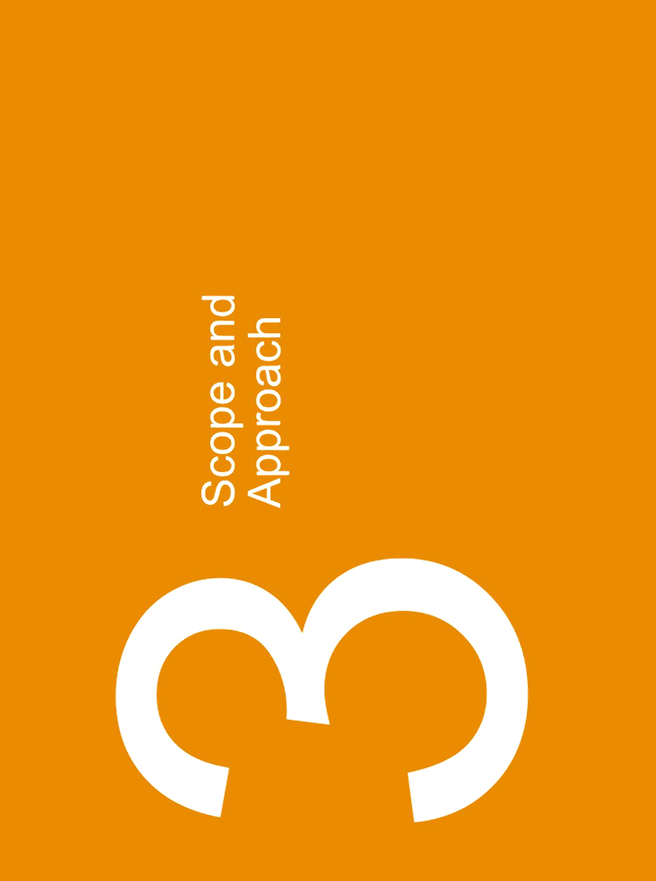
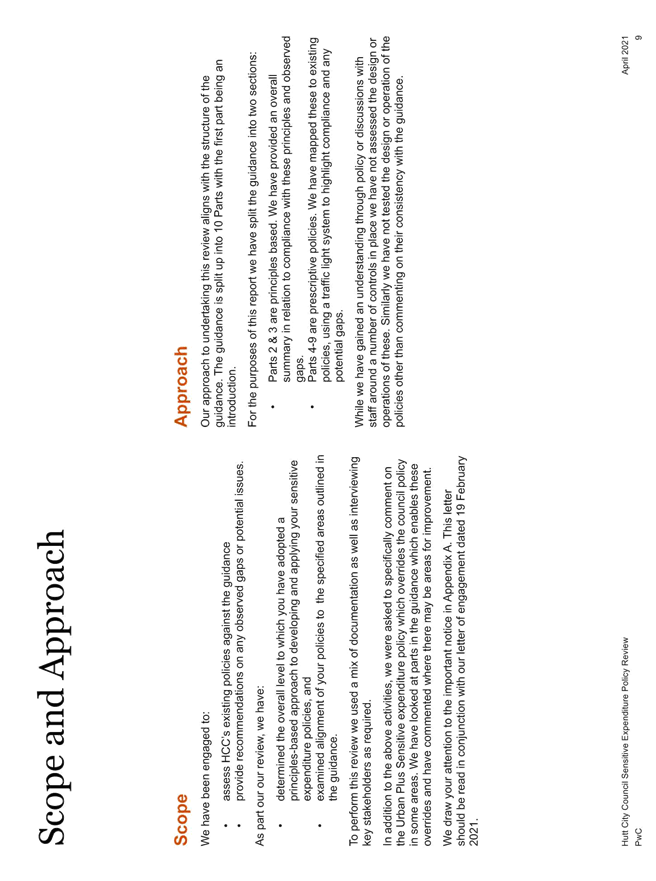
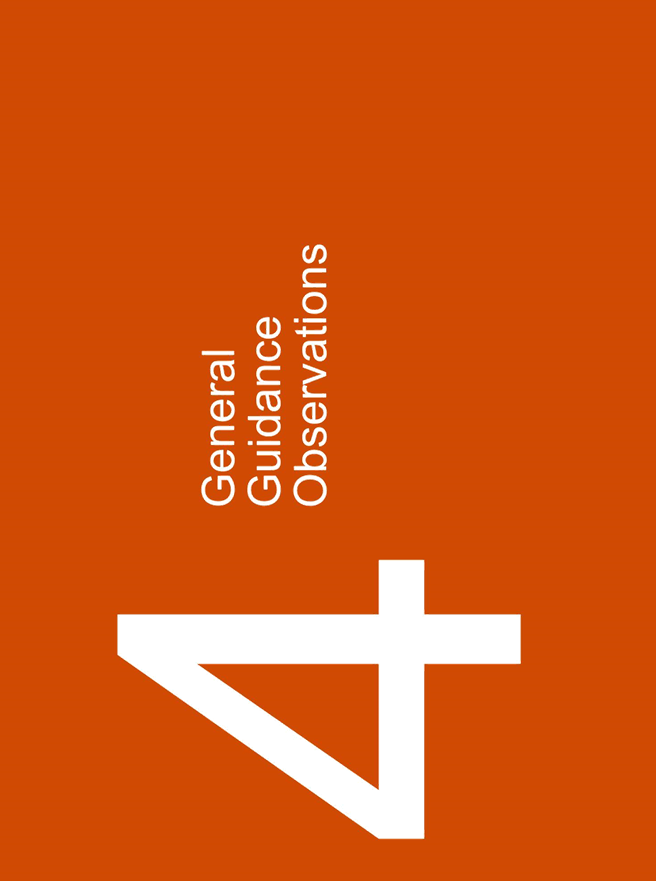
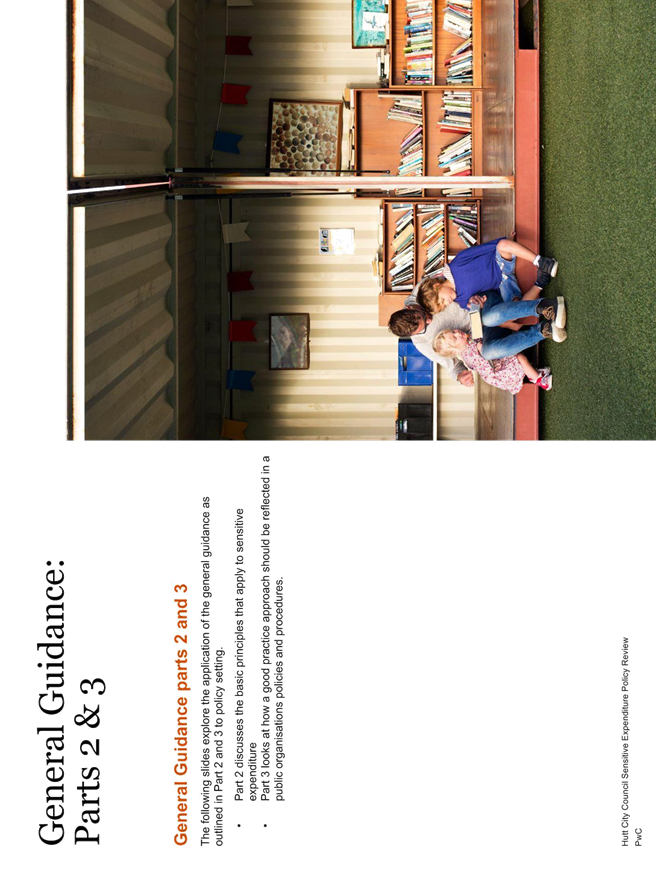
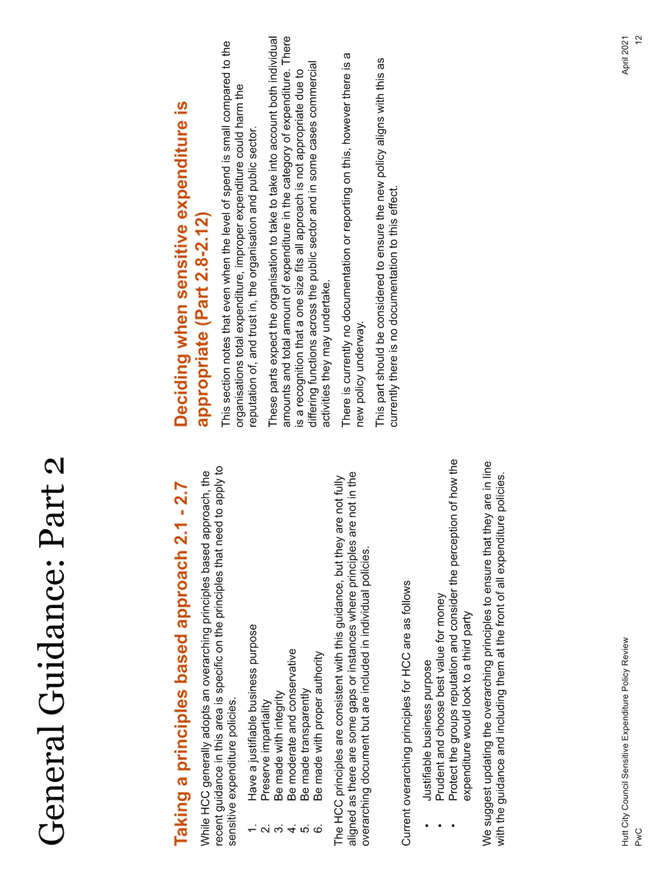
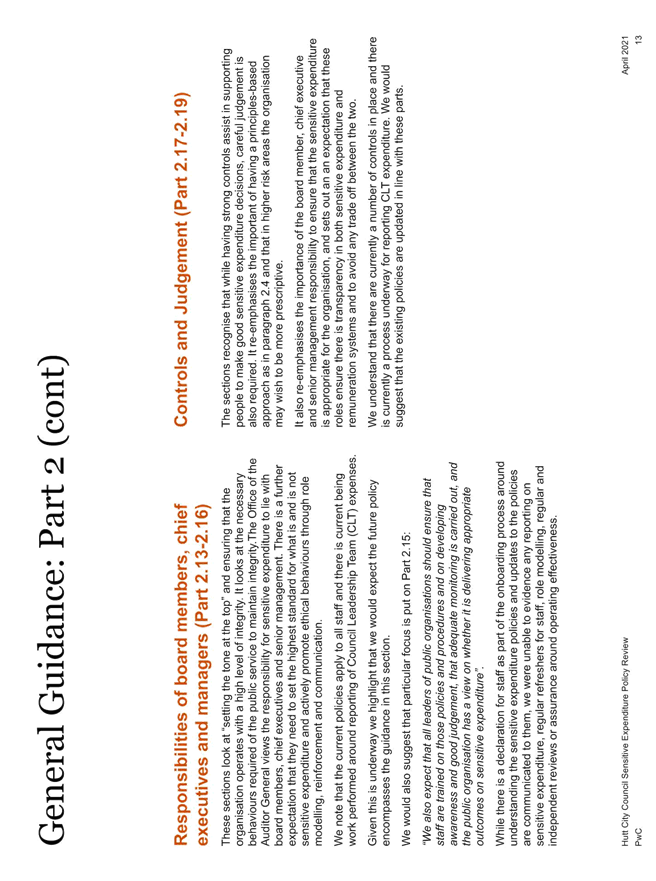
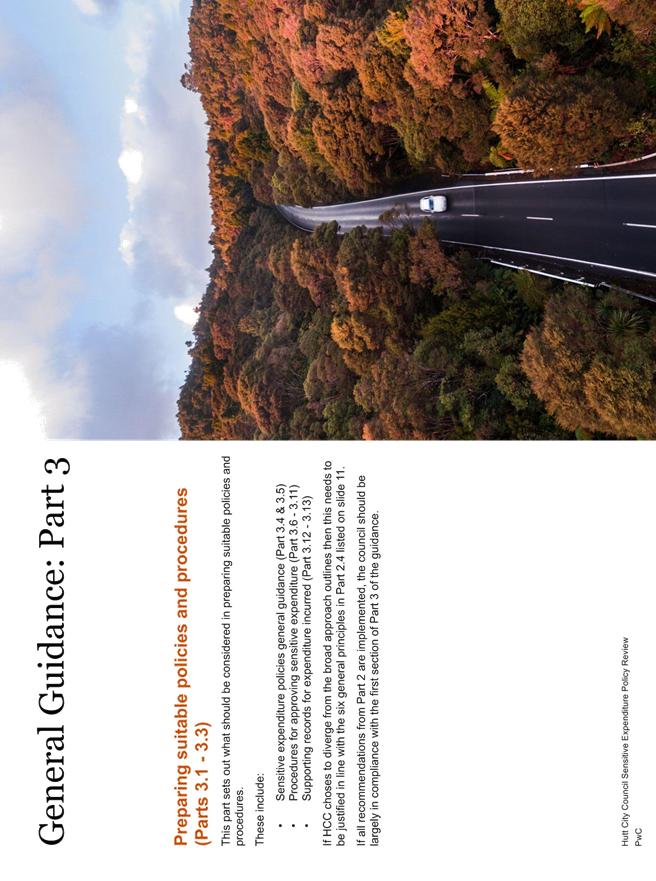



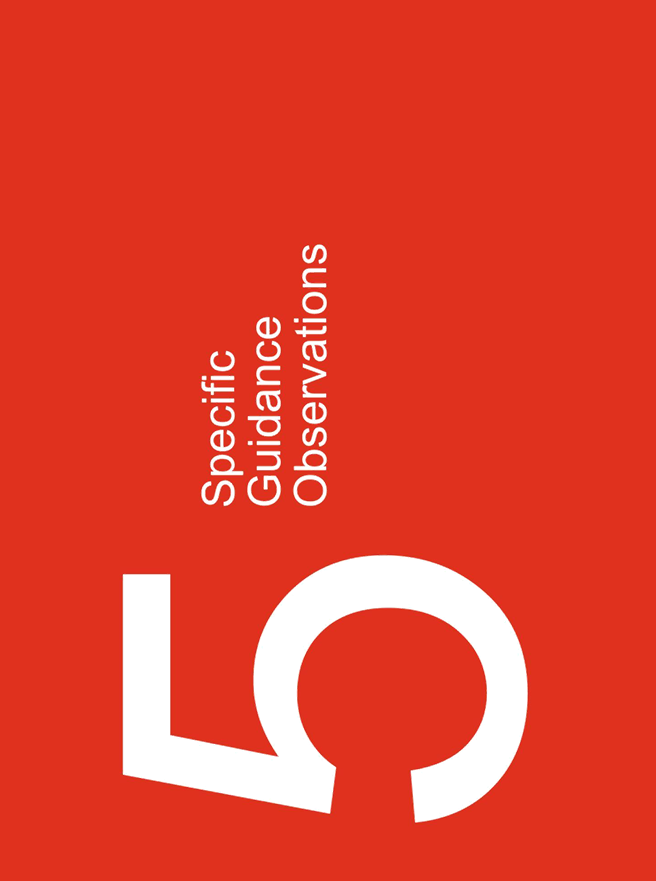
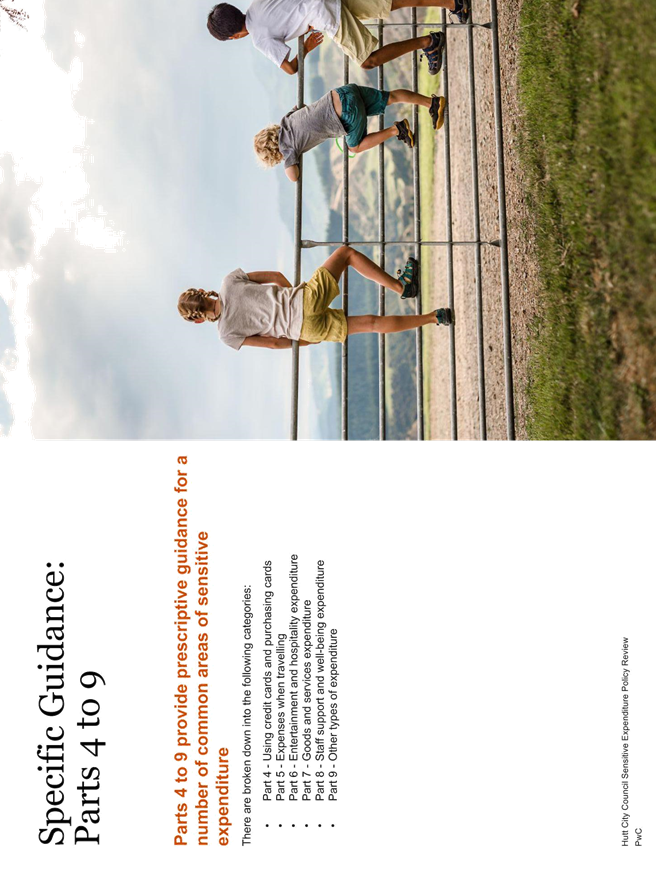


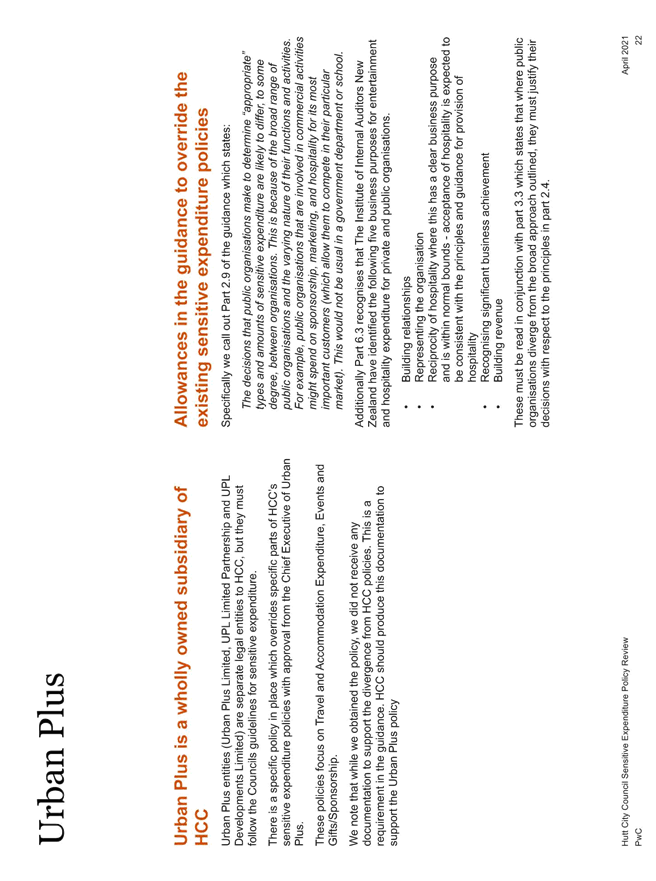

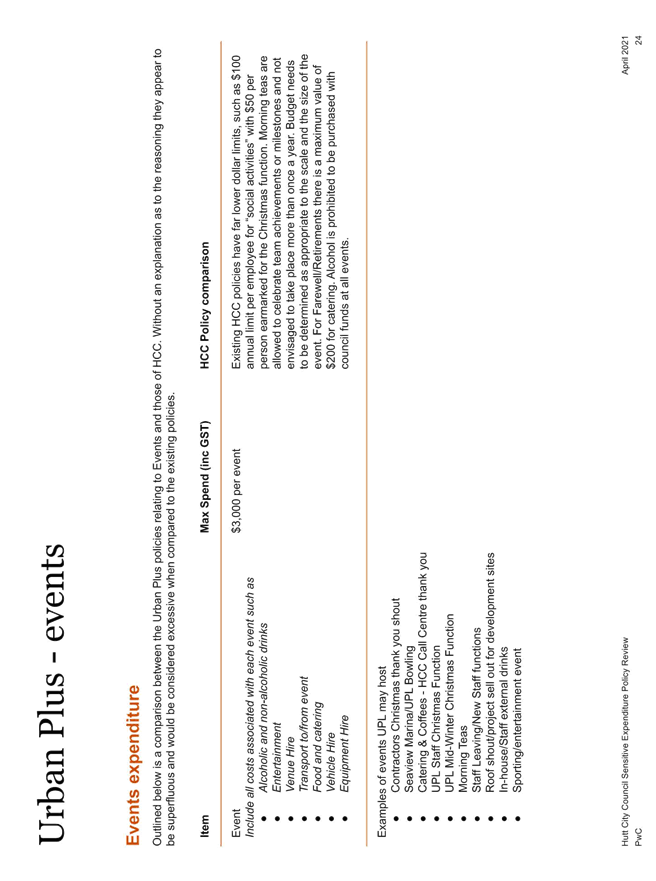
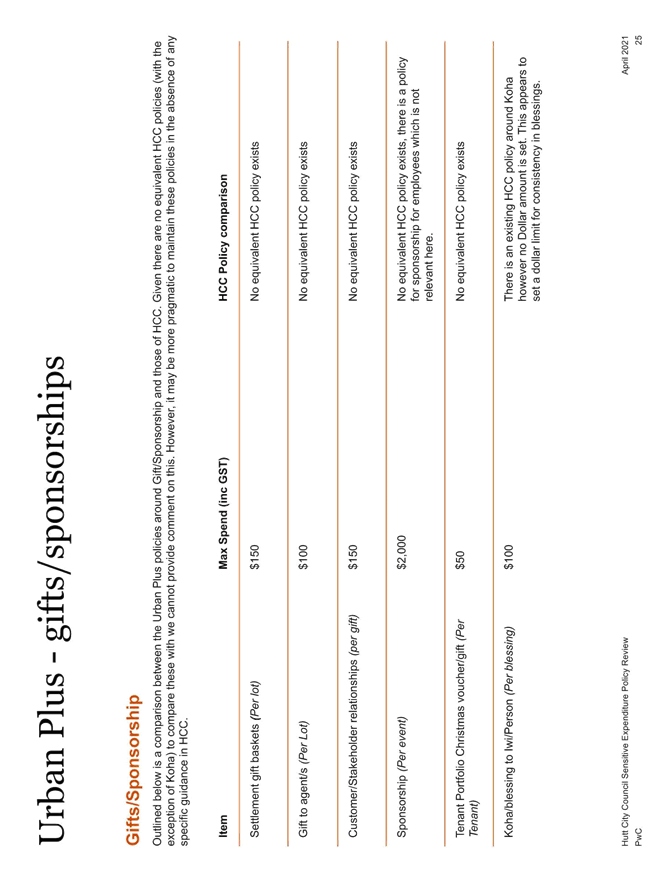

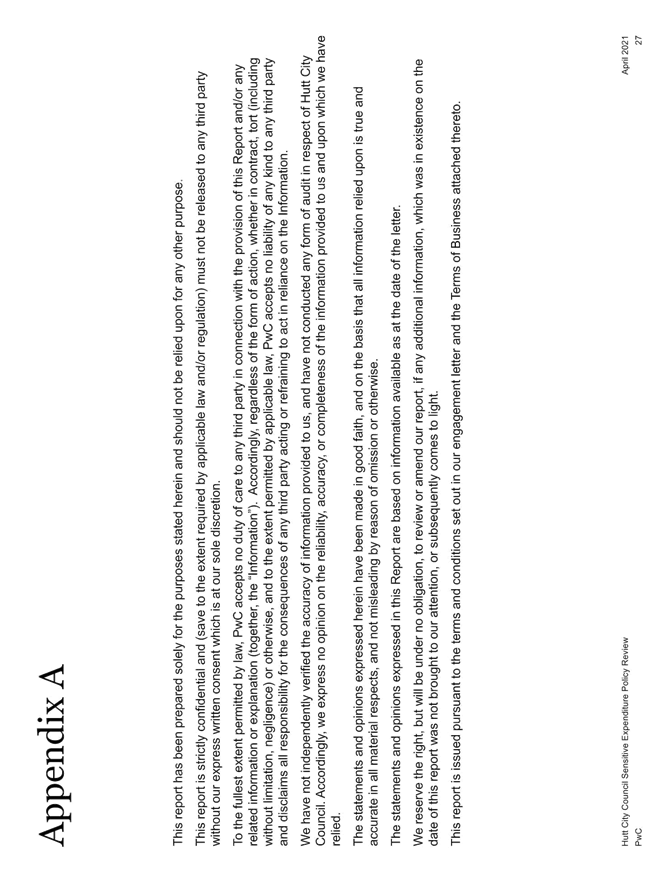
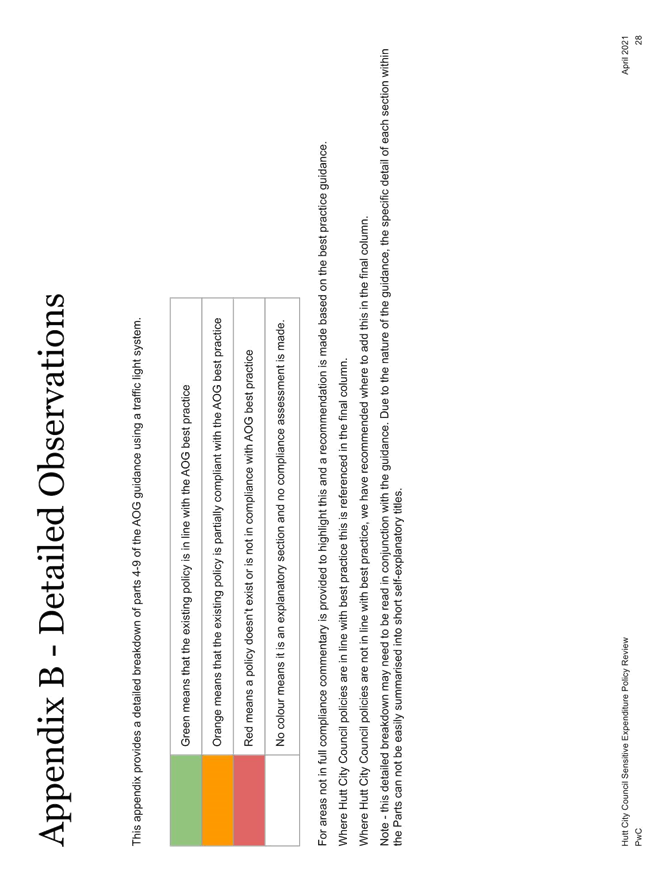
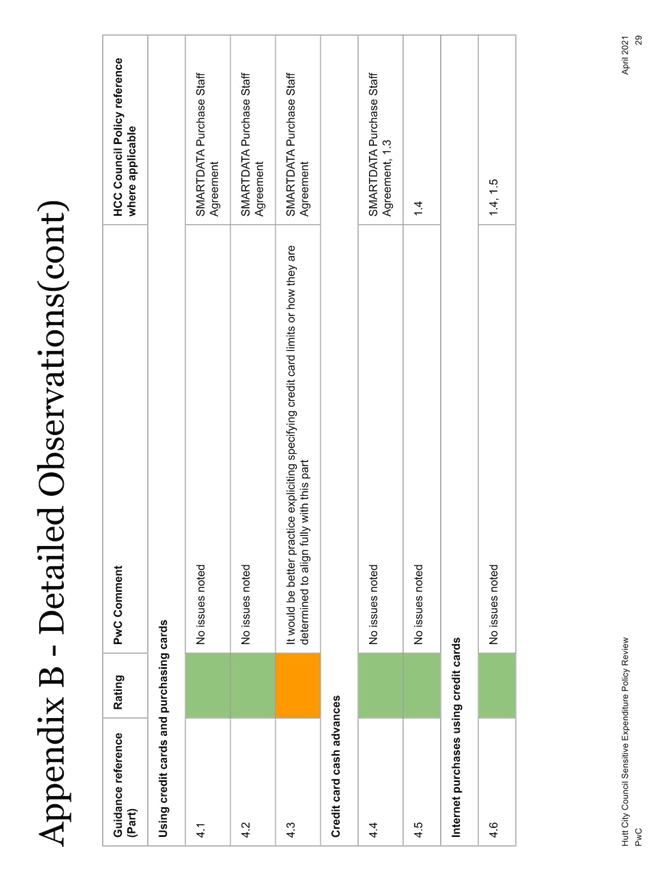
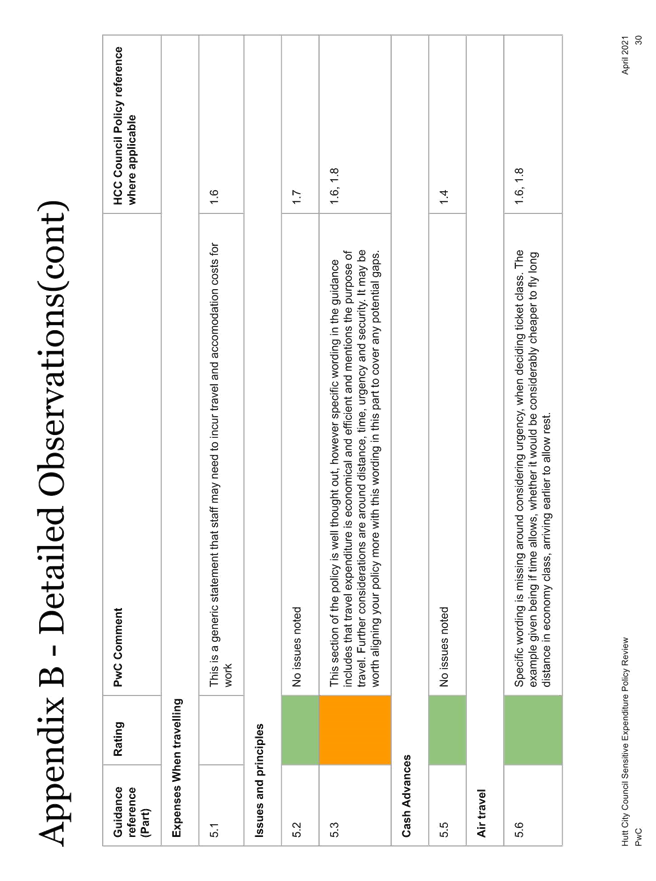
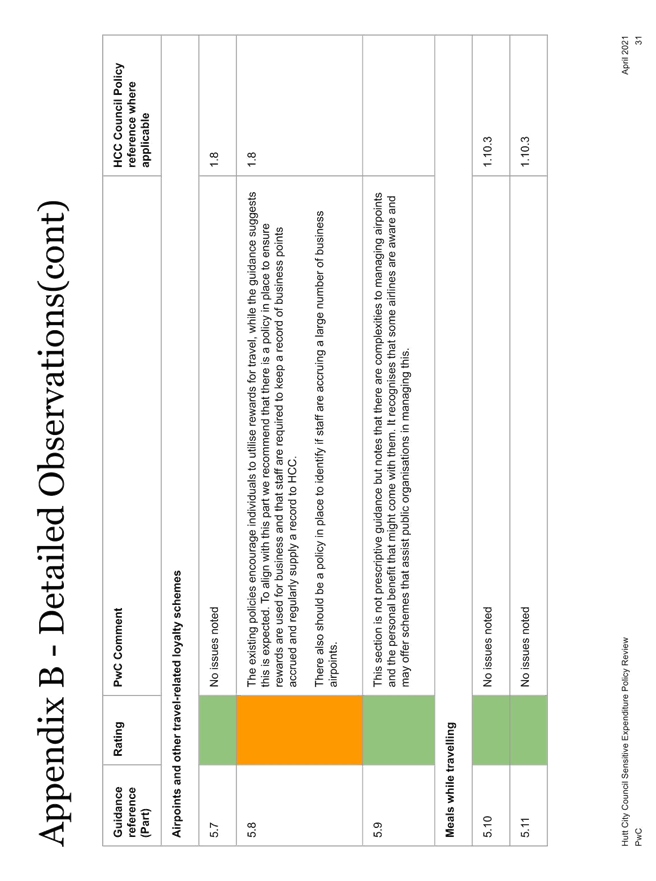

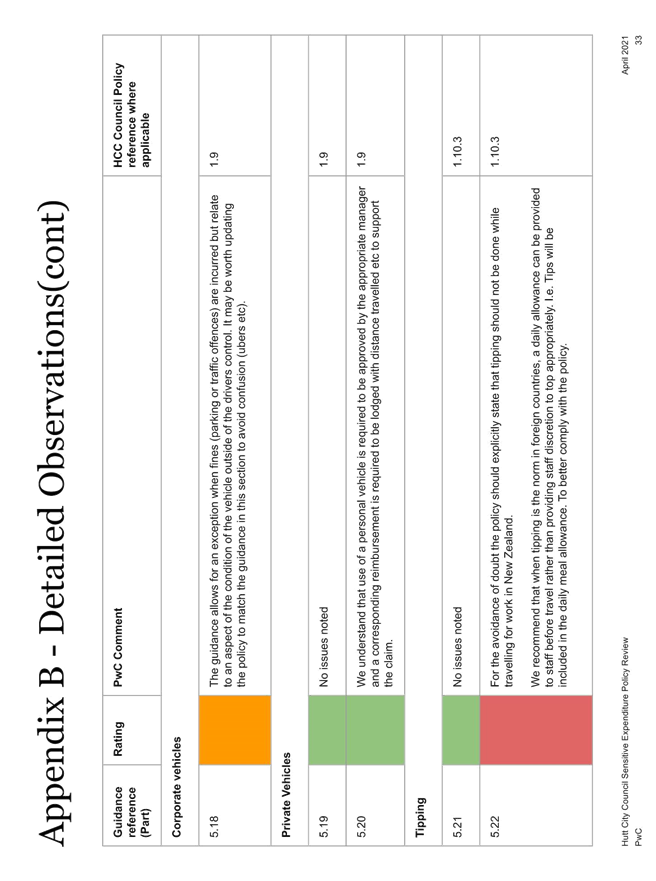
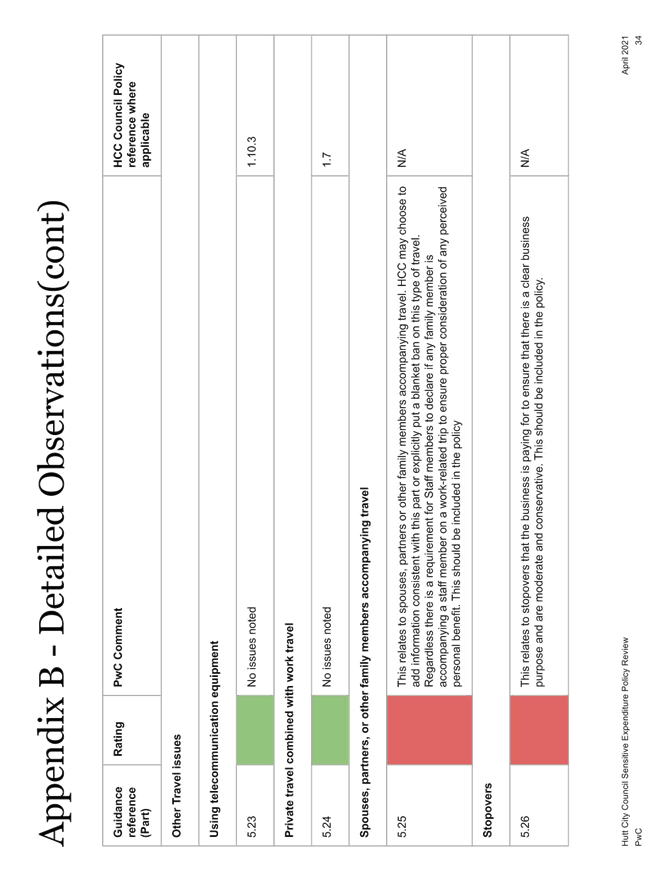
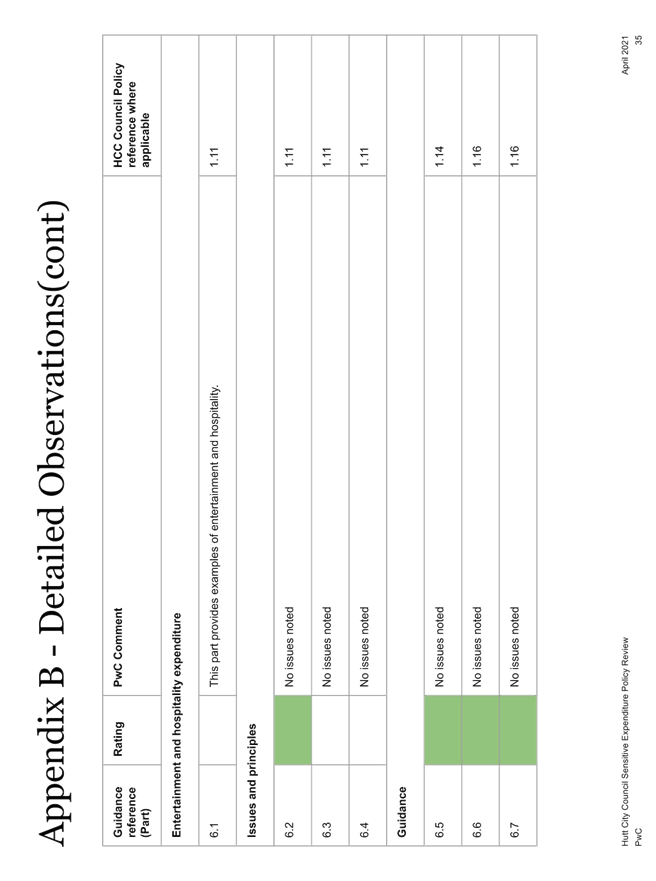
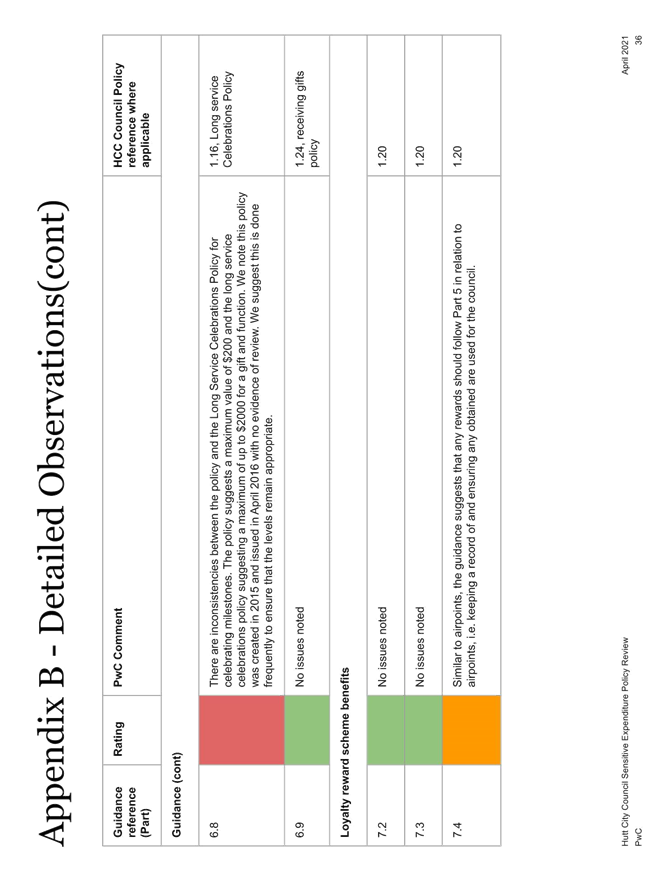

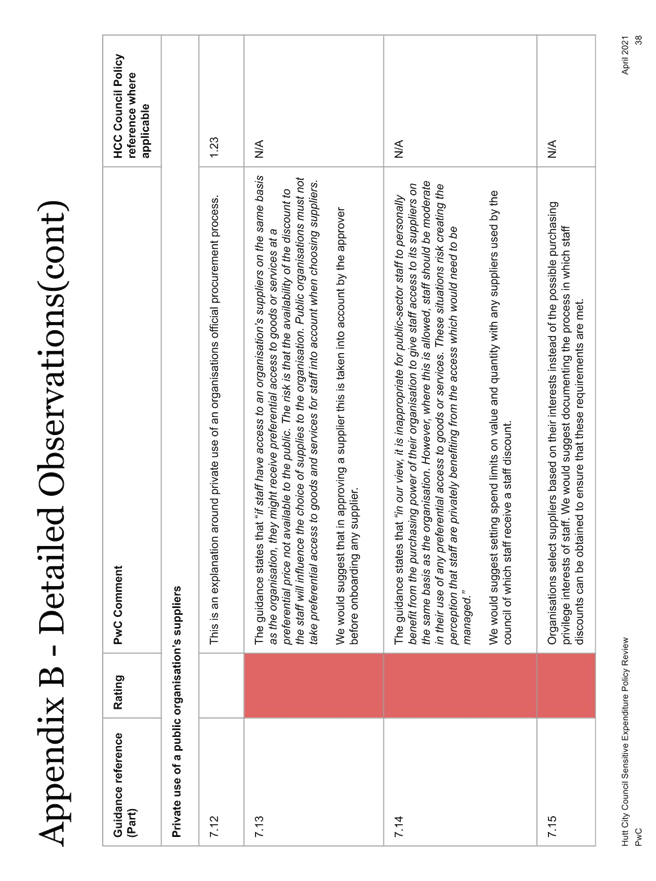

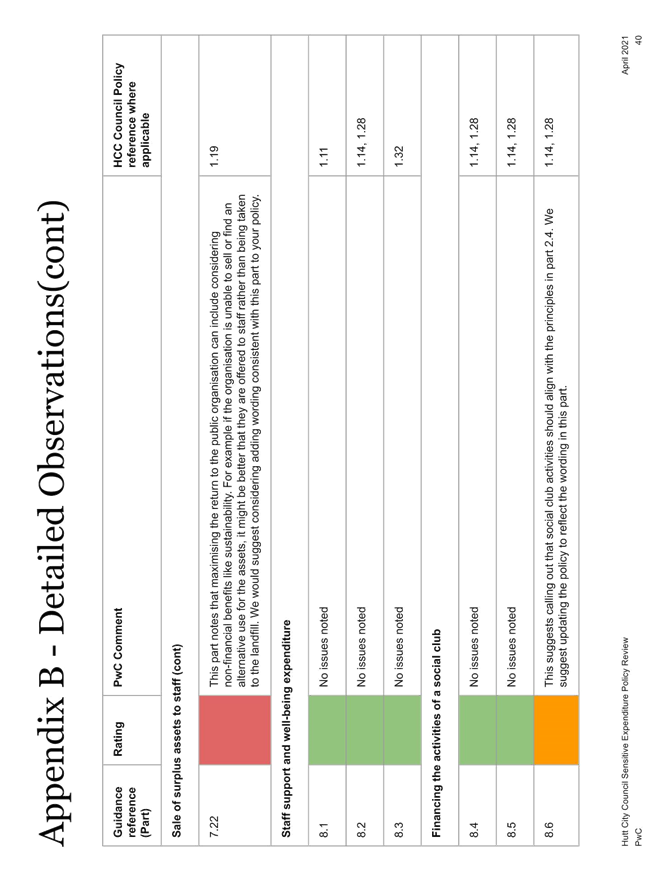
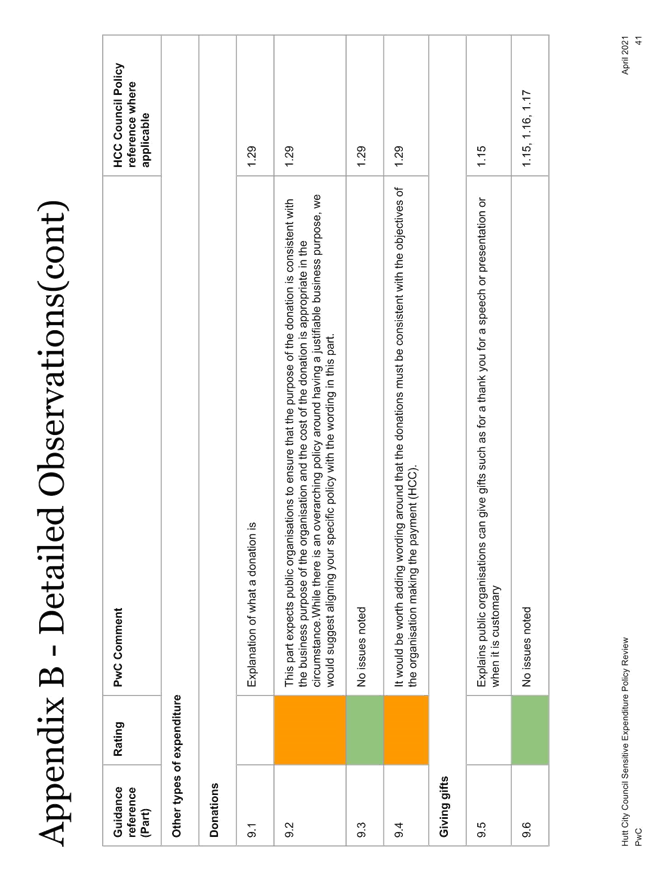


|
Attachment 2
|
Appendix 2 OAG - Controlling sensitive expenditure
Guide for public organisations)
|
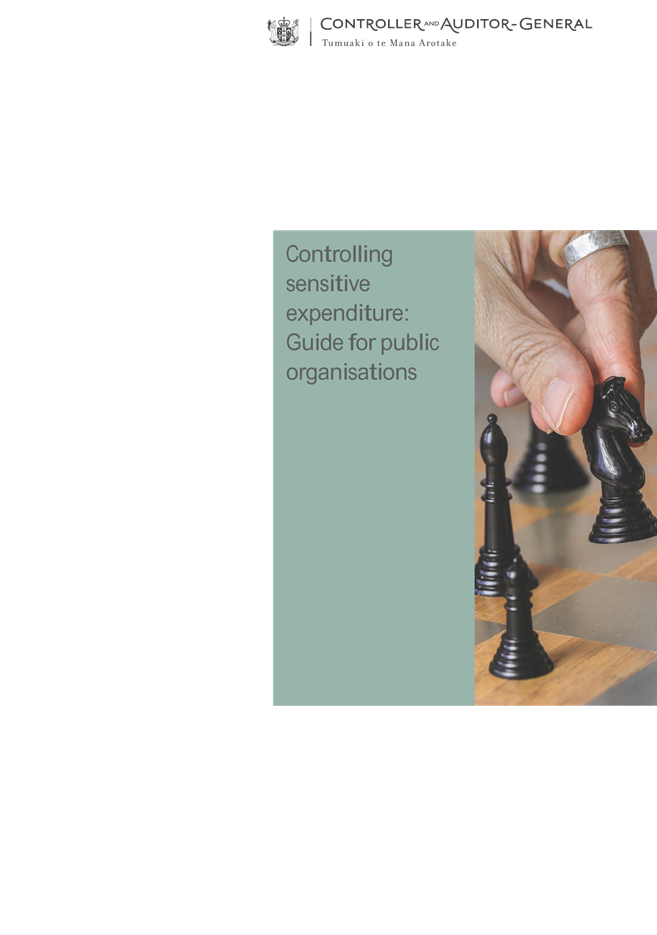
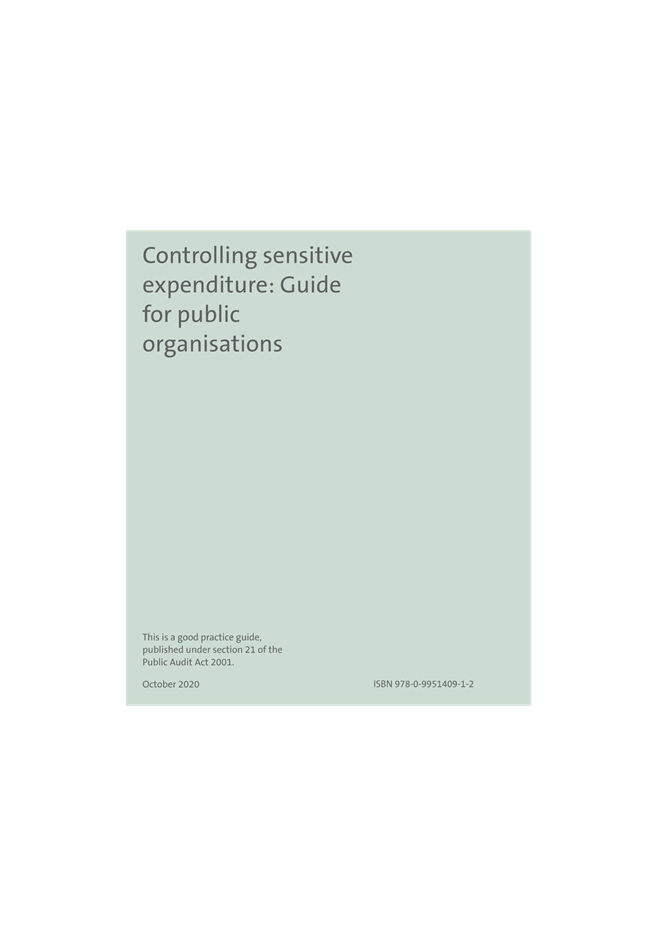
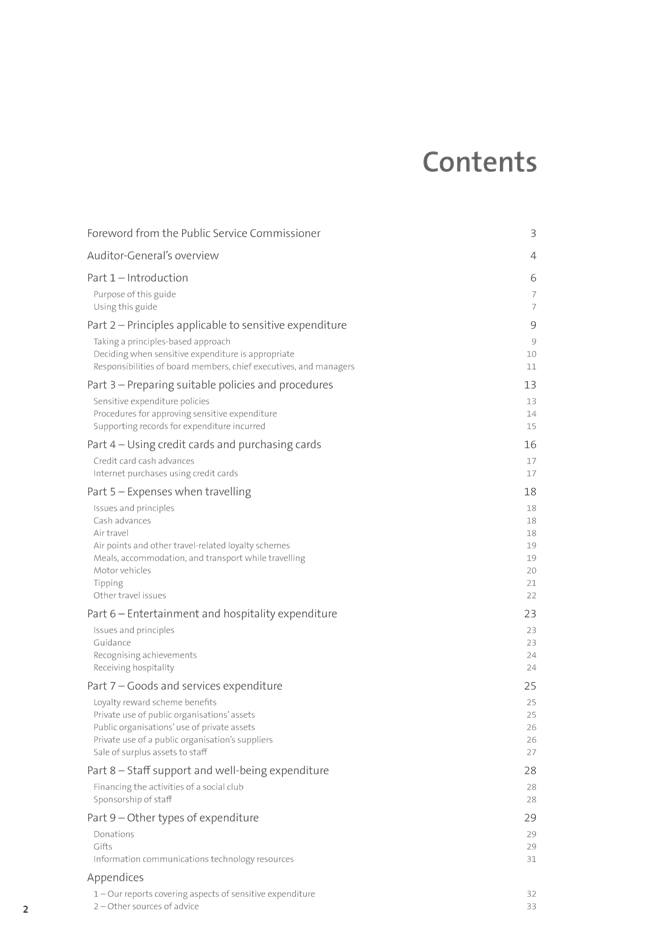
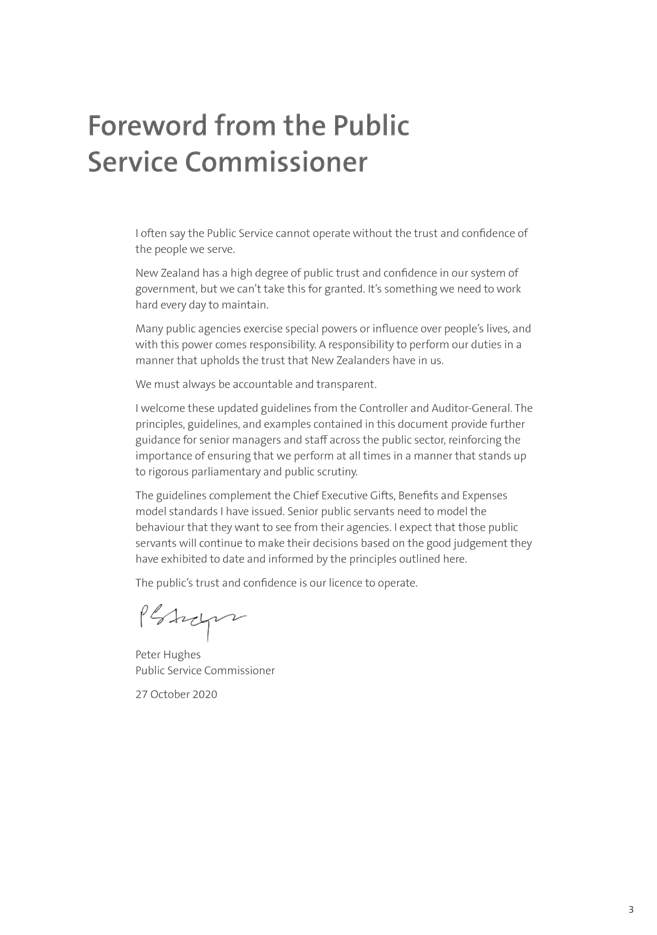
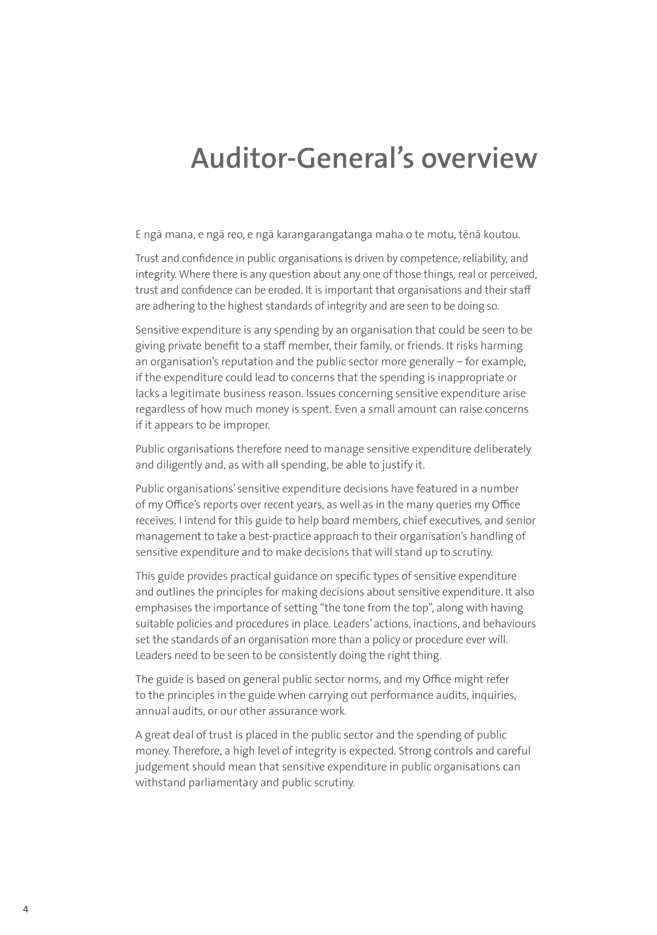

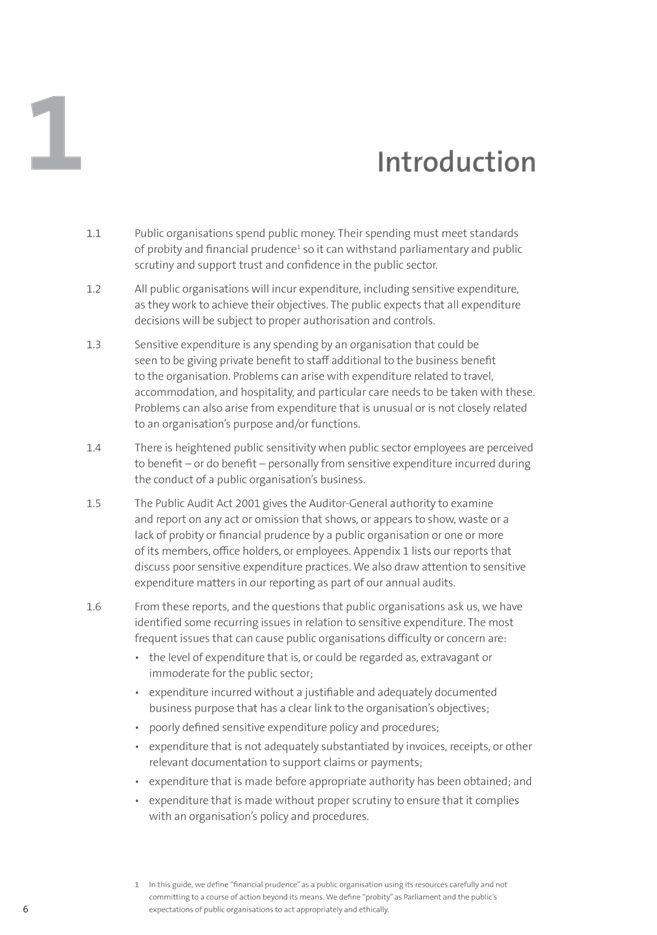
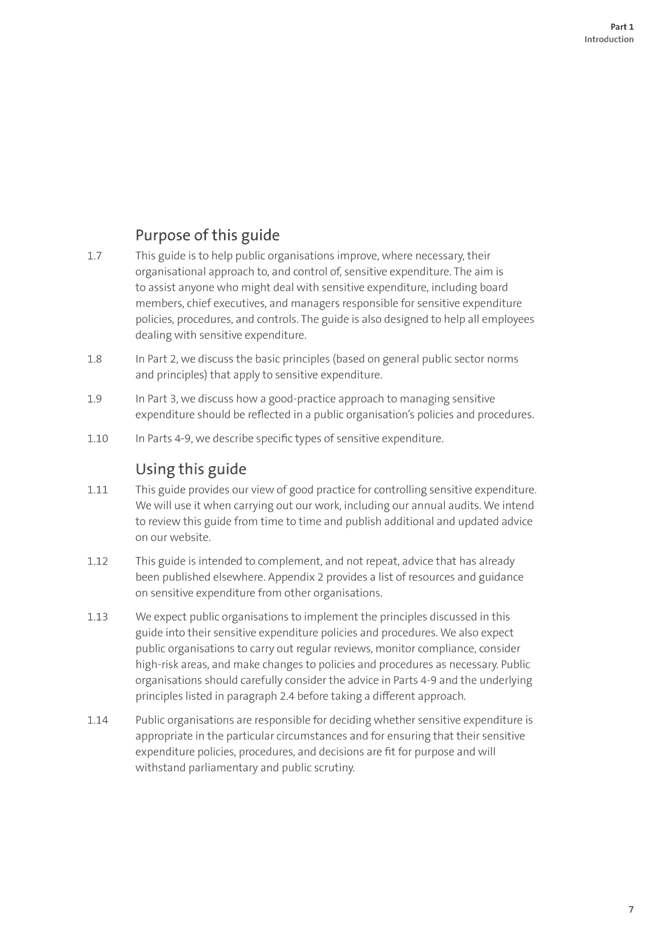


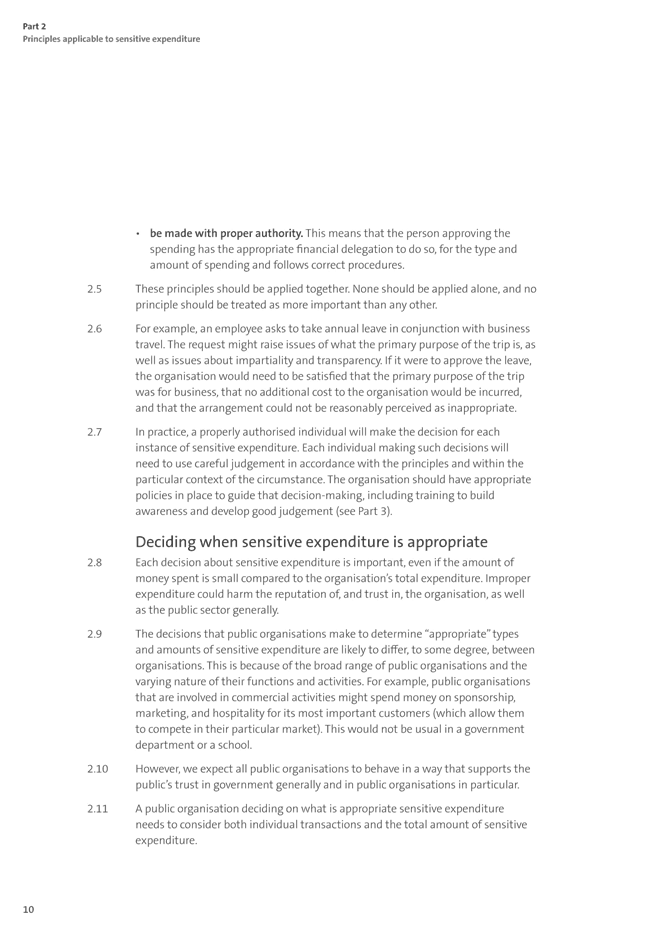
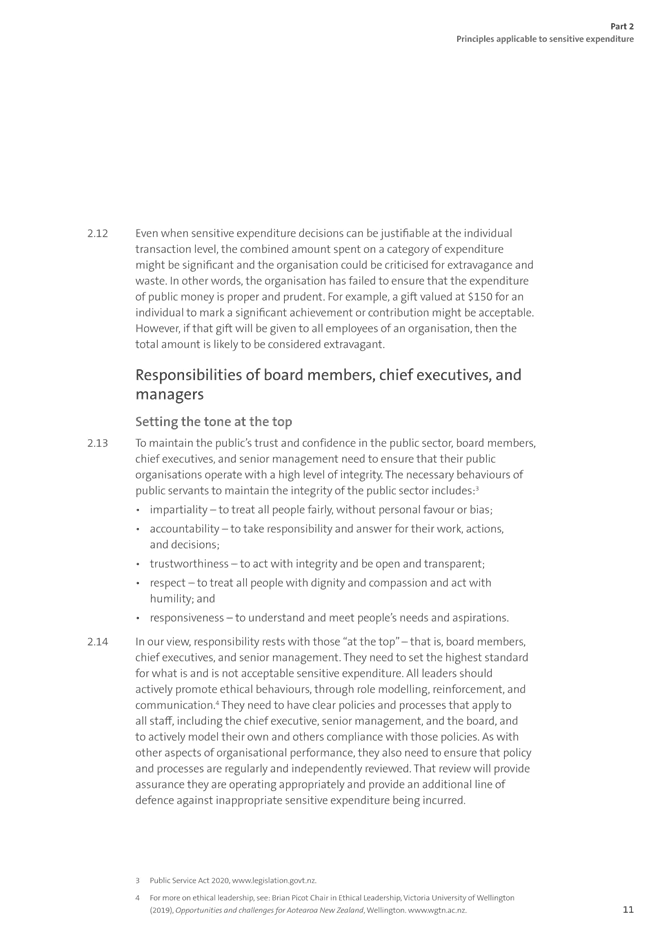

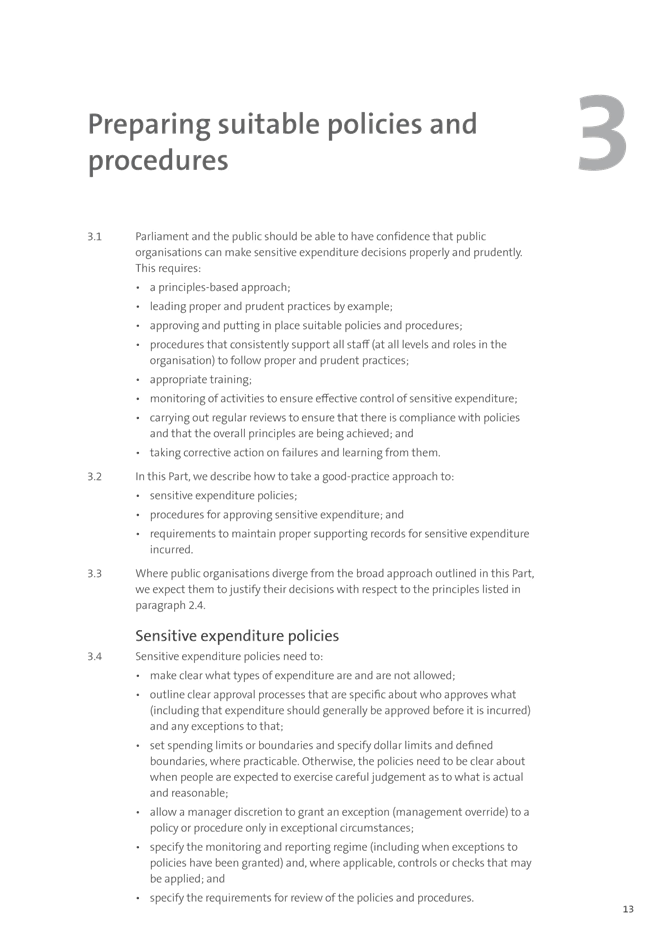

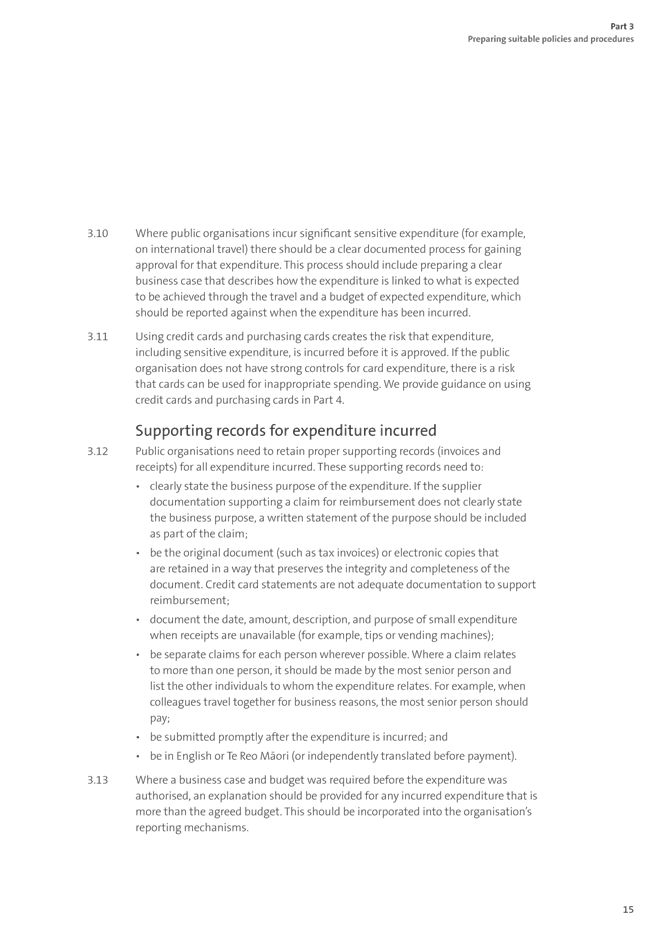
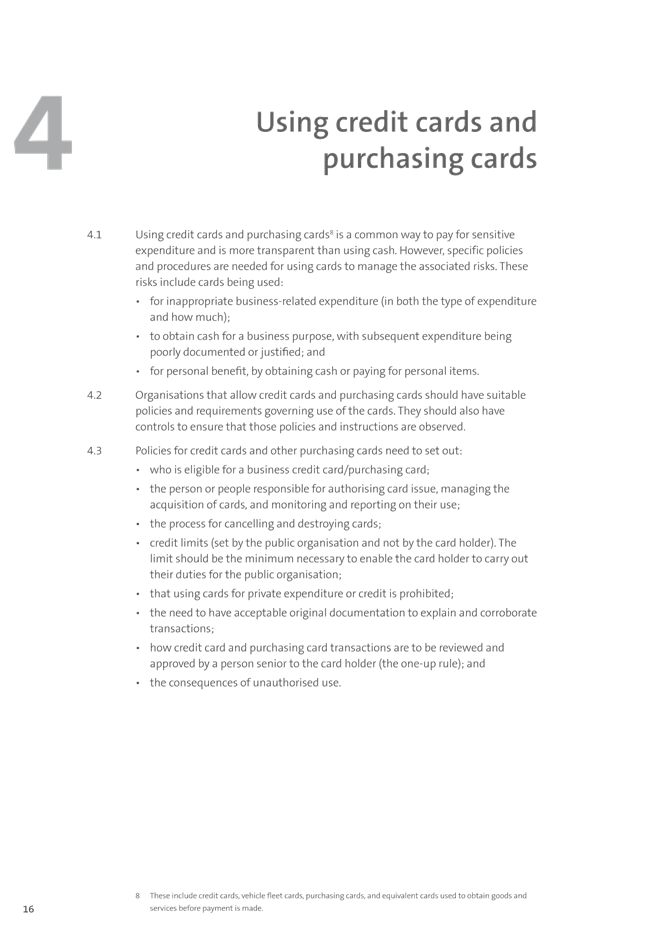

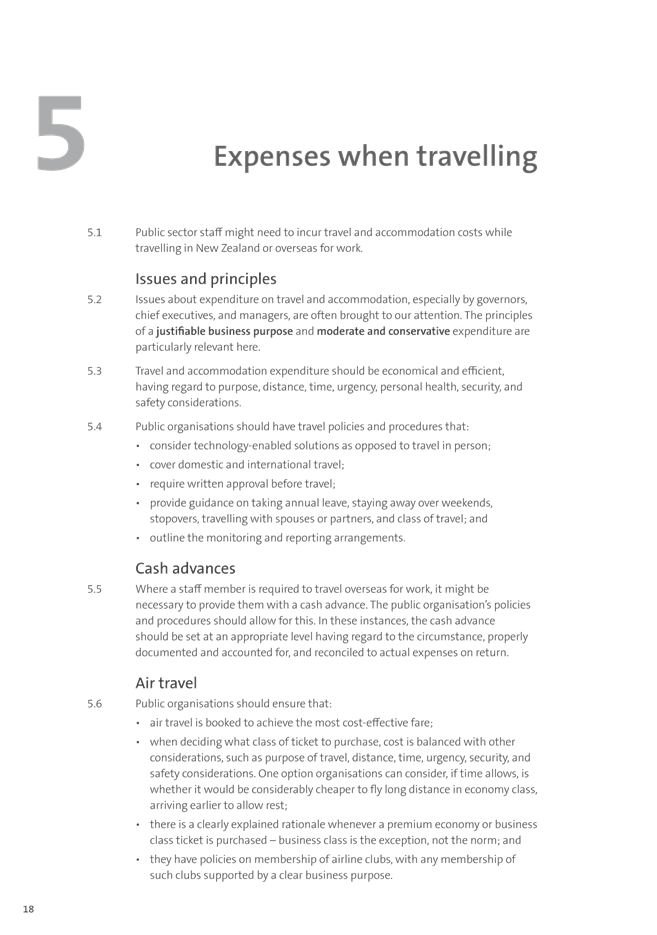
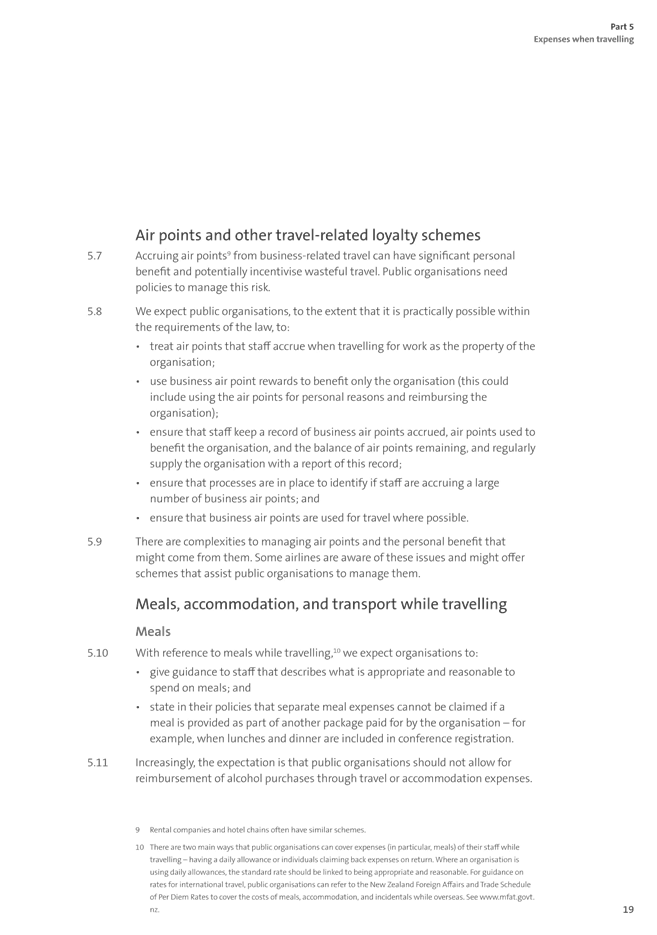

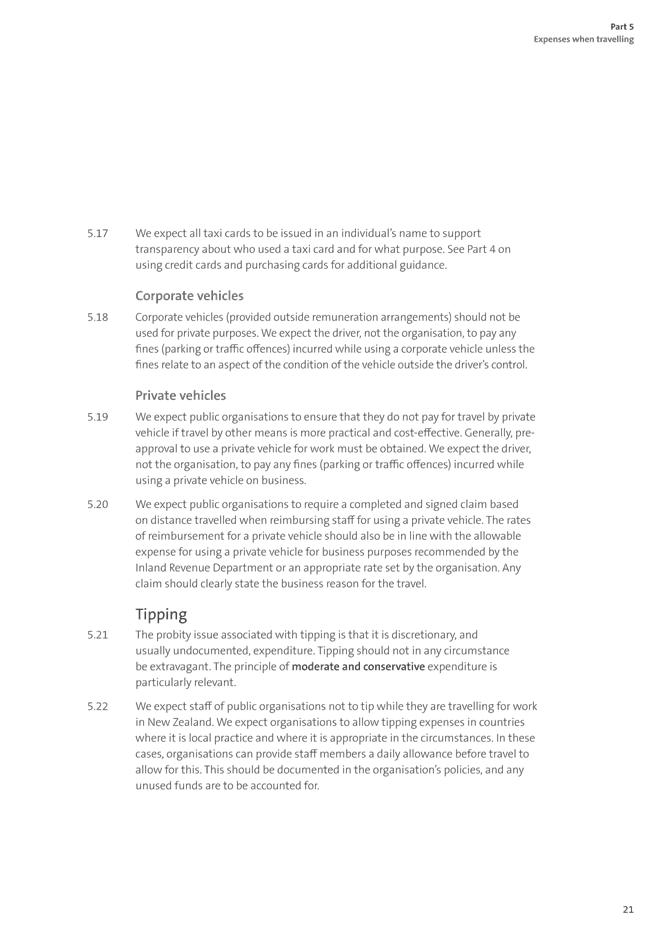
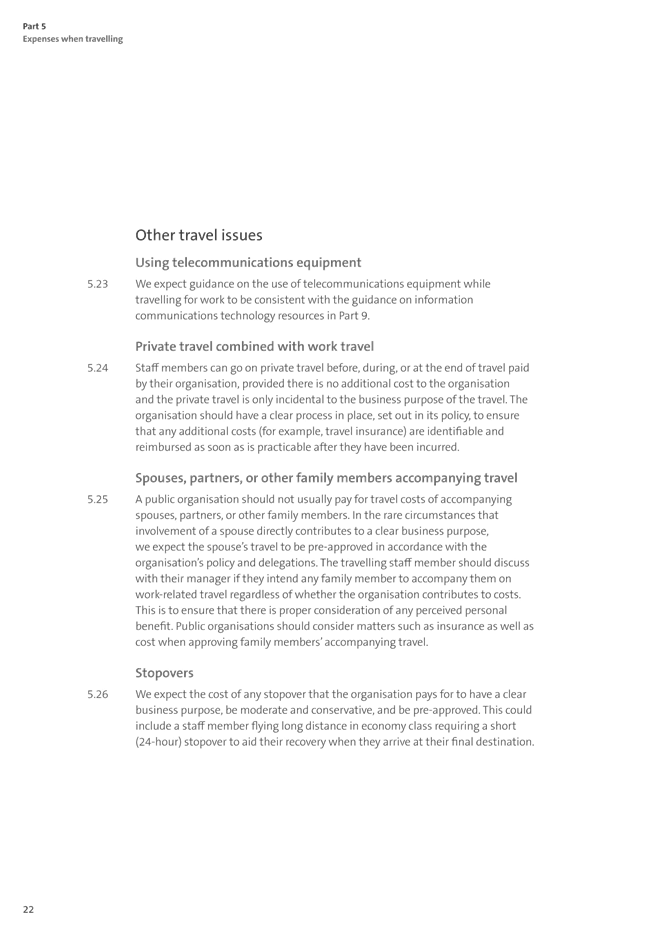
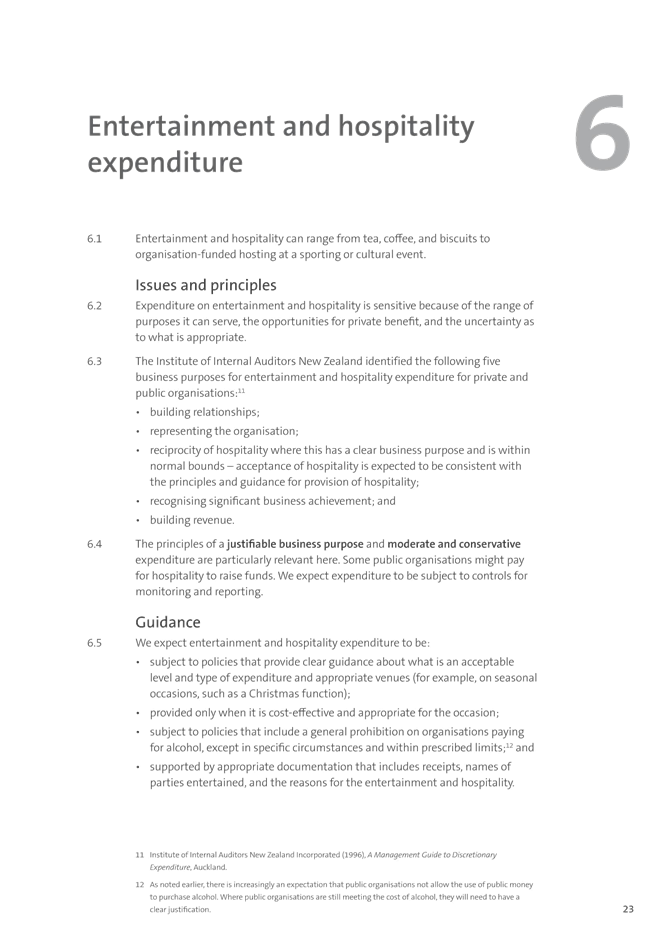
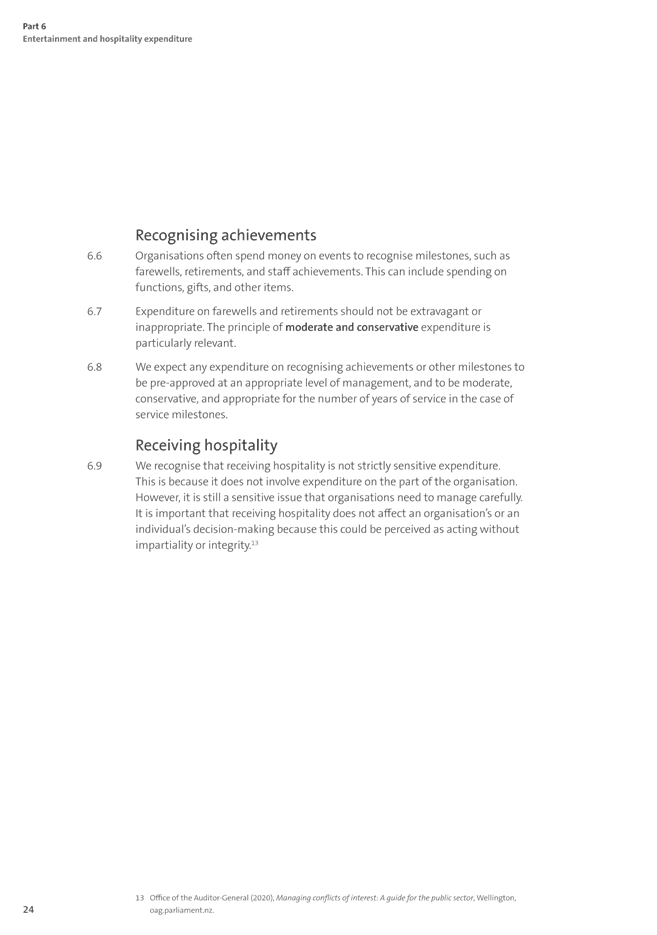
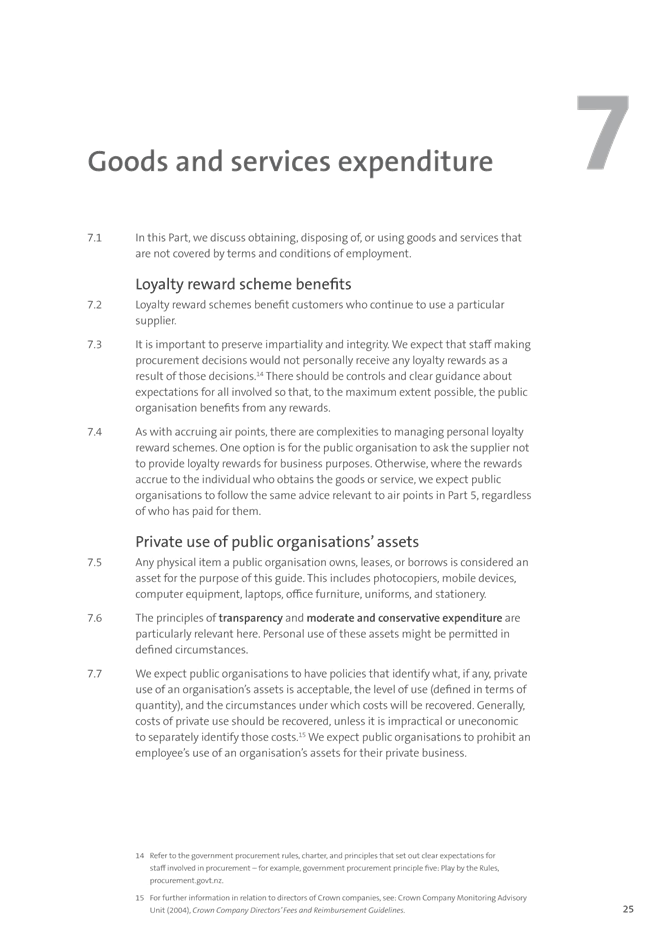
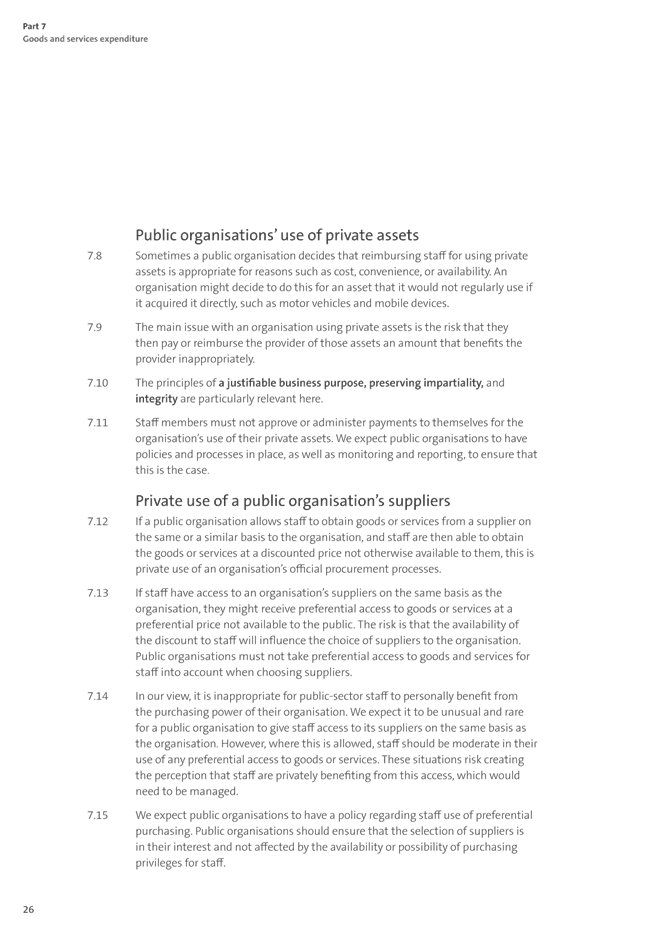
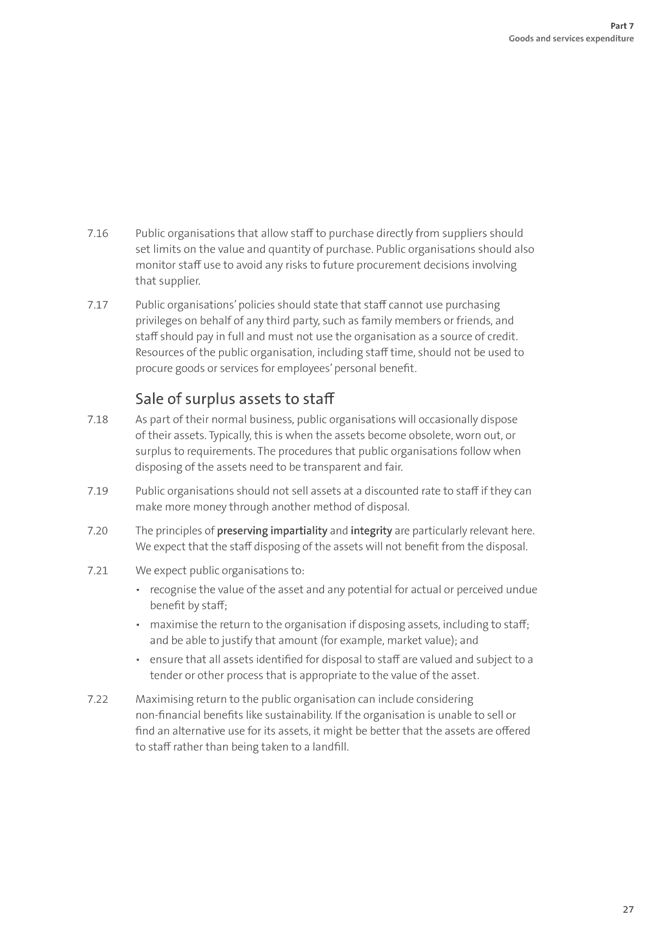
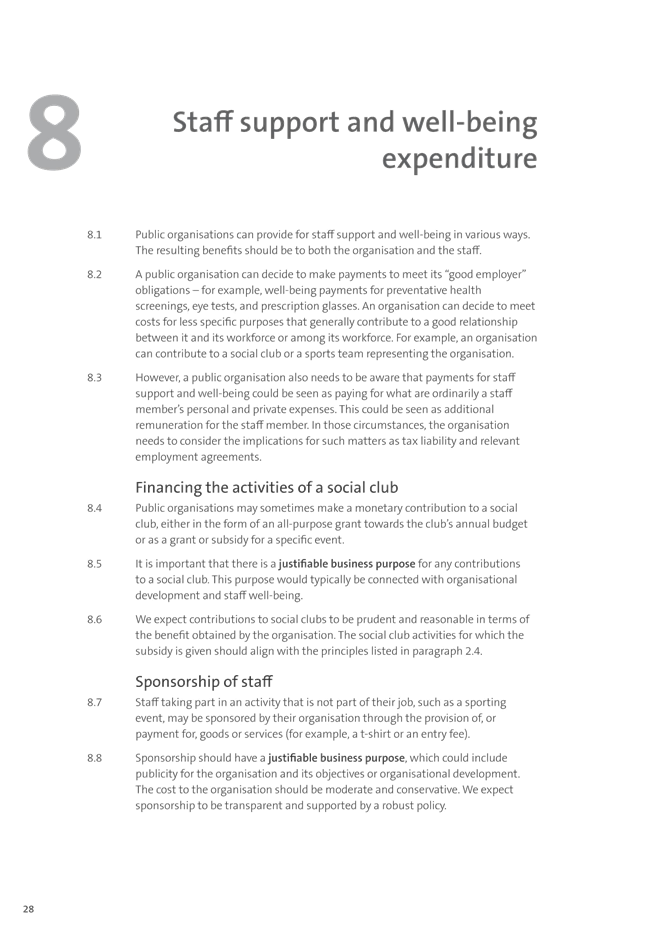
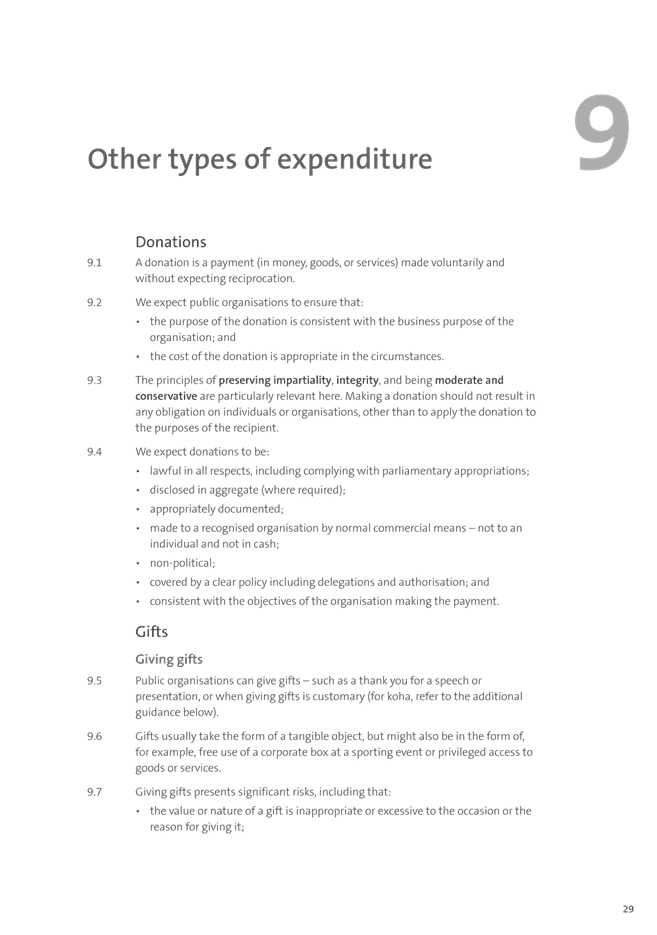
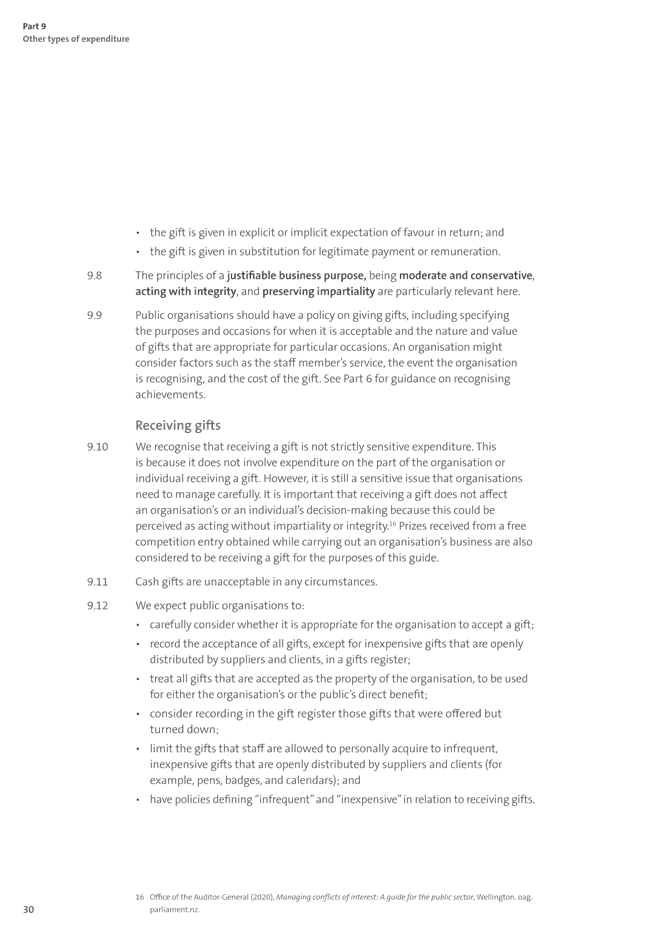
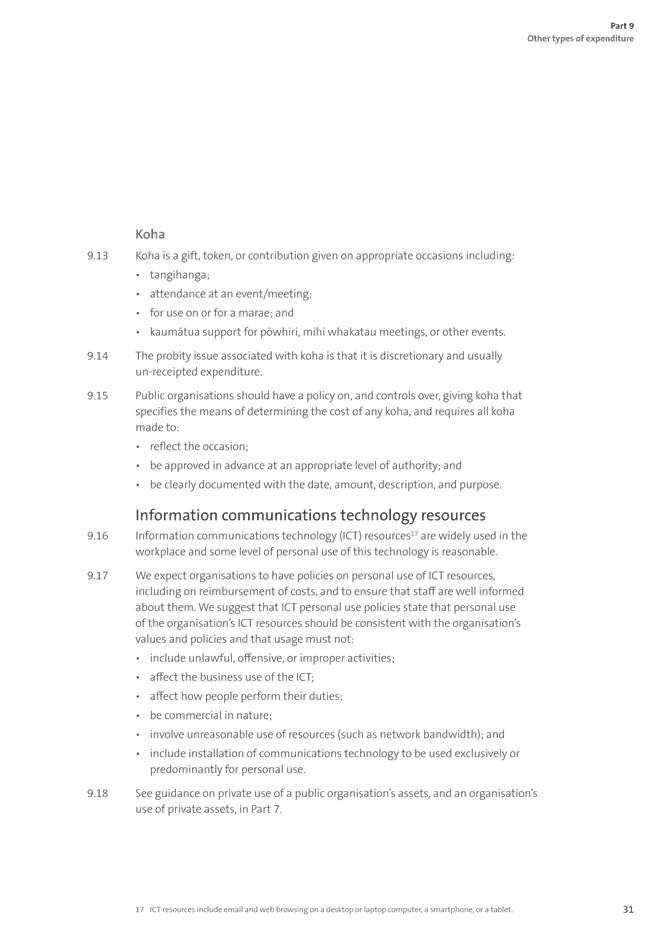
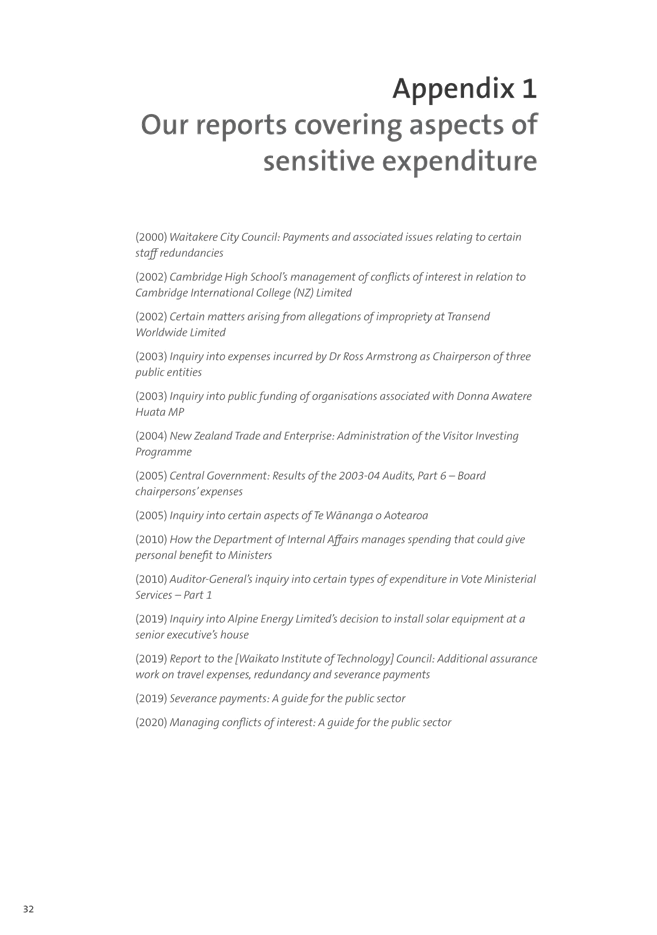
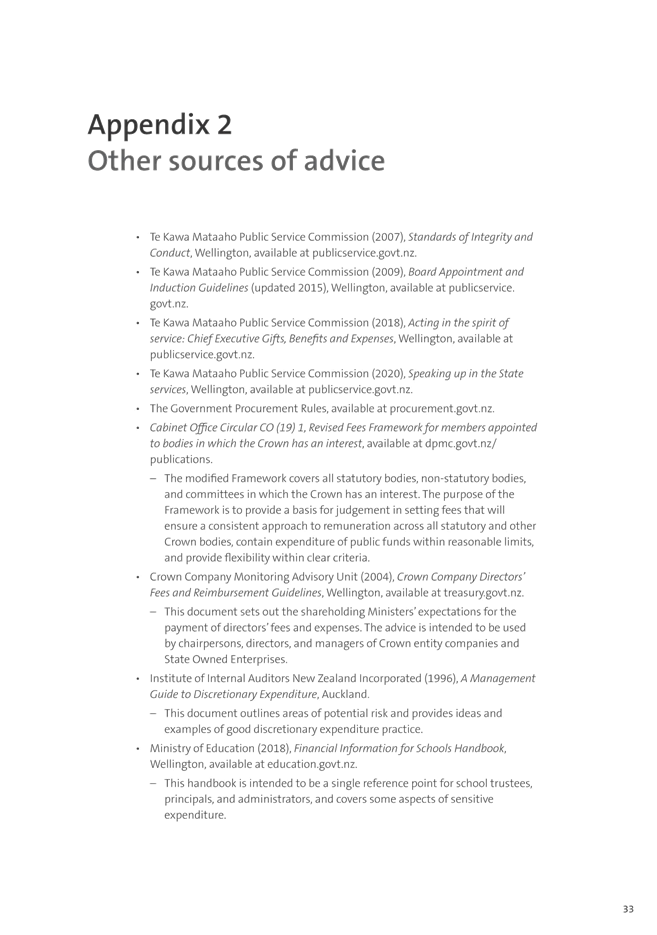


|
Attachment 3
|
Appendix 3: HCC Group - Sensitive Expenditure Policy
|
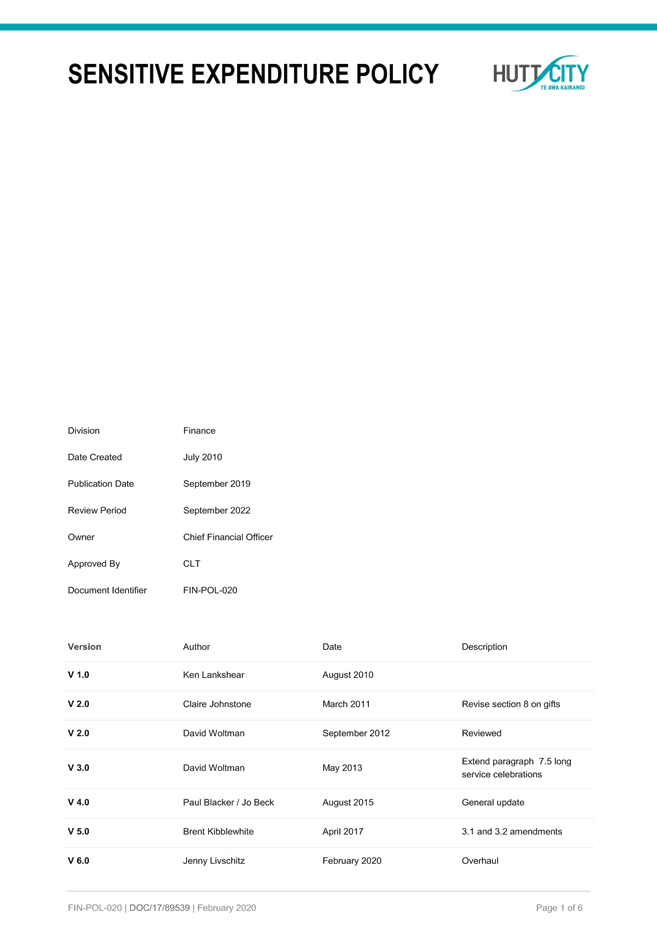
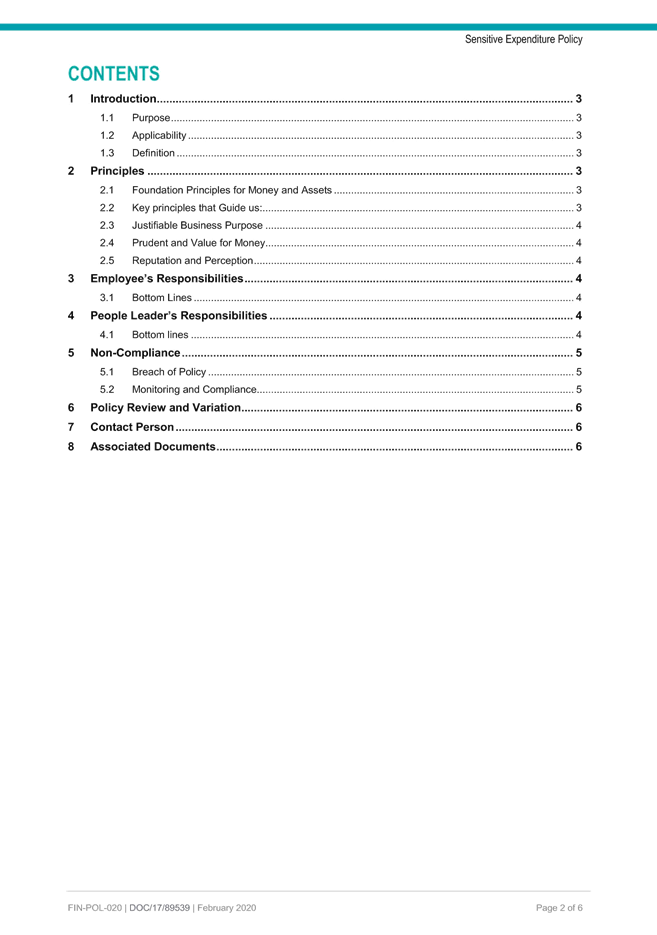
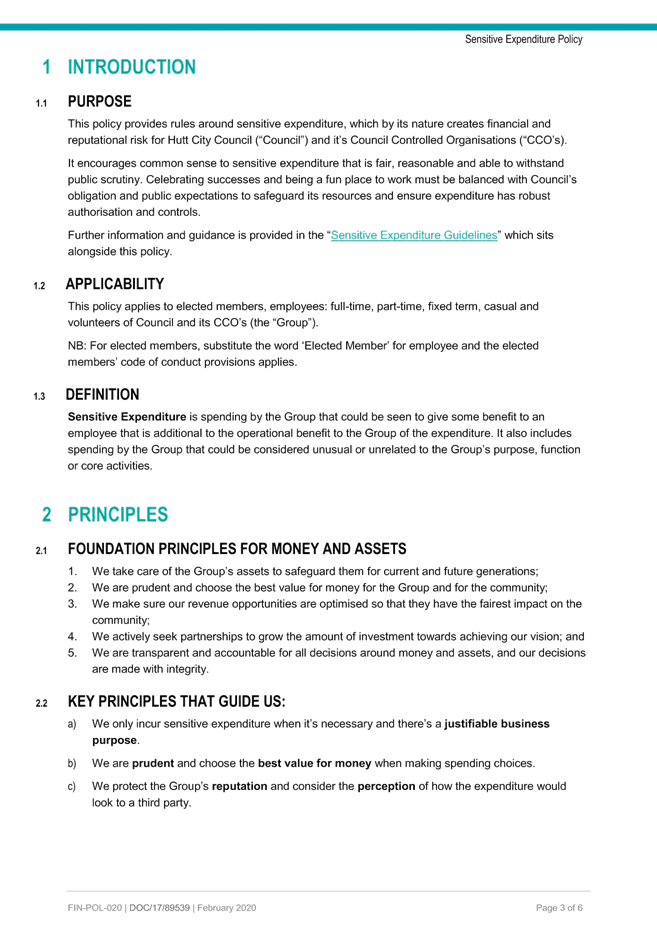
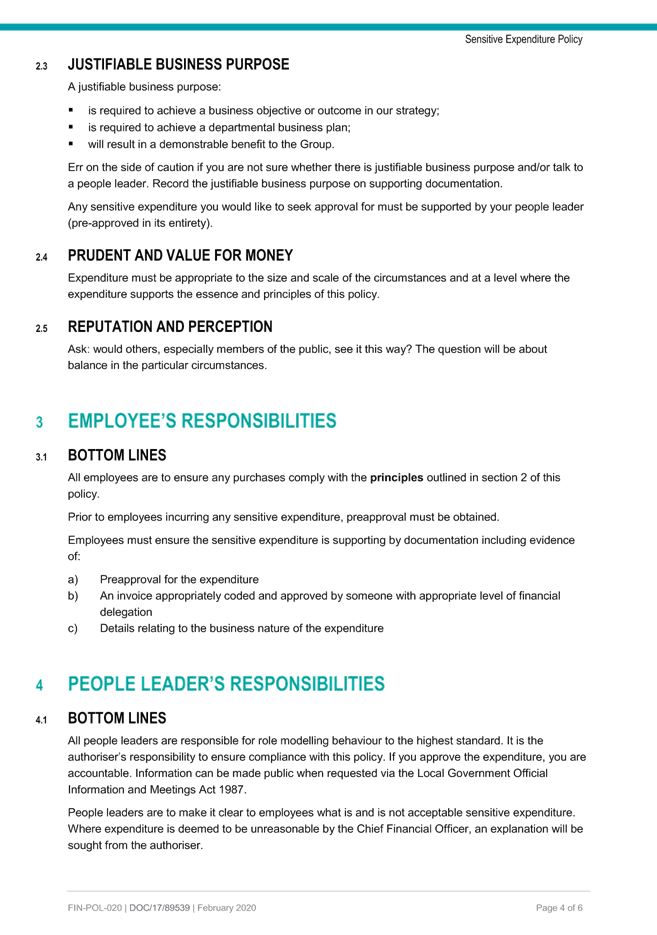

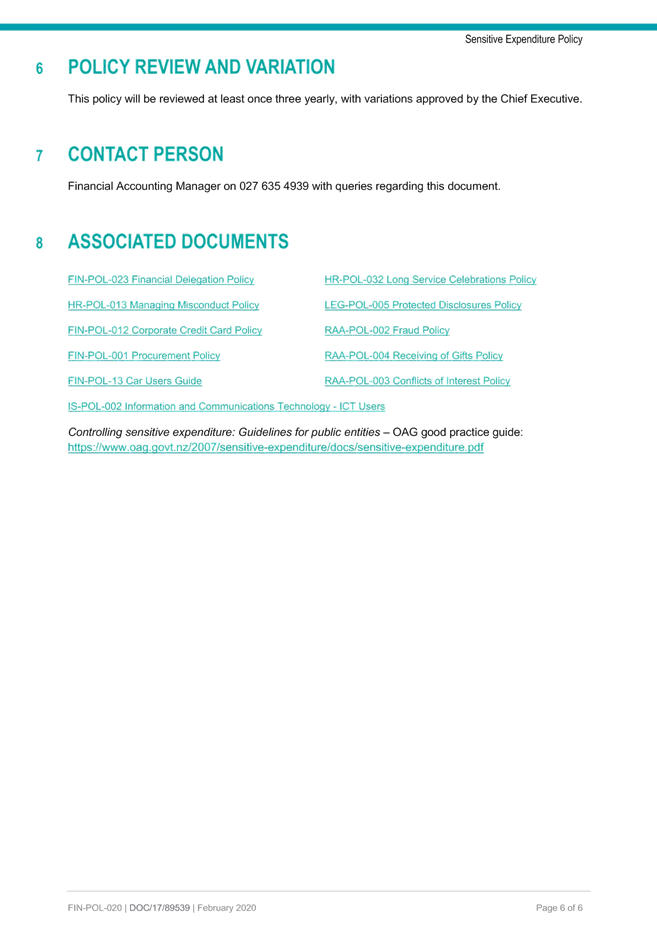
|
Attachment 4
|
Appendix 4: Sensitive Expenditure Guidelines
|


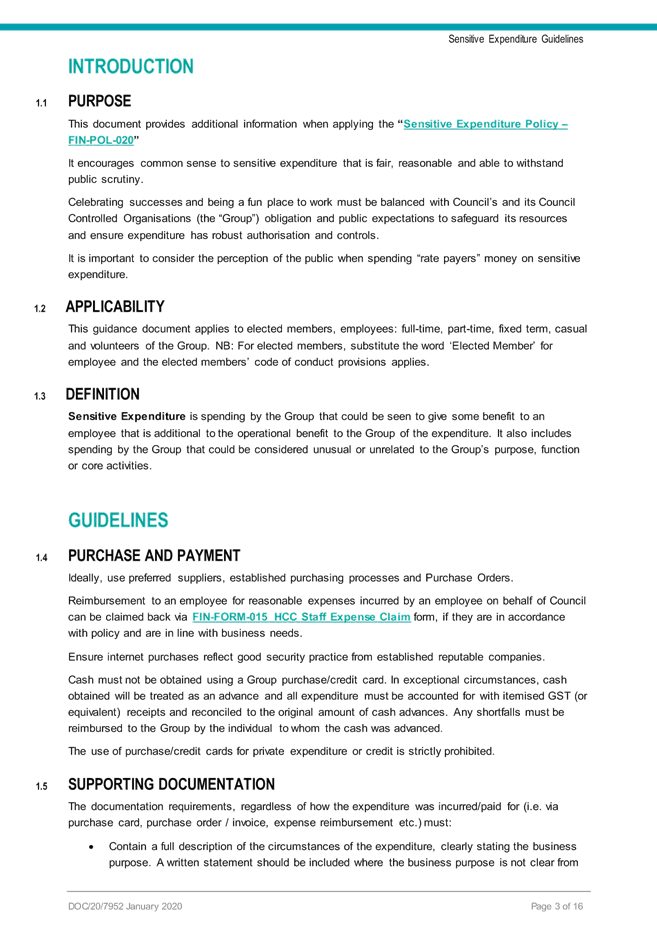

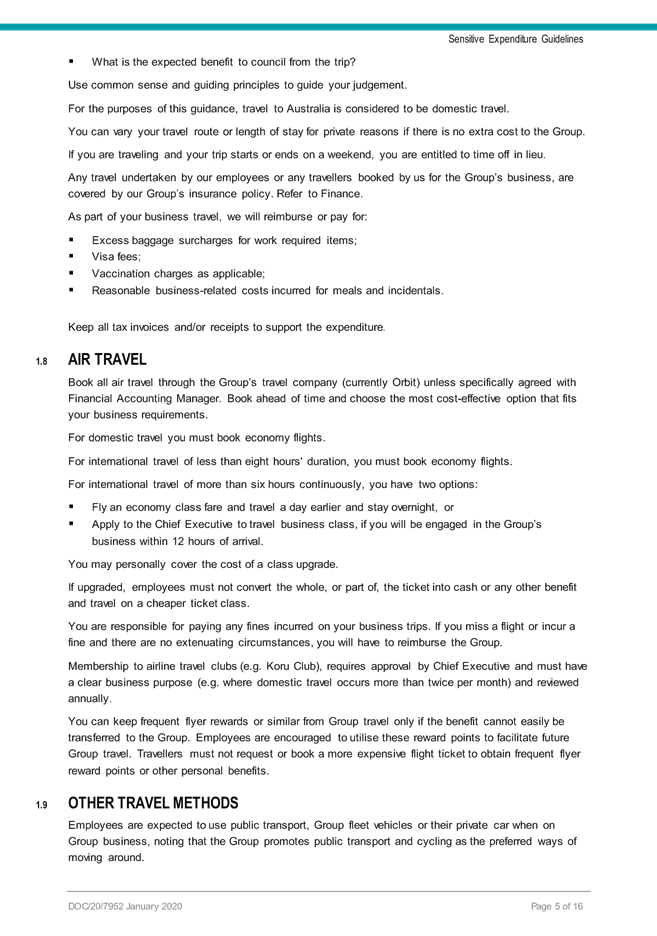
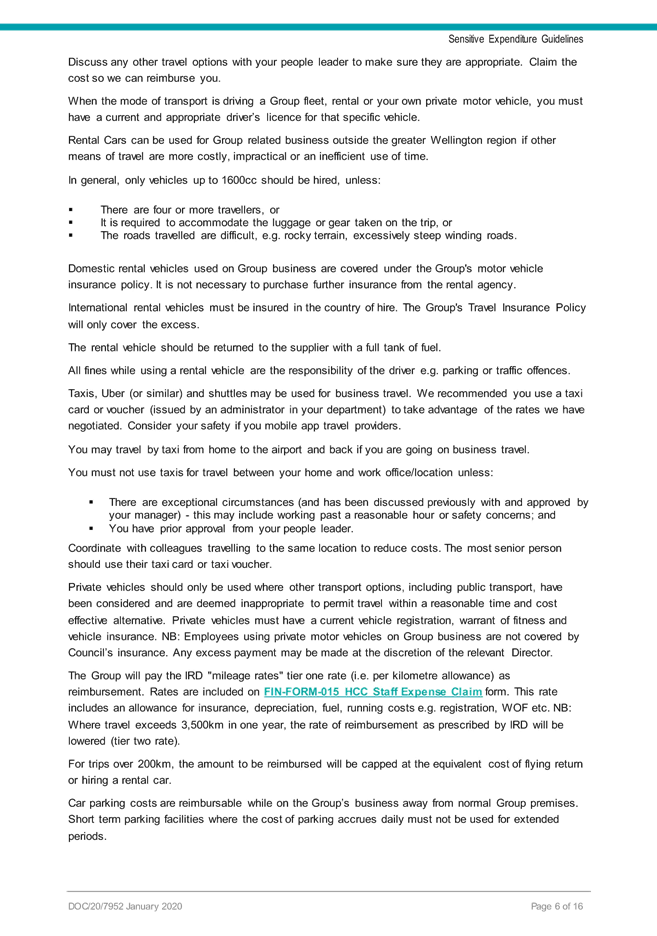

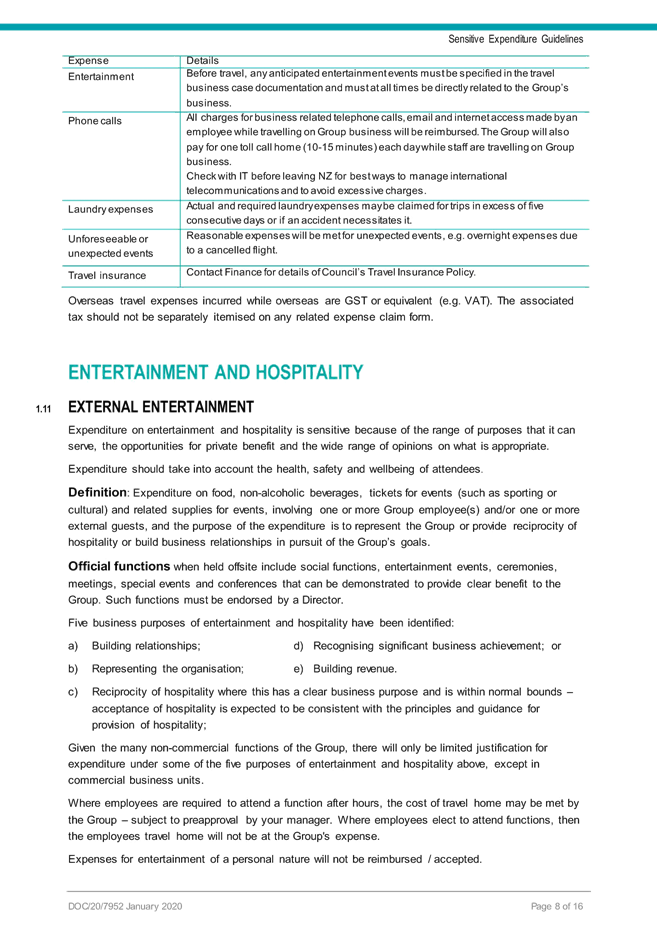

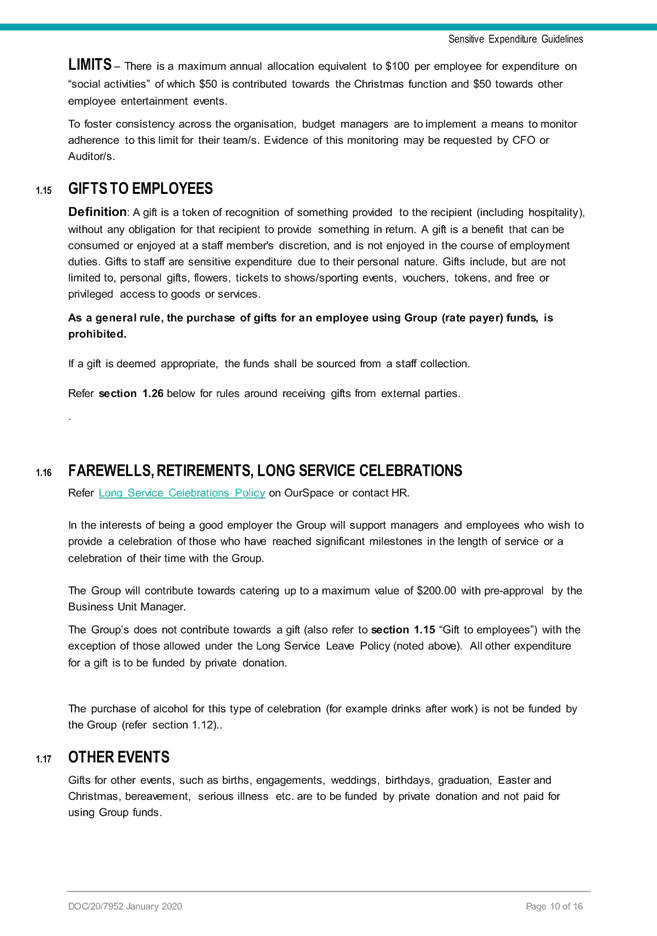

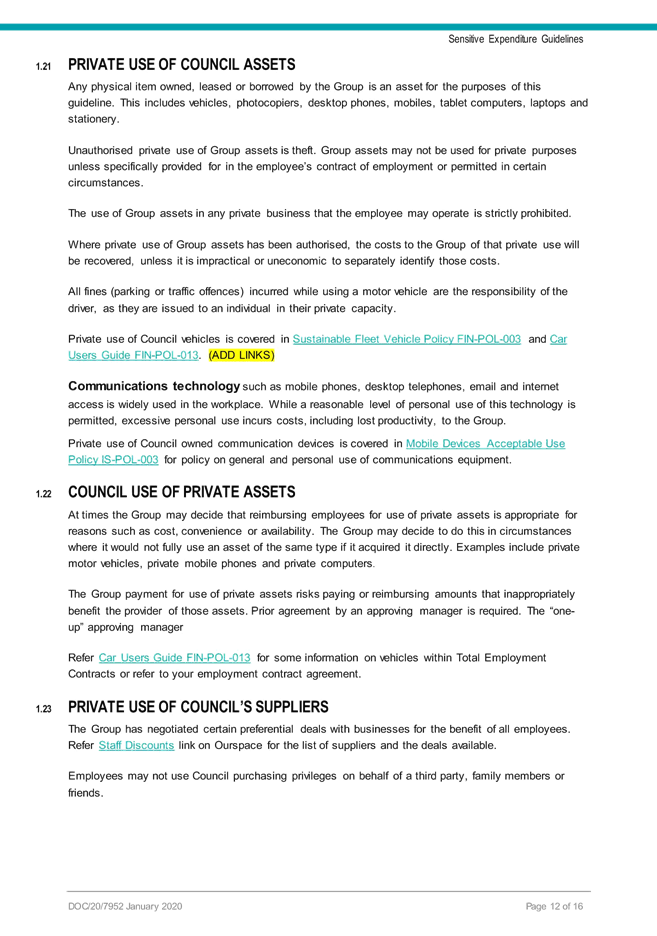

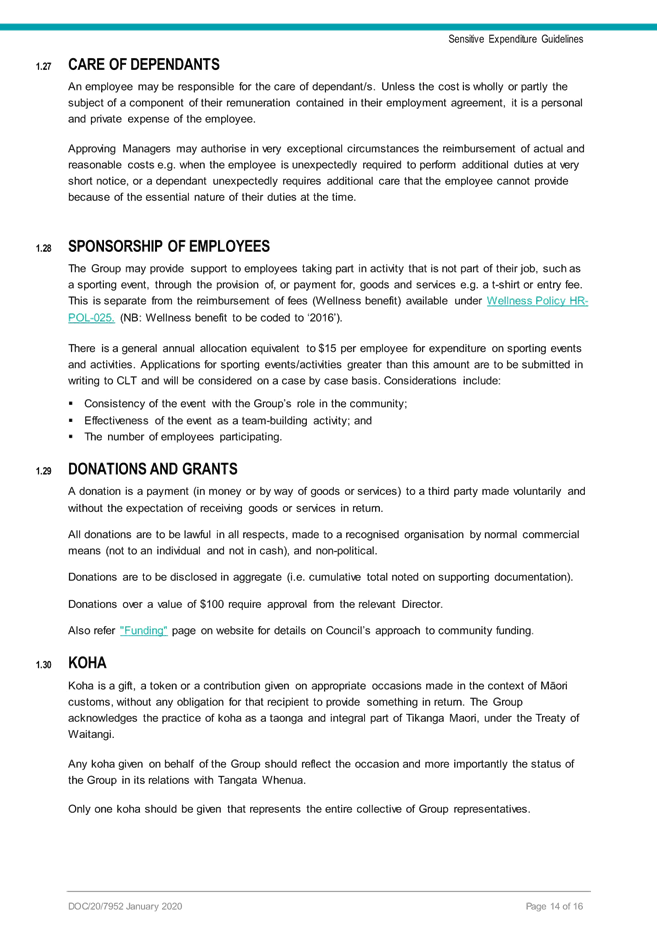
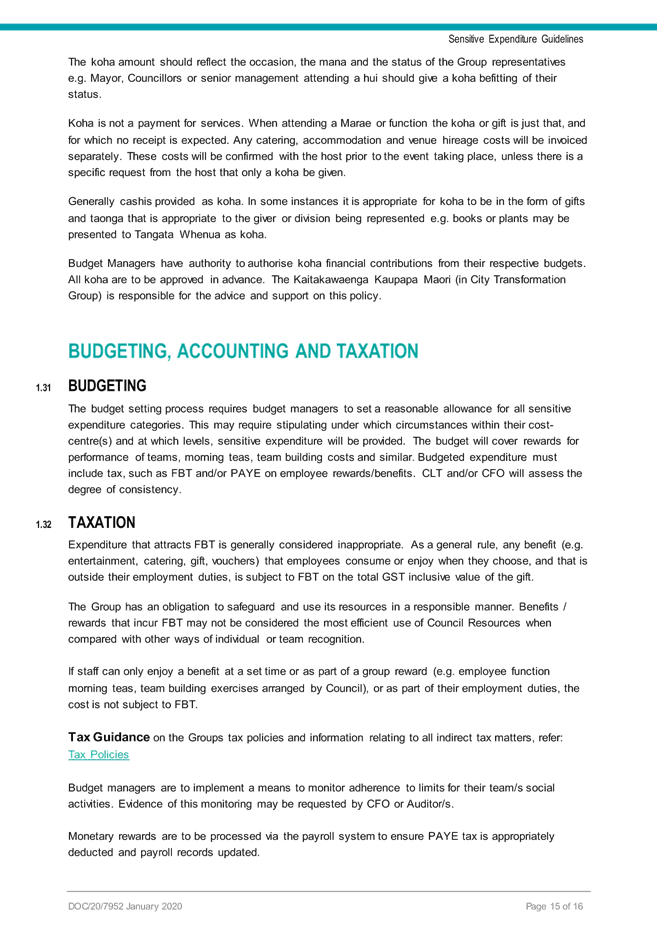

|
Attachment 5
|
Appendix 5: Sensitive expenditure disclosure
statements 1 July 2020 to 31 December 2020
|
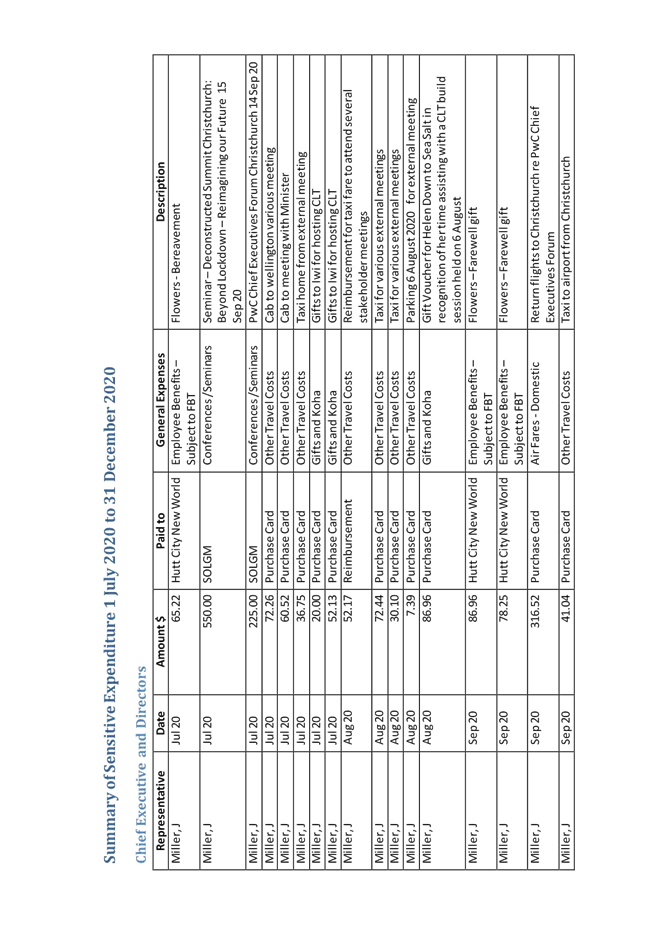
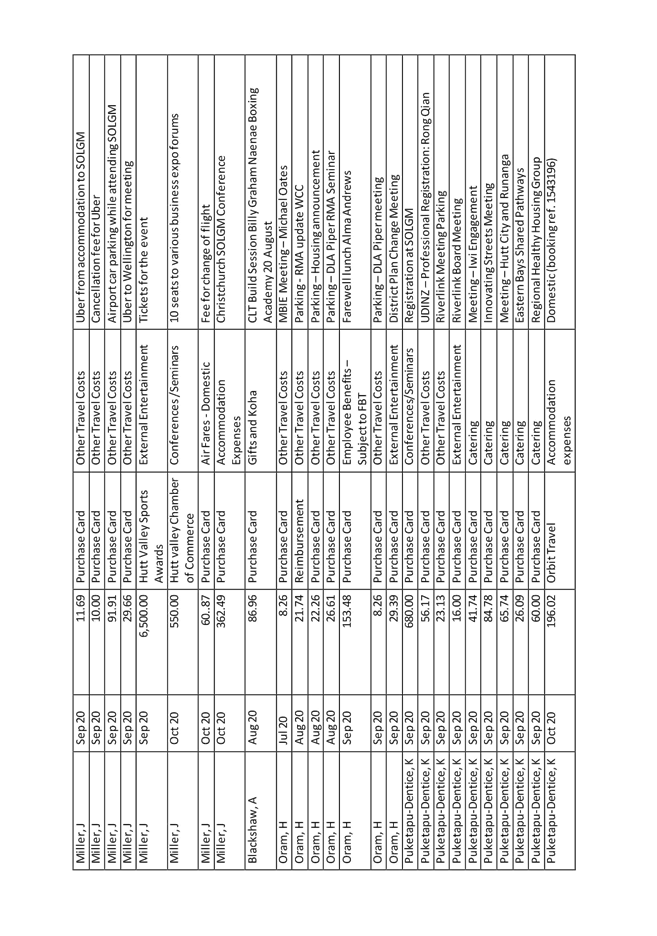




 Audit and Risk Subcommittee
Audit and Risk Subcommittee
07 April 2021
File:
(21/556)
Report no:
ARSC2021/2/84
Holidays Act 2003
Compliance
Purpose
of Report
1. The
purpose of this report is to provide a first formal report to the Audit and
Risk Subcommittee on Hutt City Council Holidays Act 2003 pay compliance.
|
Recommendations
That the Subcommittee notes
and receives the report.
|
Background
2. Compliance with the Holidays Act 2003 is a current issue
for many organisations in New Zealand. The Ministry of Business Innovation and
Employment (MBIE), through their Labour Inspectorate, are actively auditing and
mandating compliance through a number of instruments including Enforceable
Undertakings and Information Notices. An Enforceable
Undertaking is a voluntary commitment by an employer to address certain defined
breaches within a certain timeframe. If that does not happen, the
Employment Relations Authority (ERA) can issue a compliance order and if that
is not followed, then an order for penalties.
3. Hutt City Council run their payroll through the CHRIS21
system. There are approximately 600 employees being paid through this
system.
4. Given that
compliance with the Act is a current issue for many organisations across New
Zealand, Council has decided to complete initial discovery work to assess
compliance with the requirements of the Act. The following areas are
widely acknowledged as potential triggers for compliance failures:
a. Diverse
working arrangements (shift work, on-call employees),
b. Additional
remuneration arrangements,
c. Employees
working irregular hours; and employees receiving allowances.
5. In November 2020,
Ernst & Young (EY) was engaged by Hutt City Council to perform a scope of
work taking a sample group of 20 employees across the Council group, including
casual and terminated staff along with a mixture of current full time, part
time and temporary staff over a payment period of 104 weeks.
6. Attached as
Appendix 1 is a list of public and private sector organisations whom have
completed remediation work or are completing it currently using EY. This
provides an indication of the wide spread extent of the issues across New
Zealand.
7. At the Audit and
Risk Subcommittee 25 November 2020, the ‘Internal Audit Update’
report ARSC2020/6/286 included:
Ernst & Young have been engaged to undertake a
review of the Council’s compliance with the Holidays Act 2003.
At the meeting, it was advised that this initial discovery
work to be completed by EY had been delayed due to COVID and that the intention
had been to complete the work much earlier in the year. It was also advised
that if the EY discovery work was to conclude that there were risk areas that
further work would be required to investigate these further. Officers would be
aiming to estimate any potential liability ahead of the 30 June 2021 financial
year end and also progress remediation planning.
8. The conclusion of
EY findings were reported to officers in March 2021. The summary of
findings identified areas of risk, and inconsistencies or potential errors in
payroll existed when compared to references to the requirements of the Act.
Annual leave, BAPSF (Bereavement, alternative, public holiday, sick and family
violence) leave, terminations, casual employees and reporting have been
identified in the report as the areas of risk.
Next Steps
9. Officers are working
through reviewing the project governance structures that will be put in place
to manage the risk areas identified by the EY report. It is intended that there
will be regular project reporting to the:
- Corporate
Leadership Team
- Major
Projects Board (comprising the Mayor, Deputy Mayor and Chairs of Committees)
- Audit and
Risk Subcommittee.
The reporting is expected to cover key milestones including
estimation of the liability, business case development, procurement processes,
remediation works and payroll system corrections.
10. There are two core work
streams for the project;
- remediation
calculations
- and payroll
system or process corrections.
Officers estimate that the remediation calculation work
will take 6 – 9 months to complete. Current processes and policies will
need to be reviewed and updated in line with remediation work
outcomes.
11. In line with our Procurement
Policy officers plan to go through a tender process to select a vendor to
perform the remediation work. An initial rough estimate of external specialist
costs are in the range of $500,000 - $800,000. When the procurement process
proceeds then further information will become available here to support
decisions.
12. There will be internal
resource required to support this project including project governance and a
project team. A business case will also need to be completed.
13. Ahead of the end of the
financial year 30 June 2021, officers need to calculate the potential liability
of all remediation payments that will be made to staff. EY have suggested
performing recalculations over a larger sample size and extrapolating these
results. We are working through the approach to be taken to ensure that we are
able to recognise an estimated liability by the 30 June 2021. It is
important to note that at this stage the potential liability is unknown.
14. Engagement and communication
with the Union and MBIE will be required. We are intending to work with MBIE
through an Enforceable Undertaking which will set out the timelines and
delivery of the project (refer paragraph 2). It is expected that MBIE will
confirm our remediation methodology prior to the payment of employees.
15. System
corrections will be required in our payroll system, which will require
assistance from our software provider. Once the remediation work has identified
all areas of non-compliance then this can commence.
Climate Change Impact and Considerations
16. The matters addressed in this
report have been considered in accordance with the process set out in
Council’s Climate Change
Considerations Guide.
Consultation
17. Not applicable.
Legal
Considerations
18. EY have advised that there we
are a number of risk areas in our compliance with the Holidays Act 2003.
Financial
Considerations
19. There are a
range of financial matters raised in this report.
Appendices
|
No.
|
Title
|
Page
|
|
1⇩
|
Appendix 1 - Entities completing remediation work with
EY
|
276
|
Author: Helen Stringer
Financial Transaction Services Manager
Author: Lisa Rofe
Finance Systems and Projects Manager
Author: Kelly Alkema
Chief People Officer
Approved By: Jenny Livschitz
Group Chief Financial Officer
|
Attachment 1
|
Appendix 1 - Entities completing remediation work
with EY
|
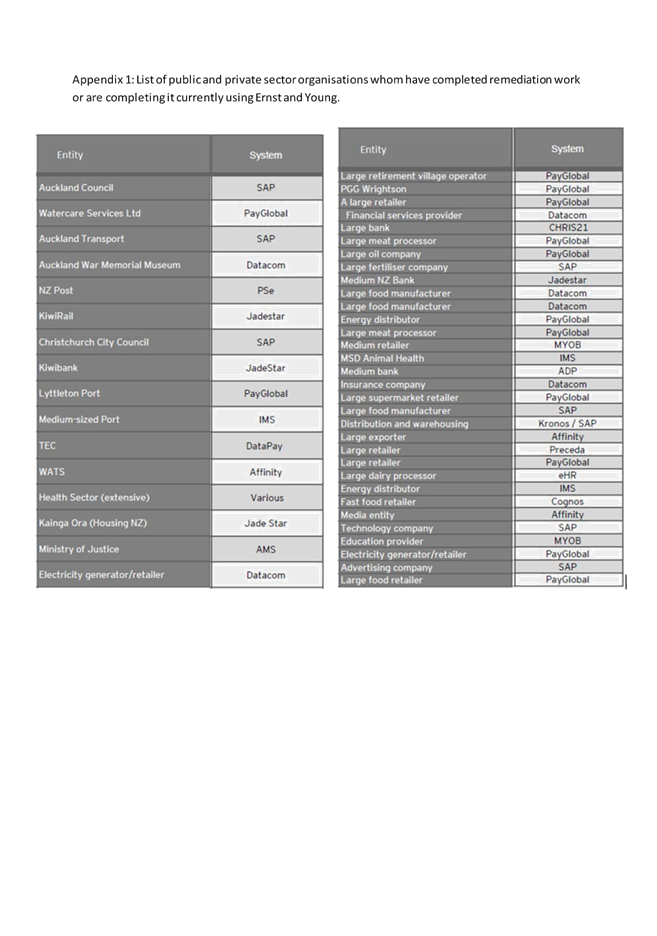
 Audit and Risk Subcommittee
Audit and Risk Subcommittee
22 March 2021
File:
(21/467)
Report no:
ARSC2021/2/85
Internal Audit
Charter and Internal Audit Plan 2021-2024
Purpose
of Report
1. To gain approval
from the Audit and Risk Subcommittee for the updated Internal Audit Charter and
the Internal Audit Plan 2021-2024.
|
Recommendations
That the Subcommittee:
(1) notes and receives
the information contained in this report;
(2) approves the Internal
Audit Charter, attached as Appendix 1 to the report;
(3) agrees with
prioritisation of the internal audits; and
(4) approves the Internal
Audit Plan 2021–2024, attached as Appendix 2 to the report.
|
Background
2. The
Risk and Assurance Manager provides an update quarterly on the actions and
activities around internal audit at Council. The Internal Audit Update was last
presented to Council’s Audit and Risk Subcommittee on 25 November
2020.
3. Internal
auditing is an independent, objective assurance and advisory activity designed to add value and improve an organisation's
operations. It helps an organisation accomplish its objectives by bringing a
systematic, disciplined approach to evaluate and improve the effectiveness of
risk management, control, and governance processes.
[Definition of
internal auditing from the Institute of Internal Auditors Professional
Practices Framework, which captures the fundamental purpose, nature, and scope
of internal auditing].
Discussion
Internal
audit charter
4. Attached
as Appendix 1 to this report is the updated Internal
Audit Charter, that establishes the internal audit mandate, scope of
work, independence and accountabilities.
5. The internal audit charter was last approved by the former Finance and
Performance Committee on 4 July 2018 (refer Link).
6. There are no
substantive changes. The 2018 Internal Audit Charter document has been updated
for designations and reporting line changes.
7. The internal audit
charter aligns with best practice and complies with the Institute of Internal
Auditors International Professional Practices Framework. The model template for internal audit activity
charter, is used by many internal audit
functions within New Zealand and internationally.
8. It is a
requirement of these auditing standards that the Charter is approved by the Audit
and Risk Subcommittee (or equivalent).
9. It
is proposed that the internal audit charter be reviewed and submitted to the
Audit and Risk Subcommittee (or equivalent) for approval at the commencement of
each triennium. This will reinforce Council’s commitment to ensuring
internal auditing can continue to function with independence and objectivity.
Internal
audit plan 2021-2024
10. Attached as Appendix 2 is the
draft Internal Audit Plan 2021-2024, as approved by the Corporate Leadership
Team.
11. The three-year internal audit
plan will be updated annually on a rolling basis for the approval by the Audit
and Risk Subcommittee to ensure ongoing relevance with Council’s risk
profile and priorities.
12. The internal audit plan was
last approved by the former Finance and Performance Committee on 17 July 2019.
13. The Internal
Audit Charter, updated and attached at Appendix 2 to this report, requires the
Audit and Risk Subcommittee to approve the internal audit plan .
14. The proposed plan was
developed through consultation with senior management to obtain an
understanding of the key risk areas, priorities, challenges, initiatives and any management concerns. The
plan has been reviewed and adjusted in response to changes in Council’s
business, risks, operations, programmes, systems and controls.
15. Further
details about the development of the plan and its prioritisation can be found
in the document attached as Appendix 2 to this report.
16. The
internal audit plan for the period to 30 June 2022 includes:
i. A
fraud risk review and fraud focussed data analytics (unusual transaction
analysis). This is a two yearly review, per the Fraud Policy. This is further
reinforced by the Covid-19 pandemic and a need to focus on integrity and
controls for managing the risks of corruption and fraud in times of emergency;
ii. Strategic
change / enterprise portfolio – a proposal of continuous monitoring
is to be developed, agreed and implemented;
iii. Privacy
management change review to analyse the implementation of new processes to
ensure compliance with the Privacy Act that came into effect from 1 December
2020;
iv. Sensitive
expenditure internal audit, which aligns to fiscal responsibility and OAG
best practice guides;
v. Cash
handling high level review around the consistency of processes across
facilities and systems;
vi. Accounts
Payable end to end review following the implementation of the new
electronic purchasing order processes; and
vii. Procurement
and contract management – following the
establishment of the Procurement Office and embedding of its processes.
Identified as an OAG priority area of focus for 2021: Understanding and
managing the risk of service disruption from the failure of strategic
suppliers.
17. Status updates and reporting
back with regards to progress against the internal audit plan is provided to
this Subcommittee in the quarterly Internal Audit Updates. Progress against the
Internal Audit Plan 2019-2020 was provided to this Subcommittee on 17 September
2020.
Internal
audit update
18. Some assurance activities to
note since the last internal audit update provided to this Subcommittee on 25
November 2020:
i. Ernst & Young
have issued the draft report around the discovery review of Council’s
compliance with the Holidays Act 2003 and officers are working to finalise
this. A separate report will be provided to this Subcommittee on 8 July 2021;
ii. PricewaterhouseCoopers
has been engaged to run fraud focussed data analytics/unusual transaction
analysis for the period 1 September 2018 to 31 January 2021. An update will be
reported to this Subcommittee on 8 July 2021;
iii. Audit New Zealand audit of
the Draft Long term plan 2021-2031 Consultation Document has been completed
successfully and was reported to the LTP Subcommittee 31 March 2021;
iv. IANZ Building Consent
Authority two yearly audit in February 2021. Some issues identified and
remediation action plans have been developed;
v. JAS-ANZ annual Quality
Management Scheme assessment for Food Regulations to visit the Environmental
Health team in April 2021;
vi. There have been no reports of
suspected or detected fraud, including no reports via the online reporting
Jotform.
Options
19. Not applicable.
Climate
Change Impact and Considerations
20. The matters addressed in this
report have been considered in accordance with the process set out in
Council’s Climate Change
Considerations Guide.
Consultation
21. Not applicable.
Legal
Considerations
22. Not
applicable. There is no legislation, regulations or guidance documents regarding internal auditing across the public sector in New Zealand
(or Australia). (As opposed to the requirement for external audit which form
part of the Public Audit Act 2001).
23. LGA2002 Principle 14.1(g) outlines that a local authority should ensure
prudent stewardship and the efficient and effective use of its resources in the
interests of its district or region.
24. Internal
audit is considered important to robust governance and the internal control environment.
25. The internal
auditing profession has a single set of global standards, covering all
countries, jurisdictions and sectors. These have not been adopted by the New
Zealand government.
Financial
Considerations
26. The activity proposed in the
internal audit plan is reliant on external resourcing, depending on the agreed
prioritisation. Budget will be prioritised within existing baseline budgets.
Appendices
|
No.
|
Title
|
Page
|
|
1⇩
|
Appendix 1: DRAFT Internal Audit Charter - 2021
|
281
|
|
2⇩
|
Appendix 2: DRAFT Internal Audit Plan (April 2021-
June 2024)
|
285
|
Author: Enid Davids
Risk and Assurance Manager
Approved By: Jenny Livschitz
Chief Financial Officer
|
Attachment 1
|
Appendix 1: DRAFT Internal Audit Charter - 2021
|
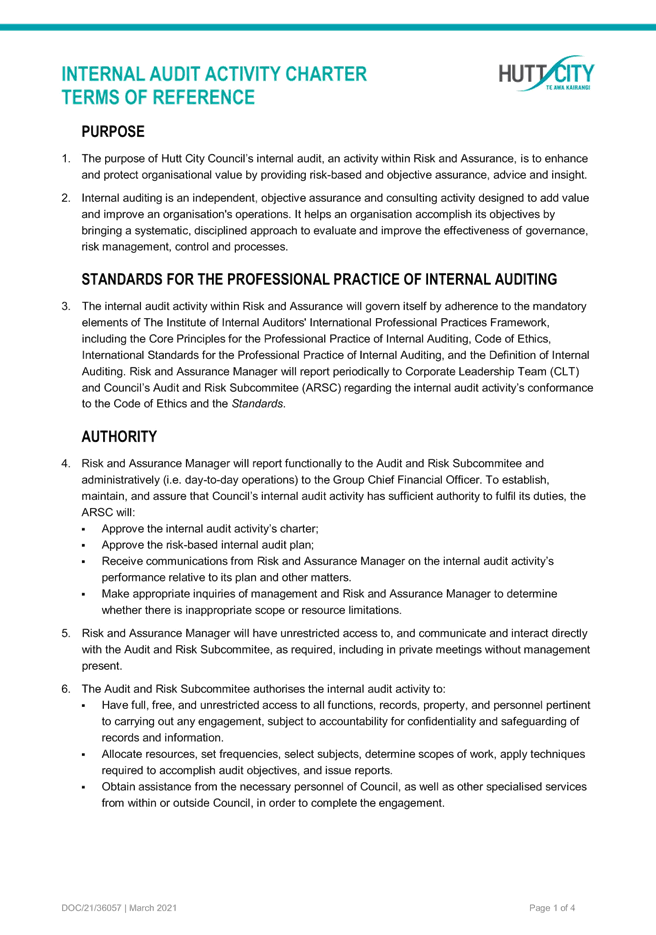
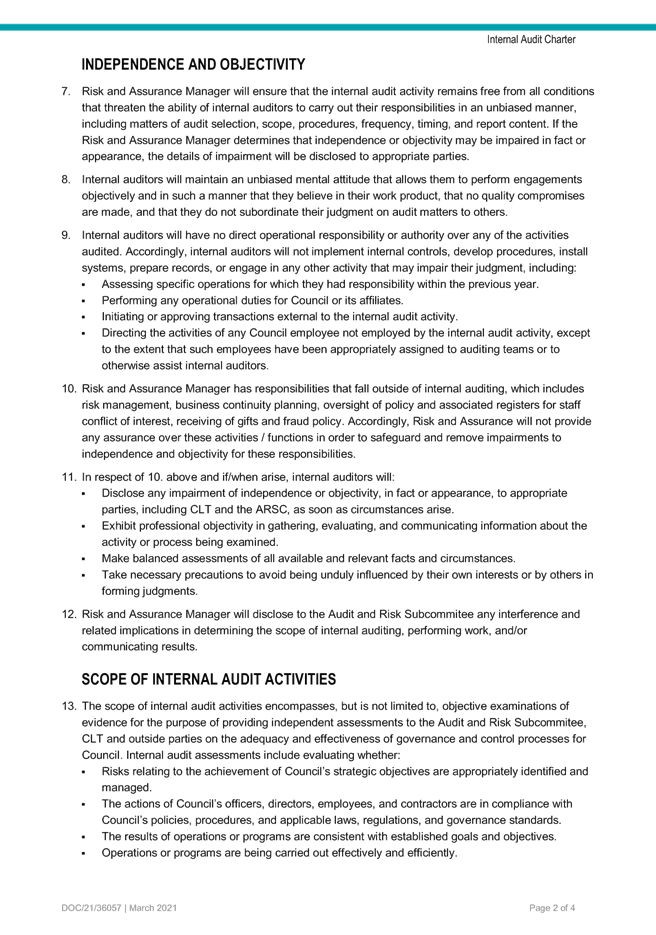
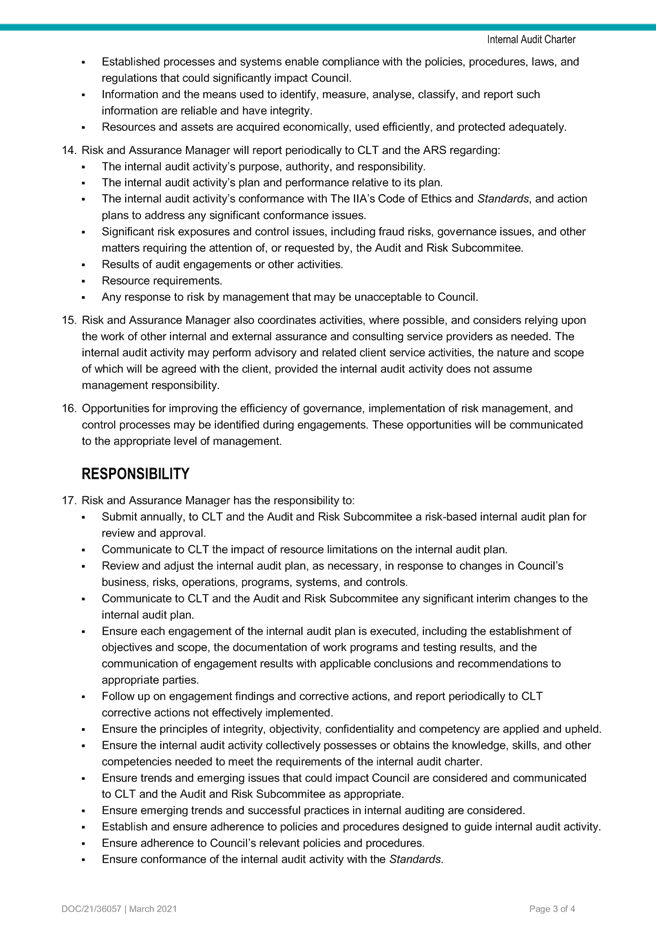
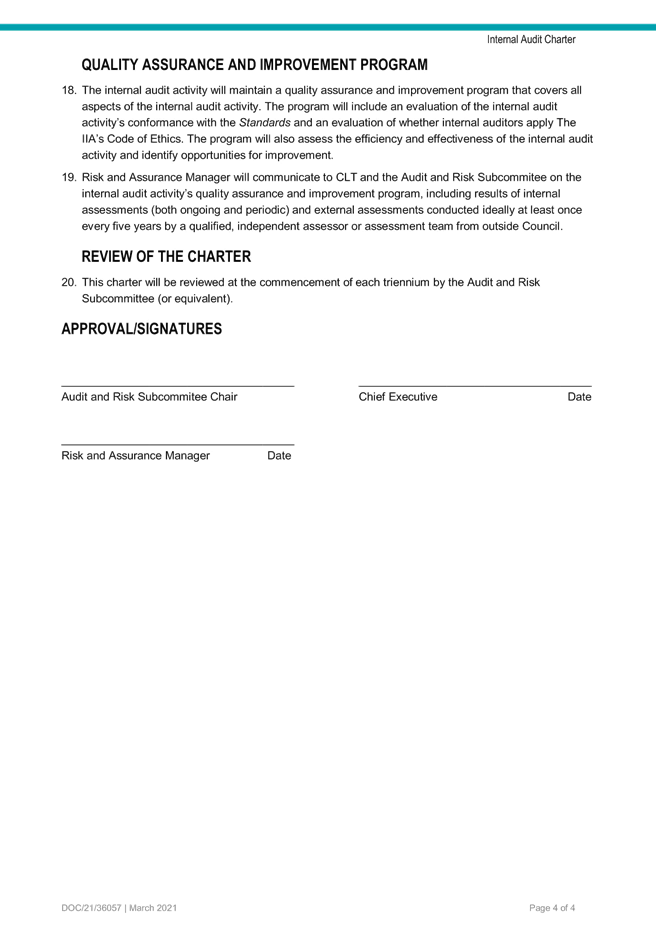
|
Attachment 2
|
Appendix 2: DRAFT Internal Audit Plan (April 2021-
June 2024)
|
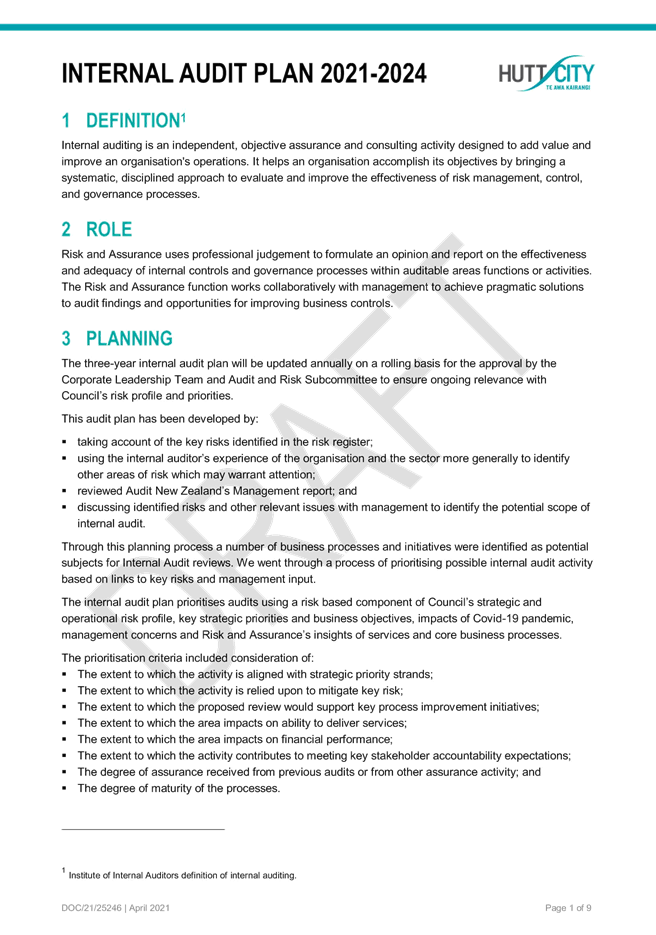
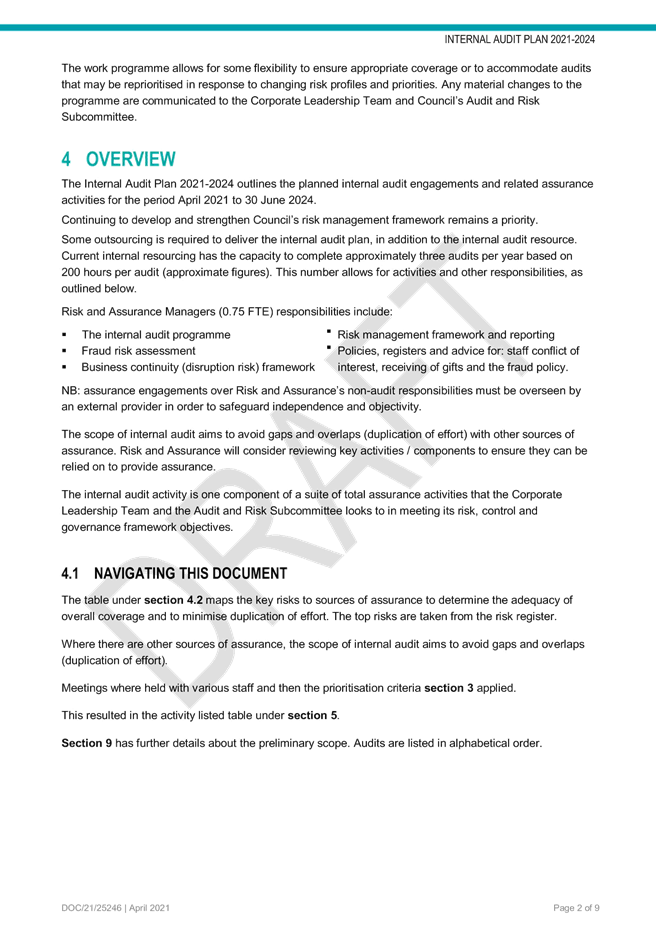

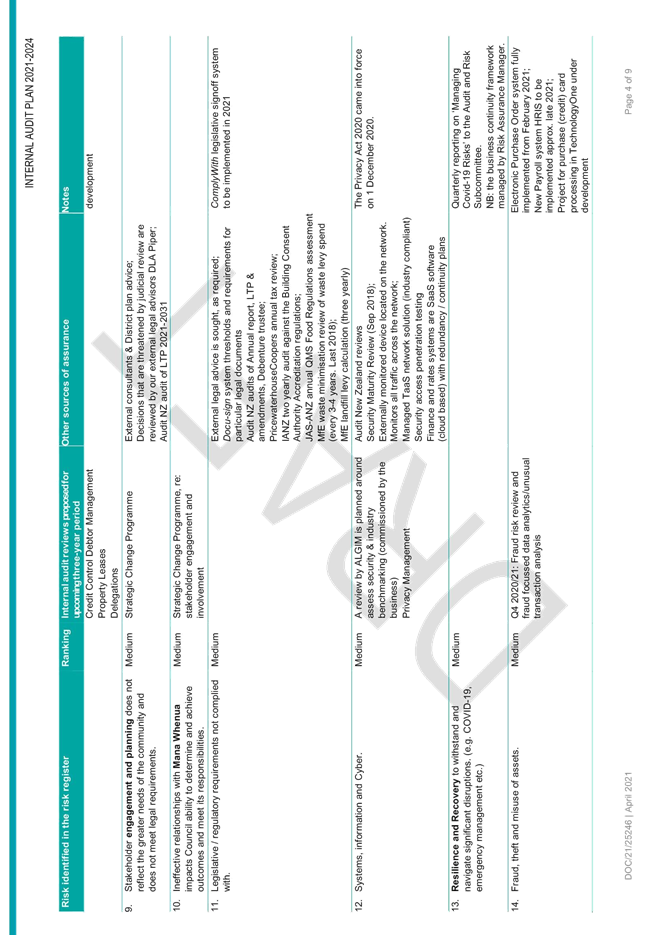
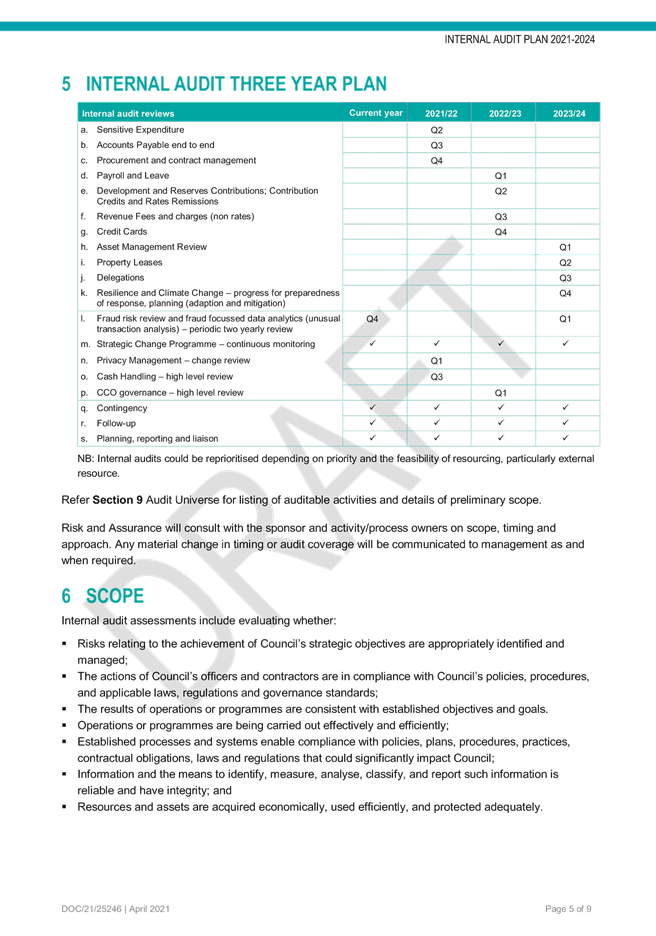
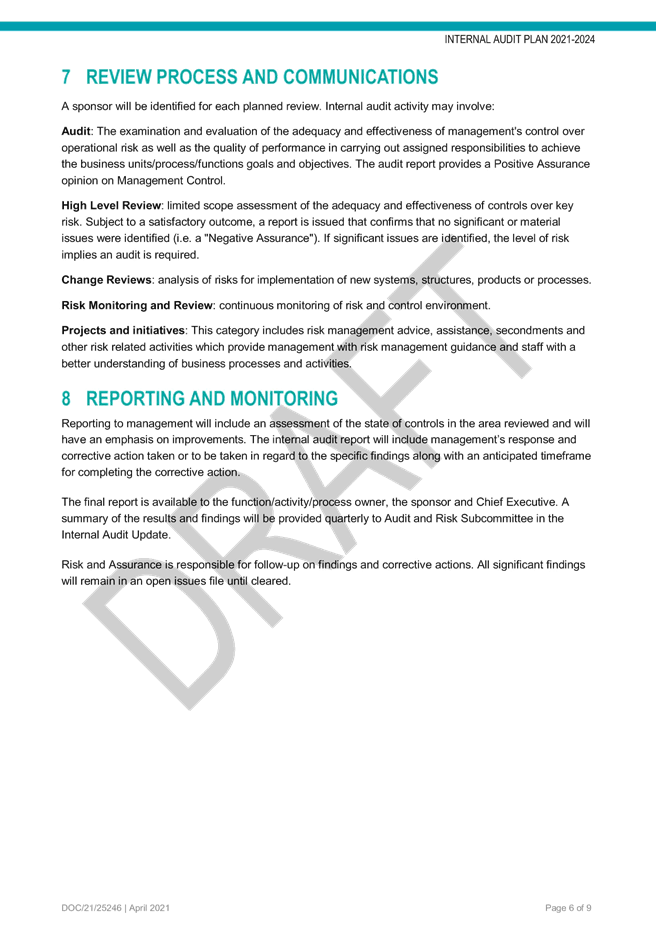
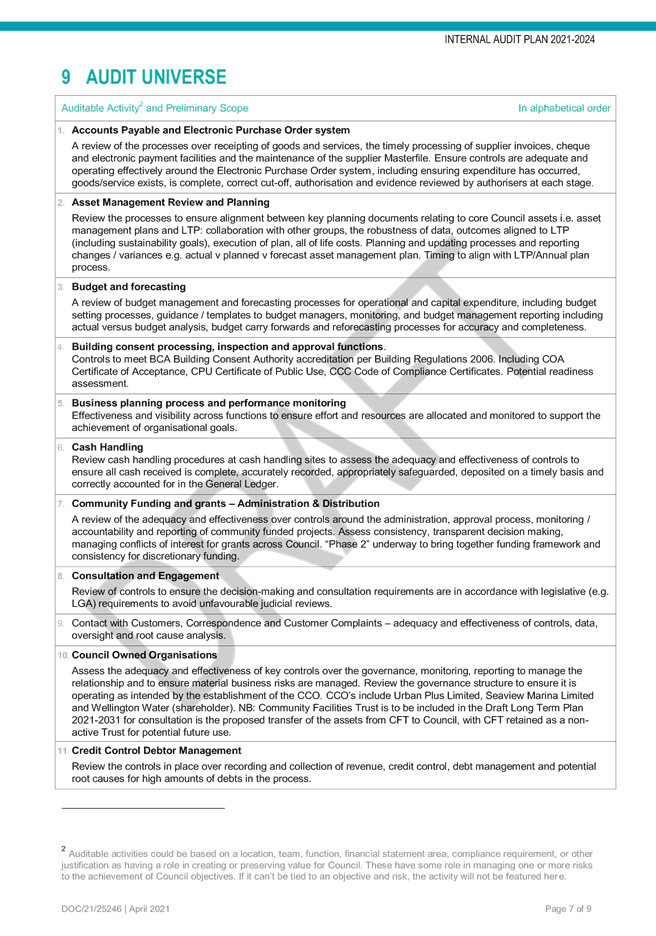
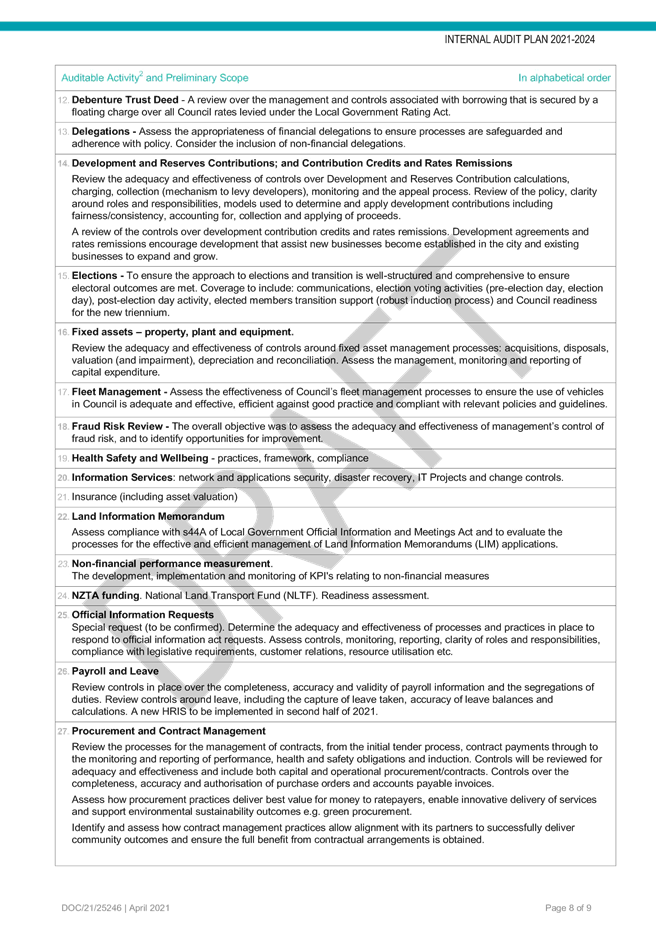
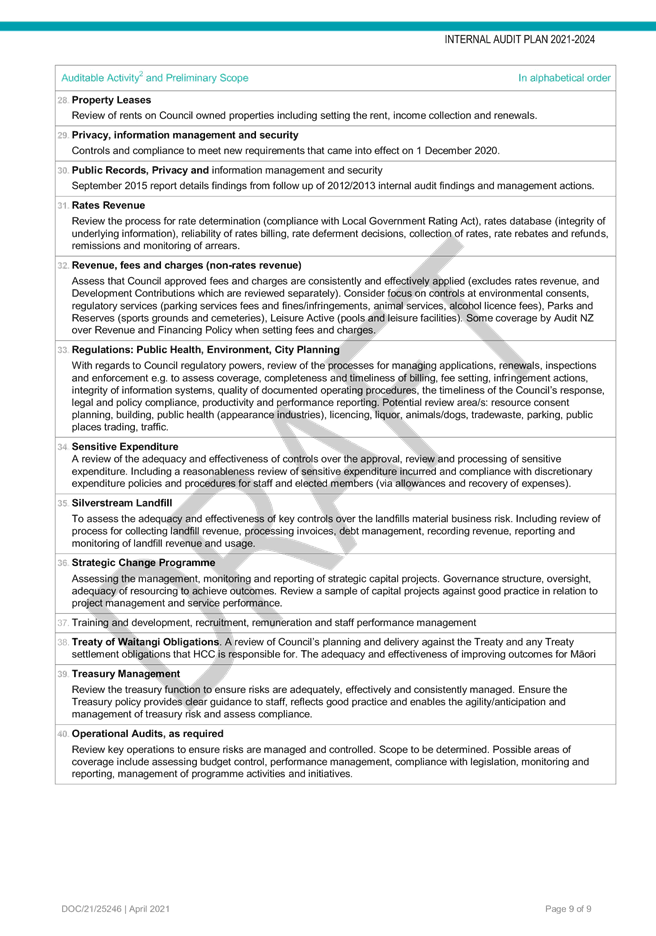
 Audit and Risk Subcommittee
Audit and Risk Subcommittee
15 April 2021
File:
(21/619)
Report no:
ARSC2021/2/98
Legal Compliance and
Litigation Risk Reporting
Purpose
of Report
1. To update the
Audit and Risk Subcommittee on the results of Council’s legal compliance
and litigation risk results for the months of January, February and March 2021.
|
Recommendations
That the Subcommittee:
(1) notes the results
outlined in the report; and
(2) notes that Council is
moving to a new legal compliance system called ComplyWith, which will produce
more detailed reporting every 6 months.
|
Background
2. This is the first
report on Legal Compliance and Litigation Risk to the Audit and Risk
Subcommittee.
3. Council currently
uses a manual, in-house process to report on Legal Compliance and Litigation
Risk. Traditionally, it has done this every month. However, we have
recently moved to quarterly reporting.
4. The compliance
aspect of this reporting asks four questions to approximately 40 officers with
legal delegations to act on behalf of Council. Those officers are
required to consult with staff reporting to them before answering questions.
5. The four questions
asked are:
a. Are you
aware of any breaches of legislation, regulations or Council policy obligations
relevant to your role and/or business area? If yes, please provide details
below;
b. Are you
aware of any changes to the legislative and regulatory requirements assigned to
your role? In respect of these changes, are systems/processes / policies being
amended accordingly to ensure ongoing compliance? Provide brief details here;
c. Are you
satisfied that processes are in place within your directorate/business group to
ensure compliance with legislative and regulatory requirements; and
d. Are you
aware of any potential or emerging legal actions relating to legislative or
regulatory compliance breaches? Provide brief details here.
6. Anything reported
is then assessed with the Legal Team and a decision is made on how to address
the matter reported on. The reality is that most matters have already
been raised and addressed and this reporting is another means of formally
recording the matter.
7. Anything that is
considered an actual compliance breach is reported in the Annual Plan as either
a significant or insignificant breach.
Discussion
8. For the months of
January, February and March 2021, the following matters where raised in
response to the questions asked:
a. Two matters reported on
the Information Technology area which on review are not legal or policy
compliance issues;
b. One matter reported on
from Finance, being the Holidays Act 2003 compliance, which is the subject of a
separate paper to this Subcommittee;
c. An isolated issue was
reported on by our Facilities Team, where they are working with a third party
to obtain a building warrant of fitness for a co-owned building, which is
currently overdue. The matter is being progressed and is not considered
to be of a threshold to make the Annual Plan reporting;
d. The upcoming replacement
of the Resource Management Act 1991 was raised as a major change to the
legislation Council is bound by. This is already a very well-known
upcoming change, which Council is monitoring closely;
e. A challenge to the
compulsory acquisition of some properties as part of the RiverLink Project was
raised as a potential future ligation matter. However, this matter has
already been the subject of judicial review, where the High Court upheld our
ability to acquire these properties. All that remains is a challenge over
the correct valuation of the properties; and
f. The Environmental
Consents Team raised one area where litigation was threatened by an applicant
for consent. This is a relatively low risk and cost matter, which is
known and being worked through.
9. In summary, the
only compliance issue raised that is considered to be noteworthy in the context
of this reporting is the Holidays Act 2003 matter, which is being reported on
separately to this Subcommittee.
10. The only significant upcoming
change to legislation raised was the replacement of the Resource Management Act
1991.
11. No sufficiently serious risk
of litigation was identified.
ComplyWith
12. From an audit perspective,
our legal compliance reporting has always “passed”. However,
officers have consistently raised the fact that our current method becomes
something of a “tick-box” exercise, over time. The Legal Team
considers the current method has the following issues:
a. High administration time
to ensure responses are recorded;
b. Low confidence in the
current format generating thoughtful consideration to legal compliance;
c. High reliance on business
areas to manually alert the council to legislation changes;
d. Low to no automatic
reporting ability of compliance;
e. No oversight of how our
subsidiary companies are adhering to legal compliance as their processes are
ad-hoc;
13. We reviewed the current
method against alternatives available in the market and have proposed a shift
to the ComplyWith, Legal Management Compliance Software, which we consider has
the following benefits:
a. It has been implemented
in local and central government across New Zealand, which provides a high level
of confidence in efficiency and successful delivery;
b. It should ensures better
adherence and performance to legal compliance;
c. It is a cloud based
solution which provides access anywhere, using multiple devices;
d. It is a simple
user-interface for users and admin for report building;
e. It allows traceability
and monitoring of non or partial compliance and how these are rectified.
Appendices
There are no appendices for this
report.
Author: Bradley Cato
Chief Legal Officer
Approved By: Jo Miller
Chief Executive
 Audit and Risk Subcommittee
Audit and Risk Subcommittee
07 April 2021
File:
(21/573)
Report no:
ARSC2021/2/86
Seismic Performance
Register
Purpose
of Report
1. To provide a six-
monthly update to the Subcommittee on Council’s programme of work to
assess the seismic strength of Council-owned buildings.
|
Recommendations
That the Subcommittee notes
the information contained in the report.
|
Background
2. Six-monthly
reporting to the Audit and Risk Subcommittee is now in place. No matters have
arisen over the period that would require more regular reporting. Note a
separate paper on Petone Wharf Refurbishment is included on the agenda for this
meeting.
3. Council published
a seismic performance register in November 2019 which lists council-owned
buildings, identifies their seismic rating and links to the latest engineering
assessment report. The register was developed to ensure a whole of organisation
view of Council buildings and that information was readily available to the
public. A link to the register can be found here: http://huttcity.govt.nz/seismicregister
4. An operational
management policy is in place to provide staff with a framework for undertaking
engineering assessments for Council buildings. A copy of the
policy can be viewed here.
Discussions are underway with CCOs on the status of the buildings they own and
occupy.
Update
on status and key actions taken
5. Since publishing
the register, assessments have been added as they are completed. Some buildings
that were originally on the register have now been removed following
engineering advice from WSP that assessments are not required. This includes
mainly public toilets, small kiosks and some changing rooms. The rationale for
this is that these structures present limited risk to the public due to being
single level, construction occurred post 1976 when the first significant
seismic codes were introduced in New Zealand and that occupancy is low. Council
is maintaining a list of these buildings, but has removed these from the
website link above.
6. Council has a
number of buildings or spaces that are classified as earthquake prone, i.e.
<34% NBS.
7. Wainuiomata
Outdoor Swimming Pool changing room: The changing room has been strengthened to
70% NBS. Information on our website has been updated and it has been removed
from the EPB Register.
8. Walter Nash
corridor: The work on the corridor has been completed and a Certificate of
Public Use has been issued. We are awaiting the final inspection to receive a
CCC. Once this is received we will receive a new NBS rating and the website
will be updated and the building will be removed from the EPB Register.
9. Little
Theatre: Work to strengthen the Little Theatre has been completed with a
new rating of 40% NBS. The Little Theatre is open for business with bookings
being made. The website has been updated and the building has been removed from
the EPB Register.
10. War Memorial Library: The War
Memorial Library is rated at 40-45% NBS which means it is not earthquake prone.
The engineering assessments have identified parts of the building that could be
improved by strengthening work.
11. Discussions with the
structural engineer and primary contractor concluded that the works cannot be
strengthened separately as they are not independent of each other.
12. The Corporate Leadership Team
will consider a paper later this month on the timeframe for undertaking
strengthening and other remedial work (HVAC, roof replacement and asbestos
removal).
Lower
Hutt Strong Motion Station Site Characterisation
13. An earthquake engineering
researcher at the University of Canterbury is currently working on a project to
characterise the soil at various GeoNet strong motion station (SMS) sensor locations
nation-wide with a focus placed on the Hutt Valley. In Lower Hutt, the
University has identified twelve locations suited to planned site
characterisation methods and one is Petone Library and the other is the
Pavillion (where the Hutt Emergency Operations Centre is located).
14. The proposed work is part of
a greater study by the University of Canterbury, University of Auckland, and
QuakeCoRE focusing on improving seismic resilience in Aotearoa New Zealand. As
part of these efforts, the University is characterising the soil profiles at
the locations of GNS Science/GeoNet strong motion stations (SMS) across the
country, using geotechnical and geophysical testing methods. SMSs are sites
where GeoNet has installed instruments that record earthquake ground
accelerations. The research team is collaborating with GNS Science/GeoNet for
this work. This work will support the ongoing 2020-2022 programme to update the
New Zealand National Seismic Model.
Consultation
15. There are no consultation
implications arising from this report.
Legal
Considerations
16. There are no legal
considerations arising from this report.
Financial
Considerations
17. There are financial
considerations arising from this report. See section 12 above.
Climate
Change Impact and Considerations
18. The matters addressed in this
report have been considered in accordance with the process set out in
Council’s Climate Change
Considerations Guide
Appendices
There are no appendices for this
report.
Author: Alannah Laban
Acting Facilities Manager
Author: Caryn Ellis
Head of Chief Executive's Office
Approved By: Kara Puketapu-Dentice
Director Economy and Development
 Audit and Risk Subcommittee
Audit and Risk Subcommittee
08 April 2021
File:
(21/581)
Report no:
ARSC2021/2/58
Audit and Risk Work
Programme 2021
|
Recommendation
That the work programme be received and noted.
|
Appendices
|
No.
|
Title
|
Page
|
|
1⇩
|
Appendix 1: Work Programme - Audit and Risk April 2021
|
302
|
Author: Toi Lealofi
Democracy Advisor
Approved By: Kathryn Stannard
Head of Democratic Services
|
Attachment 1
|
Appendix 1: Work Programme - Audit and Risk April
2021
|
